Over the mountains to traditional villages and imposing forts (35)
السلام عليكم - as-salāmu ʿalaikum, have some tea with us! A few women beckon us to join them. They are sitting with their children in front of their house on large mats eating dates and drinking tea and the aromatic Arabic qahwa (coffee), which is enhanced with cardamom and has a strong taste. While looking for the right direction, we have already passed them twice and with our fully packed bikes we are anything but anonymous in this part of Oman and cycling through a village unnoticed isn’t possible. Of course, we accept their invitation and sit down with them in the shade and talk with hands & feet and Lisa's basic Arabic. So far, we could communicate surprisingly well in English in Oman, but as soon as you get away from the more touristy places, learning a few Arabic phrases helps a lot. After our detour to Musandam, we are now on the densely populated, flat and fertile Batinah Plain between the Hajar Mountains and the Gulf of Oman. We cycle along the coast from village to village and are invited every now and then for a tea, a rare opportunity to get in contact with the Omani women. Many of them wear colorful long dresses, often decorated with embroidery, and combine it with a matching headscarf. If the women are out and about in the city, they wear a black overdress, an abaya.
We are generally surprised how traditionally the people in Oman dress, even the children. We see the guest workers from Asia running around in T-shirts and jeans, but the Omanis are still wearing their elegant robes. The men are seen dressed in a long and often white robe called dishdasha. A tassel dangles from the collar, dipped in perfume, and no man leaves his home without a hat, which of course Dario particularly likes. Either the men wear a turban or then the kumma, a chic embroidered round cap that comes in a wide variety of colors and patterns. Traditionally, this outfit would also include a curved silver dagger, called khanjar.
Soon we also learn what the Omanis prefer to do on the weekend. One of the favorite pastimes seems to be spending the evening or the whole night on the beach, preferably by car. The first nights on the Omani coast are therefore not very relaxing, as we are often surrounded by other people until late in the evening, having a picnic on the beach, drinking tea or often just sitting in the car and looking at the sea. We soon have enough of the coast and turn inland towards the mountains to Rustaq.
On the way there we make a detour to Wadi Al Hoqain and see our first dromedary on our cycling trip. Even though it’s already getting dark, a family is still having a picnic at the wadi below. We decide to pay more attention to the weekend days and try to spend those days in less popular places (not at the beach and not at a wadi). Although we appreciate the company very much, sometimes we are very exhausted from cycling in the evening and just want to relax. Luckily, we find a quiet spot directly on an idyllic wadi this evening, even though we have to push our bicycles through the water and over some stones to get there.
Generous hospitality in Rustaq
We continue along the wadi and pass villages and date palm plantations and we quickly forget the effort. In the city of Rustaq we meet Saif, whom we got to know through the platform Warmshowers. We planned to spend a night with him and his family, but since he has no room at his place, he immediately puts us up in the only hotel in town and also pays the room for us. This has never happened to us before, we are speechless. And once again we have to learn to be guests and to accept, even if it’s hard for us and we know that we can't give back this incredible hospitality to the same extent. Saif works as the manager of a call center in Muscat and although he still has to go to work that same night, he takes the time to show us around Rustaq.
We visit a Halwa factory and learn more about this sweet and popular specialty, which (unfortunately) has nothing to do with the Halva we know from Turkey. Omani Halwa is a sweet, jelly-like mass that is served on religious holidays and has been made for centuries. Ingredients include lots of sugar, water, rosewater, nuts like almonds and pistachios, and various spices such as cardamom and saffron. The mixture is stirred for two hours and then dried. Meanwhile, machines take over the strenuous work, but the production of Omani Halwa is still firmly in the hands of small family businesses and many towns have their Halwa-makers and the locals know exactly where to get the best Halwa. We ended up in a completely unassuming factory, which we would never have found without Saif. We taste the fresh warm Halwa, that is decorated with nuts and filled into bowls. It’s very sweet and tasty and of course we immediately get two boxes for the trip, resistance futile. But the day is not over yet and Saif takes us on a panorama jeep tour in the late afternoon to the Wadi Sahtan with its striking rock arch. We are absolutely touched by his hospitality and are amazed when he actually drives to Muscat after this full day to start his night shift.
Phenomenal off-road route from Rustaq to Al Hamra
The next morning Saif picks us up early again at the hotel, although he’s been working all night. He wants to take us with his jeep over the Hajar mountains, respectively up to the 2000 m high pass. Of course, it appealed to us to cycle this route ourselves, but we would have needed at least two days for it and besides, we heard that the route would be much better passable by bike from the other side. Therefore, we accept Saif's offer gratefully and strap our bicycles on the jeep and set off on an absolutely spectacular road trip over the Hajar mountains. Soon we are relieved that we don’t have to cycle ourselves as the partly deep sandy road is incredibly steep. The road leads along narrow rockfalls and often there is no room to let another vehicle pass. The further we move towards the pass, the more daring and steep the curves become and we would have just pushed our wheels. From the jeep, however, we can really enjoy one of the most scenic stretches in Oman.
On the way we stop at Wadi Bani Awf, a magnificent gorge with high rock walls. Villages with date plantations cling to the edge of the wadi and we get a glimpse of rural life beyond the populated plain. A little further up, we pass Bilad Sayt, which is probably one of the prettiest villages in the country with its postcard-perfect combination of terraced fields and traditional houses. Especially impressive is the sight of the Snake Gorge, which digs deep into the rocks and would probably make a wonderful hiking destination with its narrow paths. How we would have loved to spend a few days in this area, but unfortunately our stay in Oman is limited to 30 days with our tourist visa and we cannot take as much time as in the previous countries. After more than four hours of driving we reach the windy and exposed viewpoint Sharaf Al Alamein at about 2’000 m and look down on a barren moon-like rocky landscape. We say goodbye to Saif, who is now driving back to Rustaq and has to go back to work right afterwards. We ask ourselves whether we would have taken so much time for guests in Switzerland, if we were involved in the normal working day. We fear probably rather not and intend to take as much as possible of this journey with us and to integrate later into our everyday life. Thanks again, Saif!
Traditional irrigation channels and date plantations
On the other side of the pass we descend on a much more comfortable asphalt road and reach the village of Al Hamra and after a last crisp climb the small village of Misfat al Abriyyin, where we want to take a break. It’s one of the few traditional villages in Oman that is open to tourists and yet we see a lot of signs here that point out the dress code. Sleeveless tops and shorts are frowned upon. Although there are no dress codes for tourists in Oman, as a woman I feel much more comfortable with long clothing, even when we are on the road by bike. Still, there is something off-putting about being told every few meters to dress correctly.
We’re looking for a restaurant and are disappointed. In the small village of Misfat al Abriyyin there are four (!) modern coffee shops with good coffee machines, which offer great cappuccinos and cakes, but only one small restaurant, which is closed in the evening. The picturesque village with its terraced stone houses between date palms would be perfect for a nice restaurant with a roof terrace. Certainly, more tourists would decide to stay in the charming small family-run guesthouses and not just make a quick day trip to the village if there’d be more eating options. We meet Krista and Andrew, who are currently living in Dubai and are making a short trip to Oman. We drink good coffee together with them under date palms and talk about our travels. So far, we have not encountered many tourists in Oman and we are happy to meet them.
Afterwards we take a walk through the plantations along the irrigation channels, the falaj. This unique irrigation method came to southern Arabia more than 1000 years ago probably by Persian conquerors and it was the only way to survive in an arid area like Oman. Canals dug into the earth transport groundwater from underground wells or the wadis to the fields. One falaj supplies only a single family, while other canal systems bring water to hundreds of landowners. Typically, the water belongs to a community of farmers, and each is allocated a share of water based on the size of the agricultural land they farm and their contribution to the construction of the canals. Certain falaj are also operated and maintained by the government. The soothing sound of the water accompanies us as we explore the surroundings under date and banana palms.
From Misfat it would not be far to the highest mountain in Oman, the Jebel Shams (3028 m). The landscape up there should invite to spectacular hikes along a canyon. But unfortunately, time is a bit short and we decide to visit Al Hamra and then continue towards Nizwa.
Al Hamra is settled on the foot of the mountains and is one of the oldest villages in Oman. We visit the ruins of the abandoned old town. In Oman, natural building materials such as wood and stones were used and clay was mixed with straw for plaster. This provided a cooling effect in summer, but wind and rain put a strain on the mud and it would always need some touching up, so it's not surprising that we see many dilapidated two- and three-story mud houses in the old village center. You can see the strong contrast between the newly plastered houses, some of which are still in good condition, and the old houses that haven’t been restored. We like the traditional architecture very much, especially the built-in niches we find ideal as storage areas and so much nicer than the IKEA BILLY bookcases that are pretty common in Switzerland.
In a museum we get an insight into the life behind the walls of a rich family. In the living room, the Majlis, we can drink coffee, eat dates and we learn more about the traditional production of coffee, bread and natural cosmetics made of sandalwood. Dario takes the opportunity to practice being a wealthy Omani and it suits him quite well.
Sweet death by dates
In the city of Bahla, we meet Jamaal at a crossroads. Jamaal comes from Yemen and has visited all Sultan Qaboos mosques in Oman by bike in the past, and there are quite a few, as you might imagine. He now lives with his family in Ibri and invites us to his home, which is still 150 km away. However, we promise to visit him should we come back to Oman.
We visit the massive fortress of Bahla, whose fortification walls are among the longest in the world and stretch through the whole wadi. Built by the Bani Nebhan tribe who were dominant in the area from the 12th to the 15th centuries, it was granted UNESCO World Heritage status in 1987 and reopened after many years of restoration. When we return to our bikes, we find Jamaal waiting for us. He has now finished work and wanted to see us again. He came extra to the fort, guarded the bikes and bought us a bag of groceries for the onward journey. Once again, we get to experience the legendary hospitality in Oman and once again we wish we could give back something more than just our stories and smiles.
We spend the night very close to the Jabrin Castle (1670), which rises imposingly from the plain. And even if you have visited enough fortresses in your life, Jabrin is definitely worth a visit, as it’s one of the best-preserved fortresses in the country. Originally, the palace was built as a residential palace and summer residence, but then subsequently expanded into a fortress with defensive walls and towers. As usual, there are few other visitors and we can see everything at our leisure. A falaj runs through the building and directly supplied the inhabitants with water. Inside the extensive fortified walls there is much to discover, especially beautiful are the elaborately painted wooden ceilings, often decorated with floral motifs.
The various rooms seem to spring illogically from different courtyards and there are also some hidden rooms from where you could listen to the conversations in the living room. And as we explore the various rooms, we notice a special detail: a slit-like opening in the ceiling above important access points. These shafts or so-called "murder holes" were a nasty defense strategy, as hot date juice was poured here on the intruders. Quite a few enemies must have come, because there is a large-scale date store in Jabreen Castle. The fruits were stored in such a way that the escaping juice could drain off and be collected in clay pots. The date was therefore valued not only as a source of energy rich in sugar, but also a deadly weapon to trounce a marauding army.
The bleating end of the week in Nizwa
We arrive in the former capital Nizwa just in time for the week's highlight: the animal market. The authentic market is the meeting place of the region and every Friday morning Omanis gather to haggle loudly over goats, sheep and cattle. And in unusual occasions, a donkey is sold on the market (it’s that rare that it actually made it all over social media the last time it happened). The owners present their animals around a circular pavilion to potential buyers and to some tourists. And even if the authentic image of bearded men with turbans and daggers is somewhat marred by the snapping of cell phones and cameras, it’s definitely a unique experience to be here.
We get up extra early and at 6 am we’re already at the goat market. We drink sweet Karak Tea and watch the first animals being brought to the market by the farmers and shepherds from the surrounding towns and mountain villages. It doesn’t take long and the first potential buyers appear. Also a few women are there, but they stay apart from the action and fix the prices with their husband. At 7 am the bidding starts and the sellers are making their round with their animals. Again and again the spectators shout and wave the owners with their animals over to place their bids. The animals are investigated closely, the ribs are checked and the teeth examined before making a decision. Then the negotiation begins, often involving a brief phone call to the wife who has the last word in the purchase. The exchange of words is brisk and short, and once an agreement is reached, a purse is quickly pulled out of the dishdasha, the bills are flipped over, and the animals unwillingly change hands. It doesn’t take long and next to us stands a freshly bought goat. The buyer has paid USD 70.-, a good price according to him. We’re in the middle of the bleating spectacle and at some point our heads are buzzing with goats and sheep.
Right next door in the extensive Nizwa Souq, the hustle and bustle and trading continues for several hours. Here you can stock up on spices, fresh dates and vegetables. Of course, there is also a Halwa Hall at the market and the most diverse variations of the popular sweet dish can be sampled free of charge. We stroll back through the old part of town to our accommodation. In the pretty old town of Nizwa, some residential houses have been converted into boutique hotels, but many other traditional houses have been left to decay. That’s a pity as the old town definitely has charm and it would be worthwhile to restore even more houses.
Nizwa is the second largest tourist hub in Oman, but this doesn’t mean that the infrastructure is developed accordingly. In search of a meal, our only option is to go to a simple Indian restaurant. The food there is tasty and cheap, only the atmosphere doesn’t quite correspond to our idea of a cozy meal. As already mentioned, the Omanis like to make trips with their cars and not only to idyllic places, but also to the restaurant. The locals only have to honk loudly upon arrival and the waiter then rushes outside and takes the order. Getting out of the car is not even necessary. And that leads to us tourists polishing off our plates of lentil curry with rice on a wooden bench, while engines run around us and horns are honked constantly. A typical dining experience à la Oman.
In the afternoon we visit the 17th century Nizwa Fort, famous for its distinctive 40m-tall round tower. From the walls there is a magnificent view of the city, the date plantations and the Hajar Mountains in the background. In the courtyard we meet a group of curious women from Kuwait who have just completed a mountain marathon in Oman and are a bit exhausted. They are very interested in our trip and invite us to Kuwait, although they themselves think that their country hasn’t much to offer except desert. Unfortunately, it’s also not exactly on our way. But the encounter with these confident female athletes impressed us.


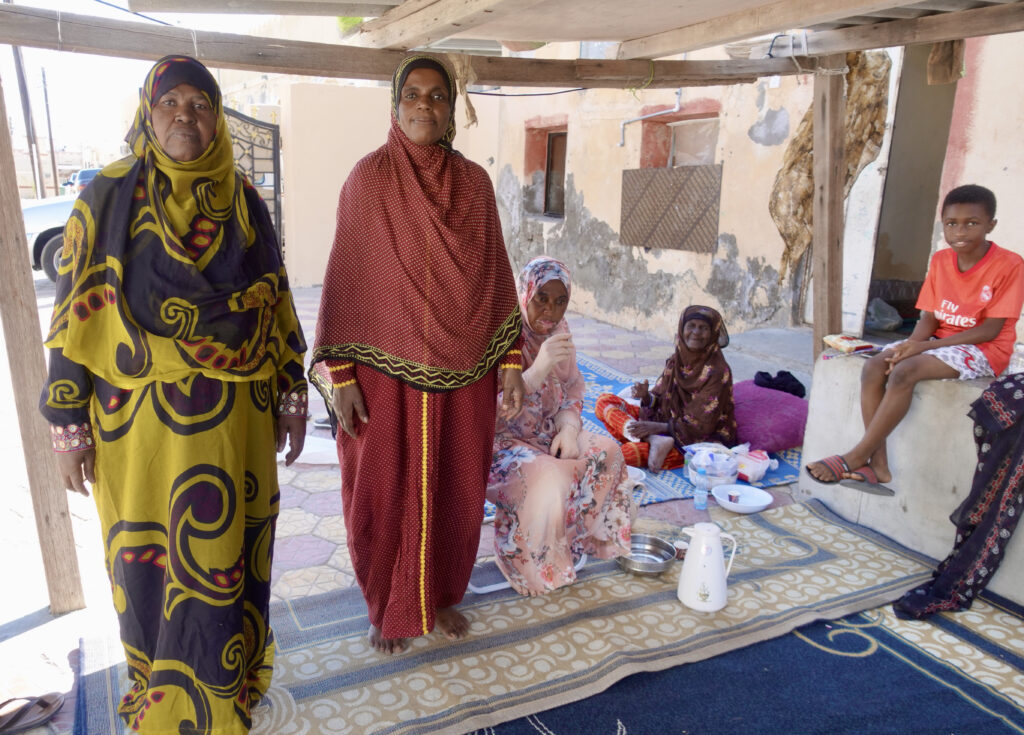
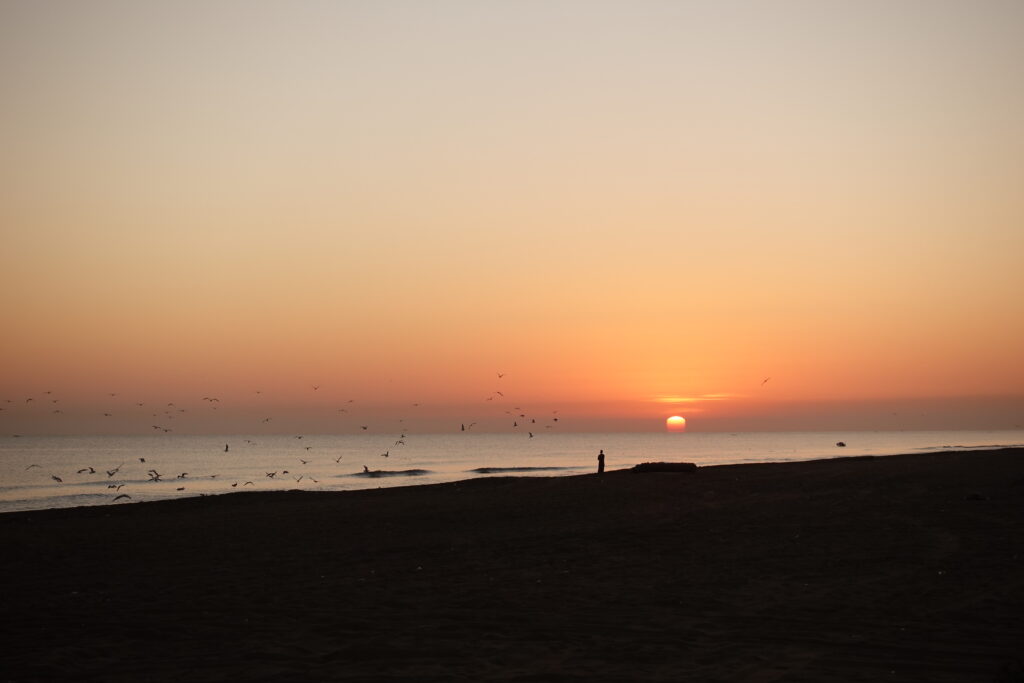

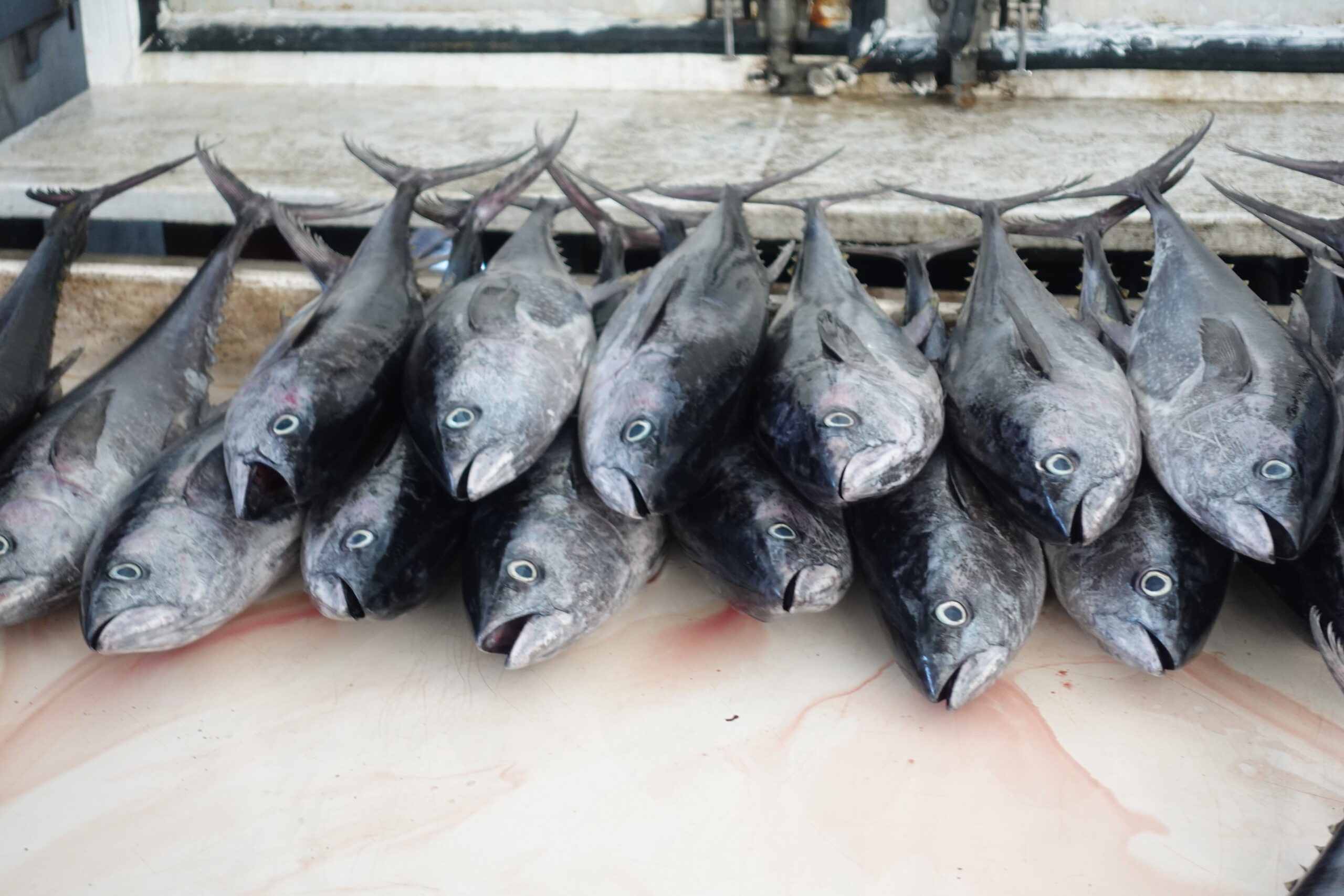

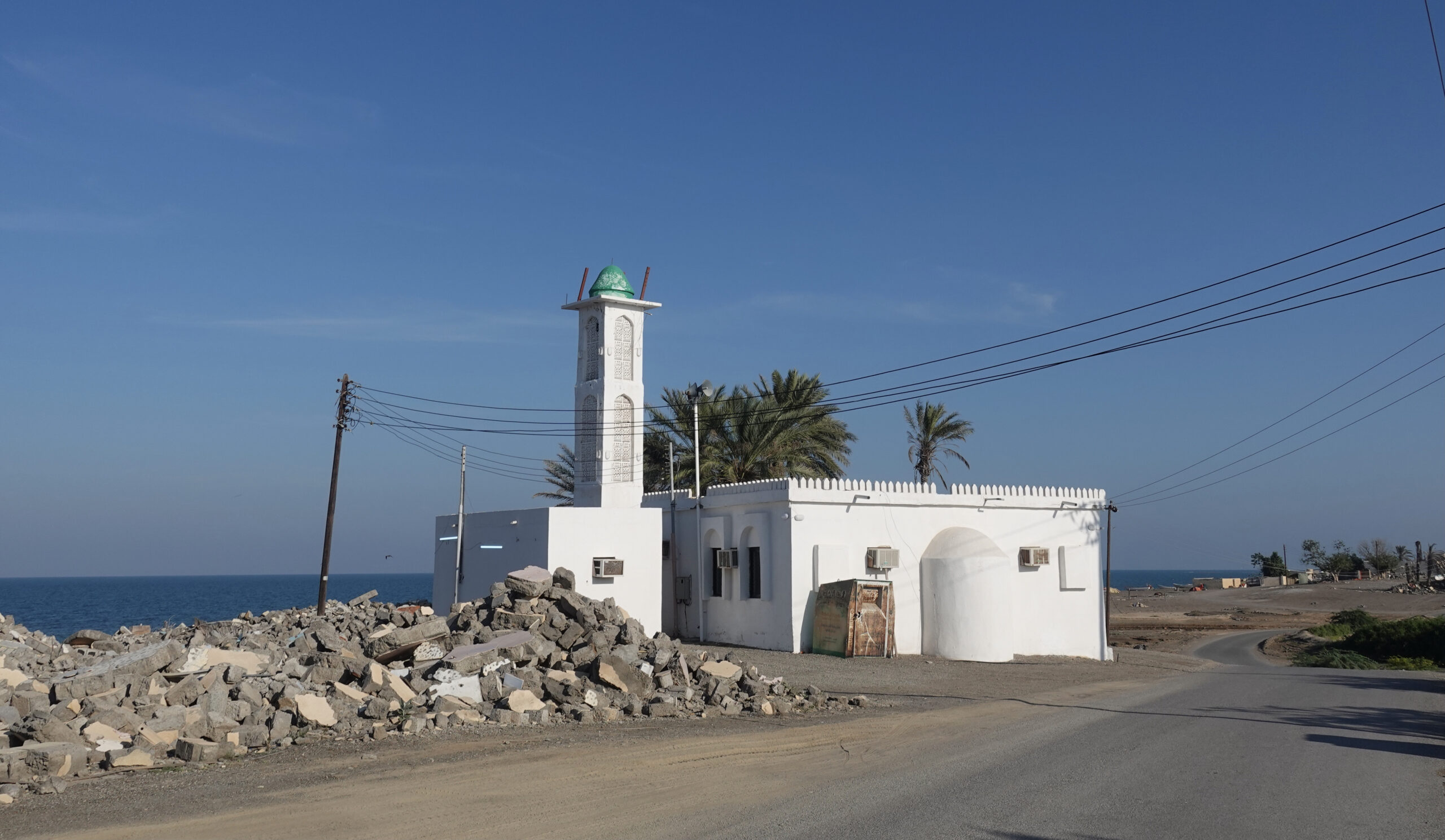
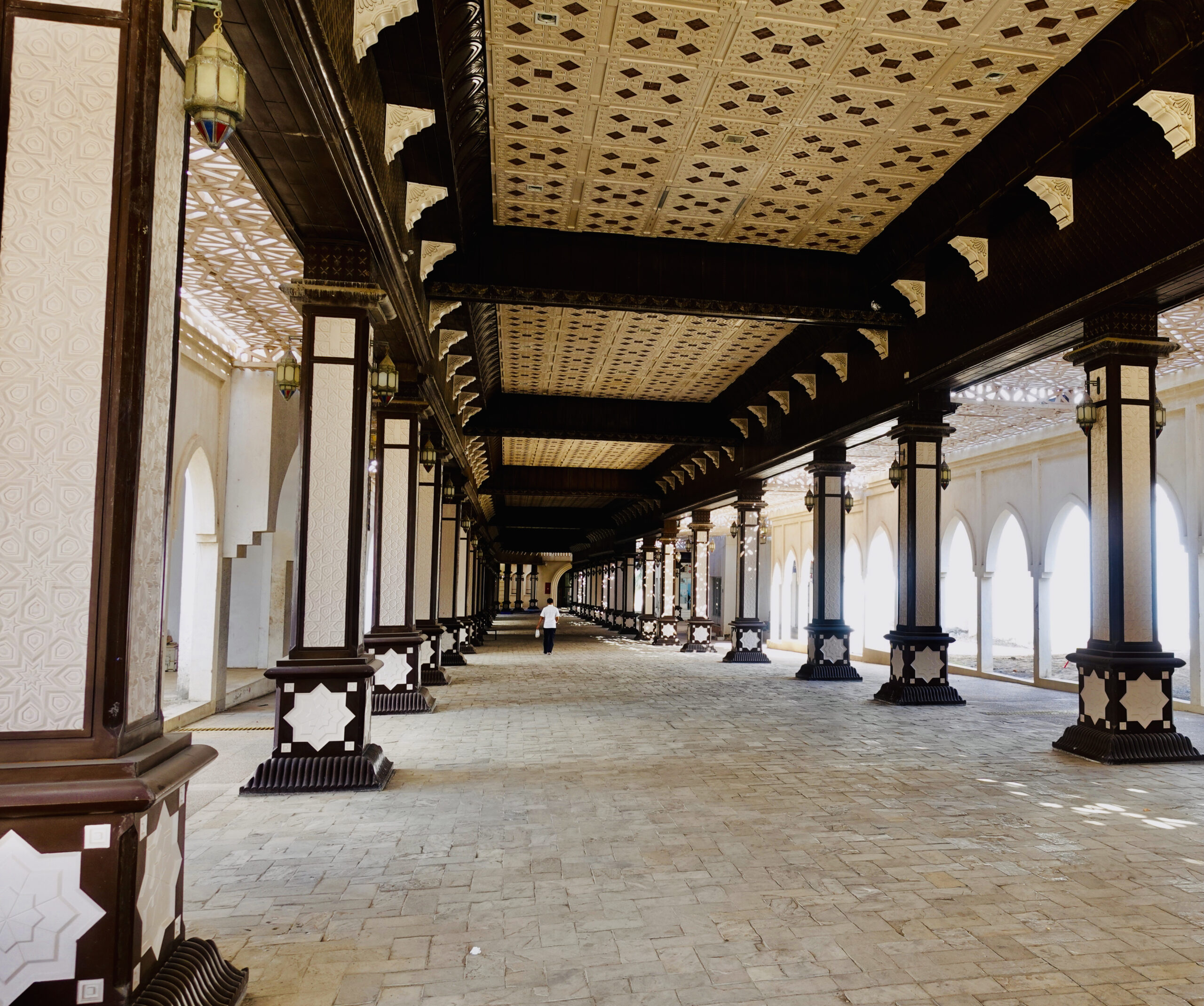
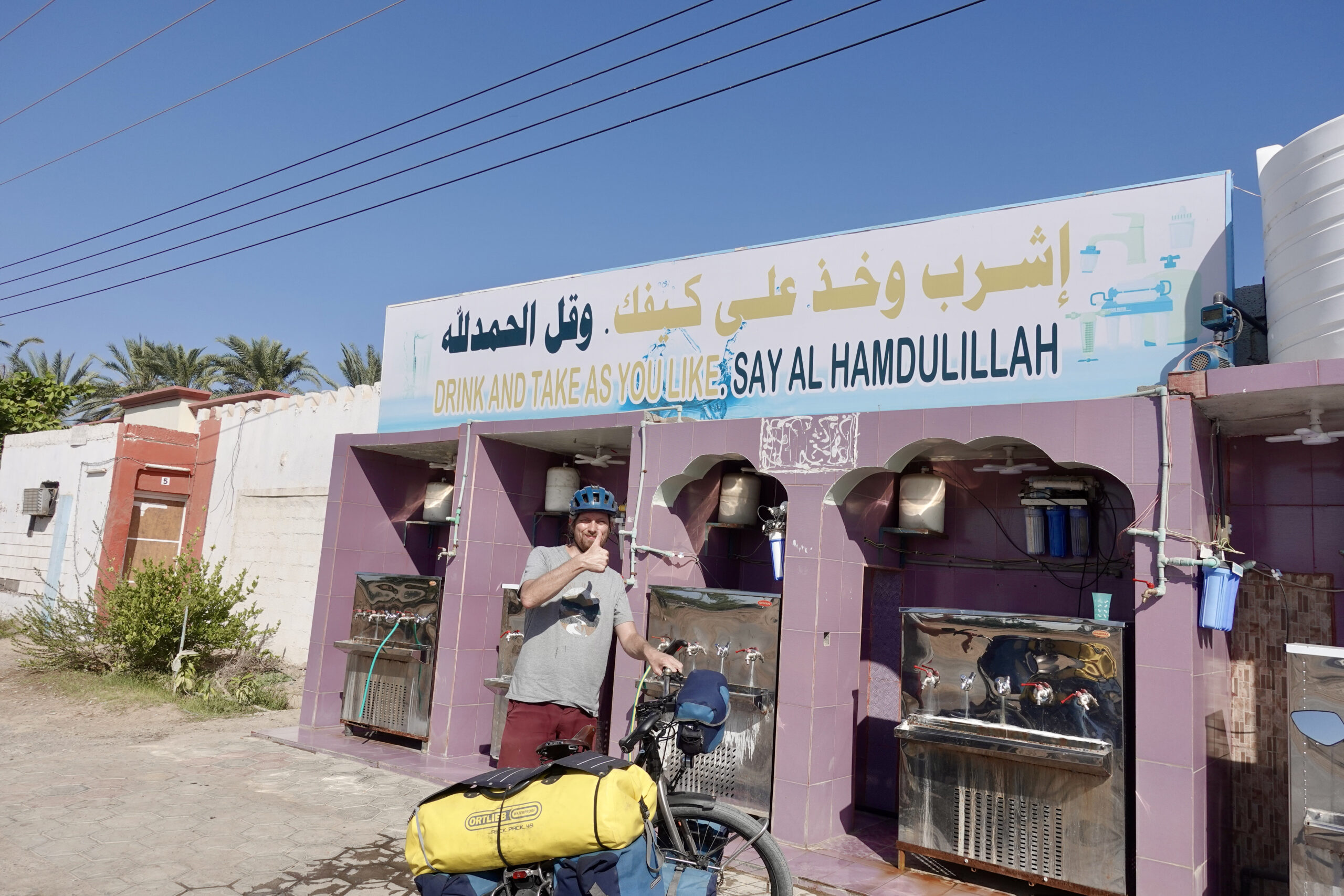
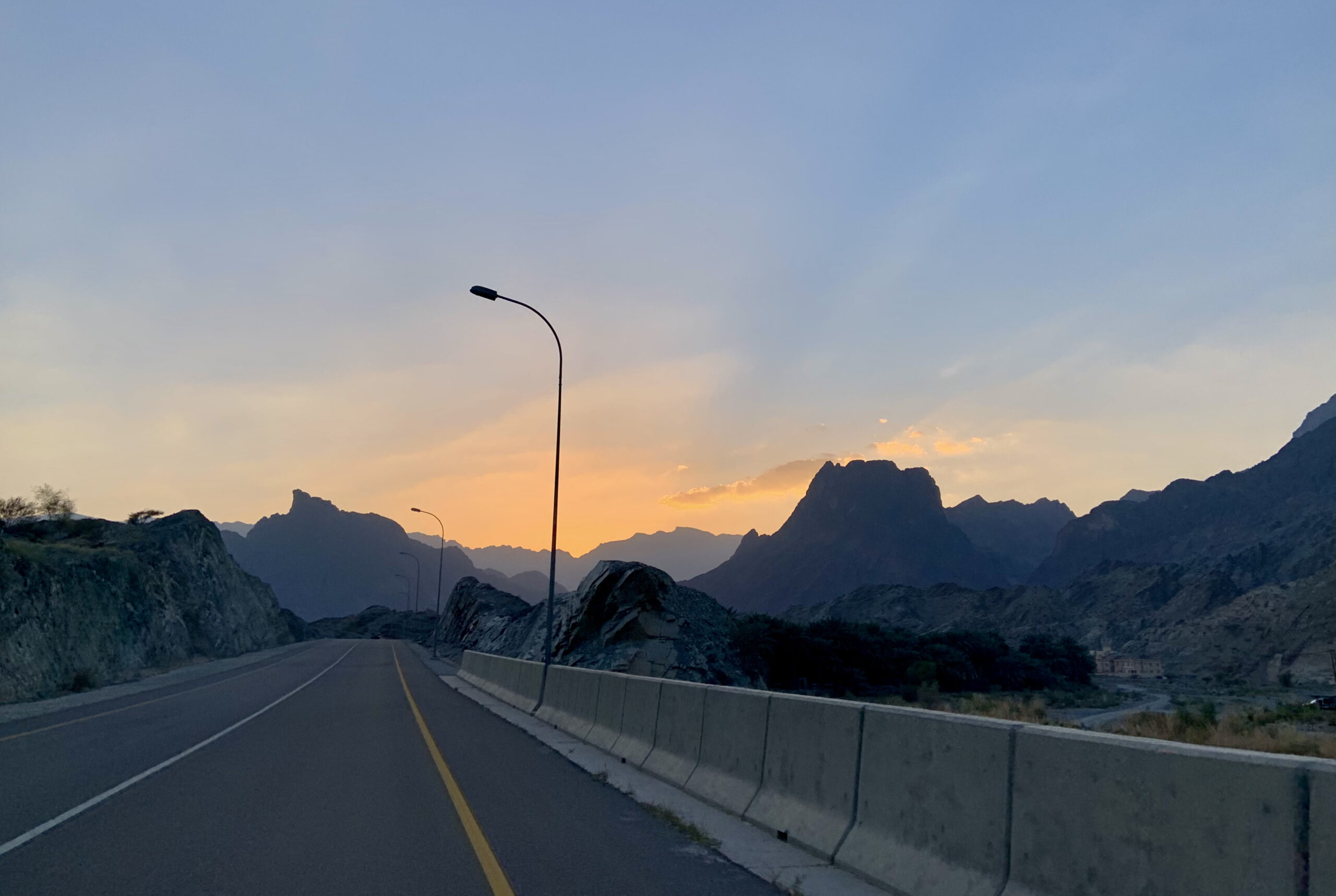
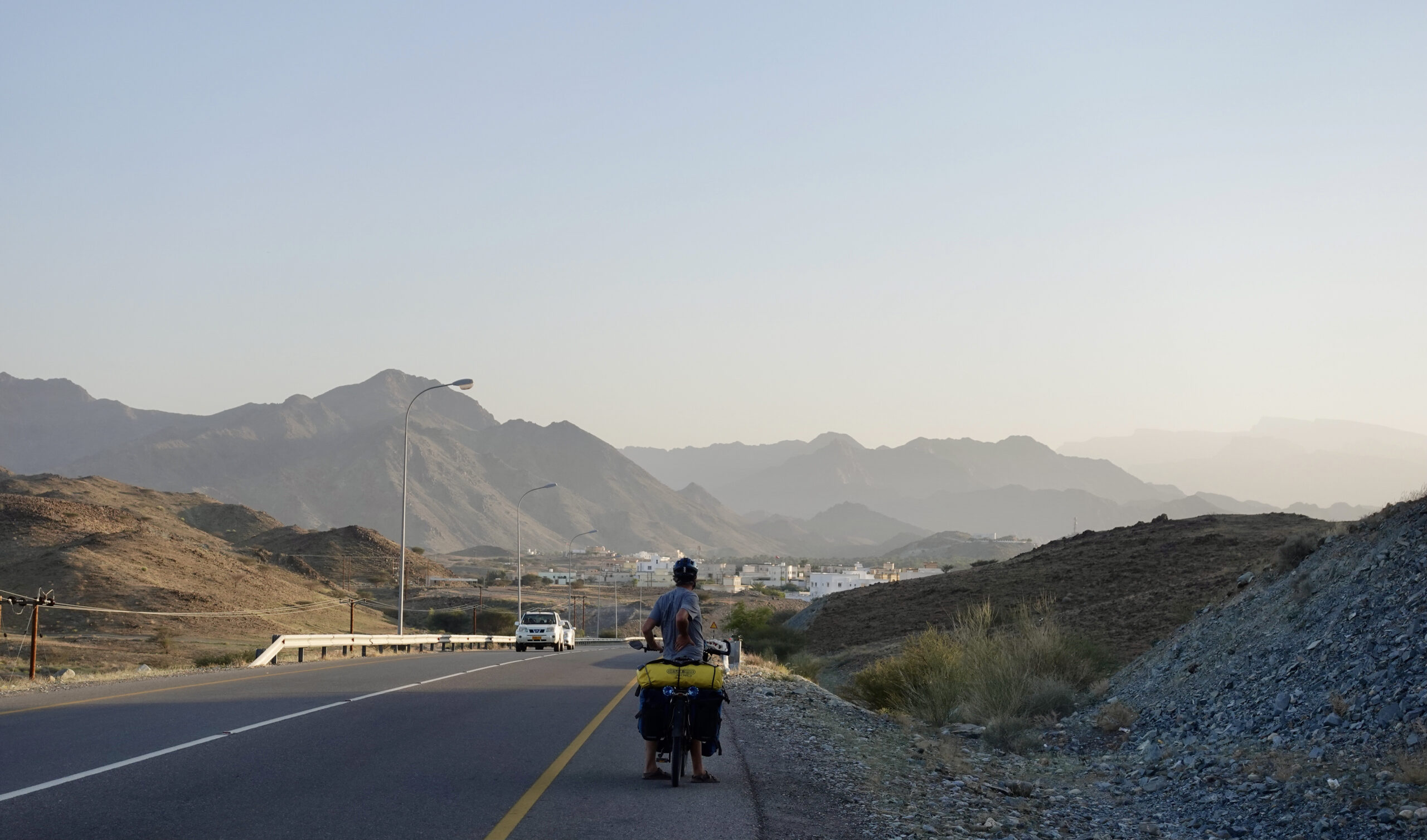
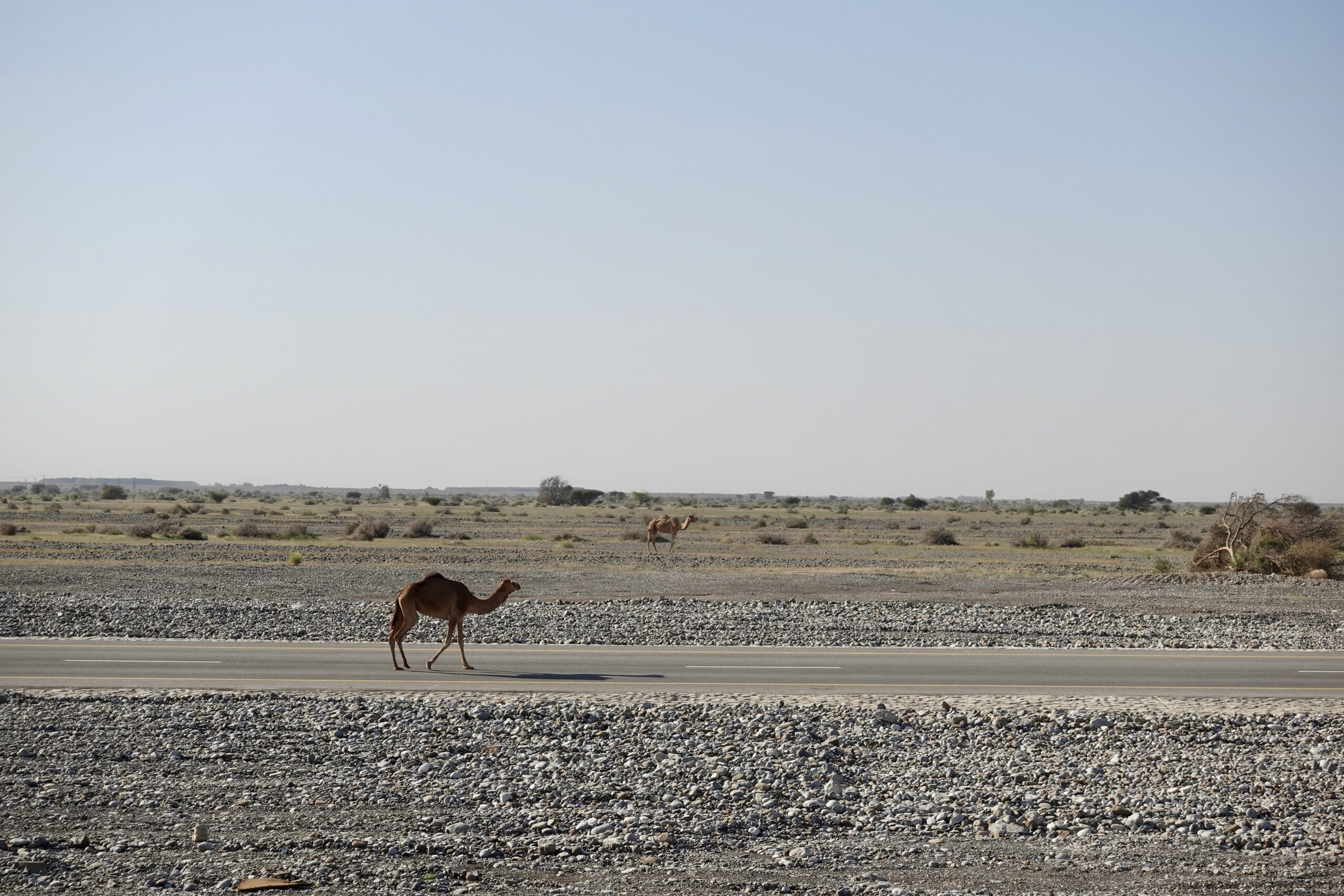
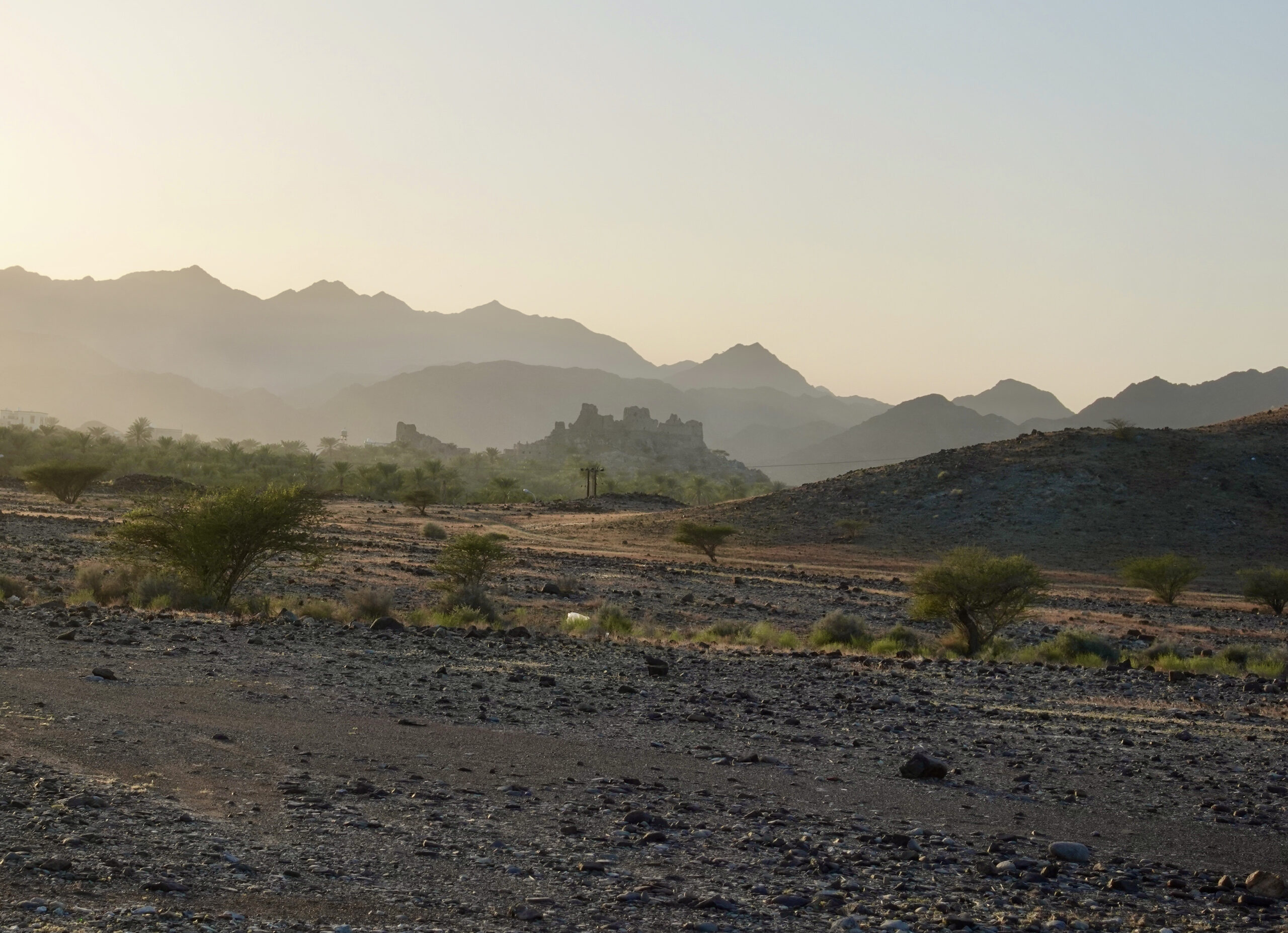
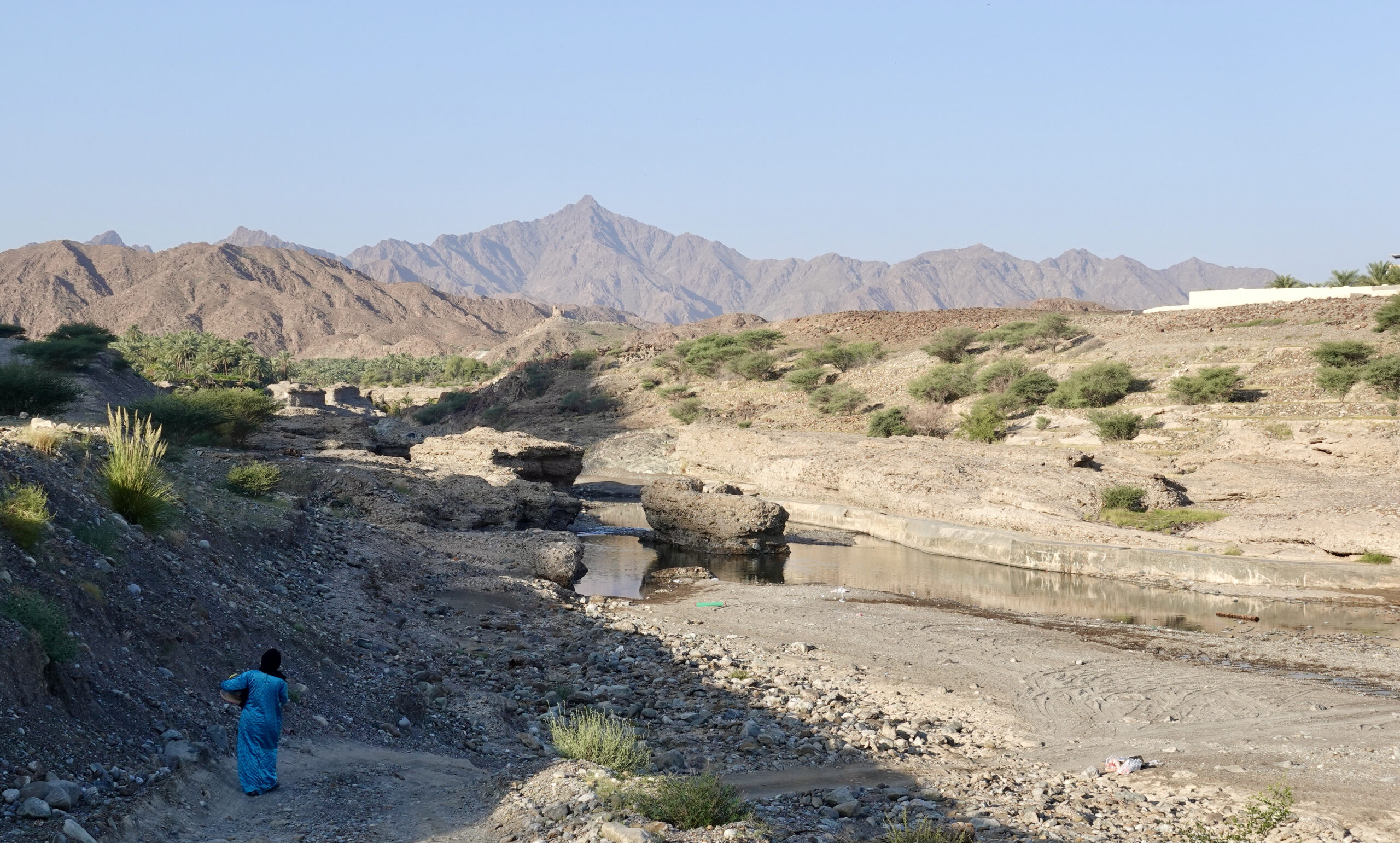

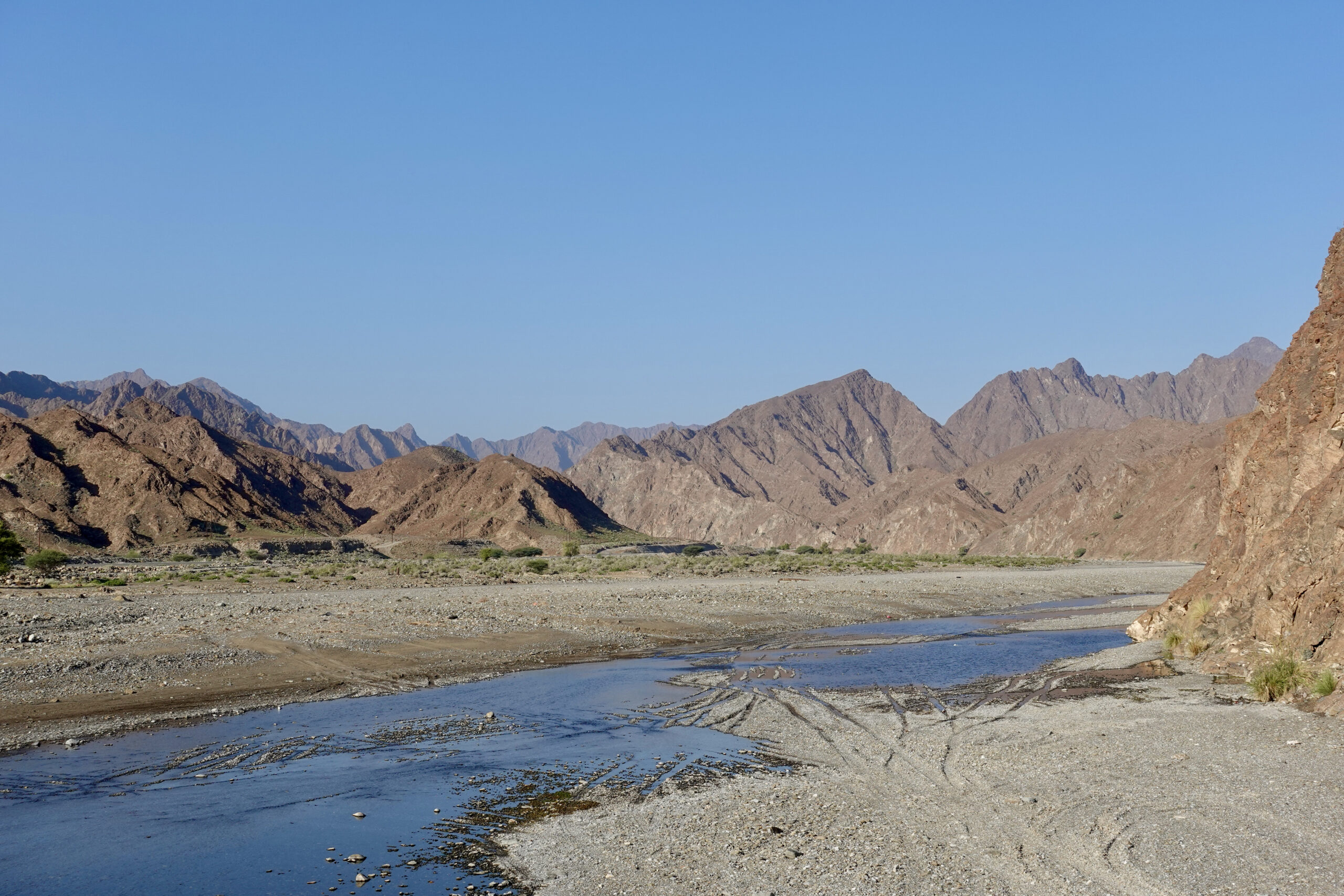
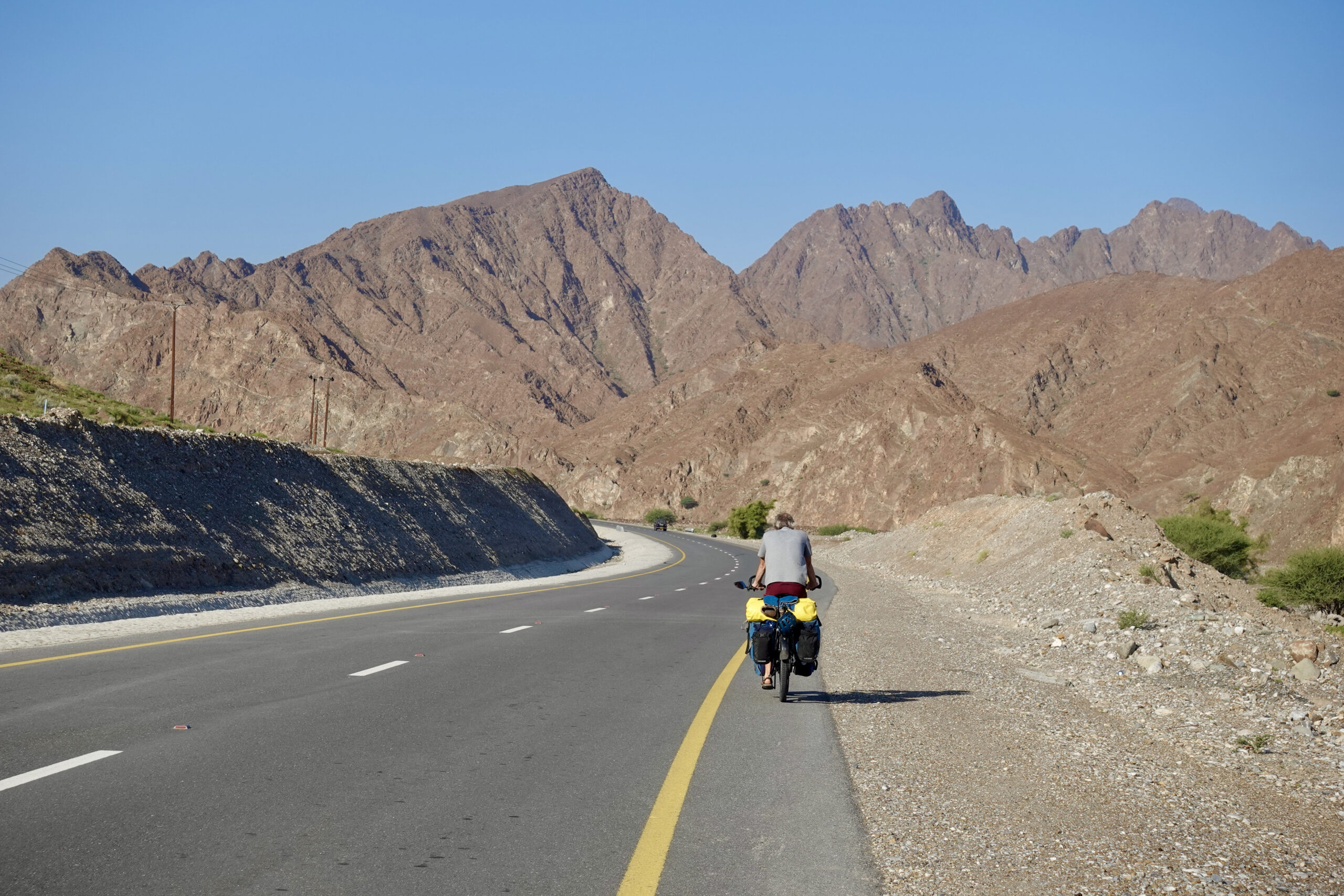
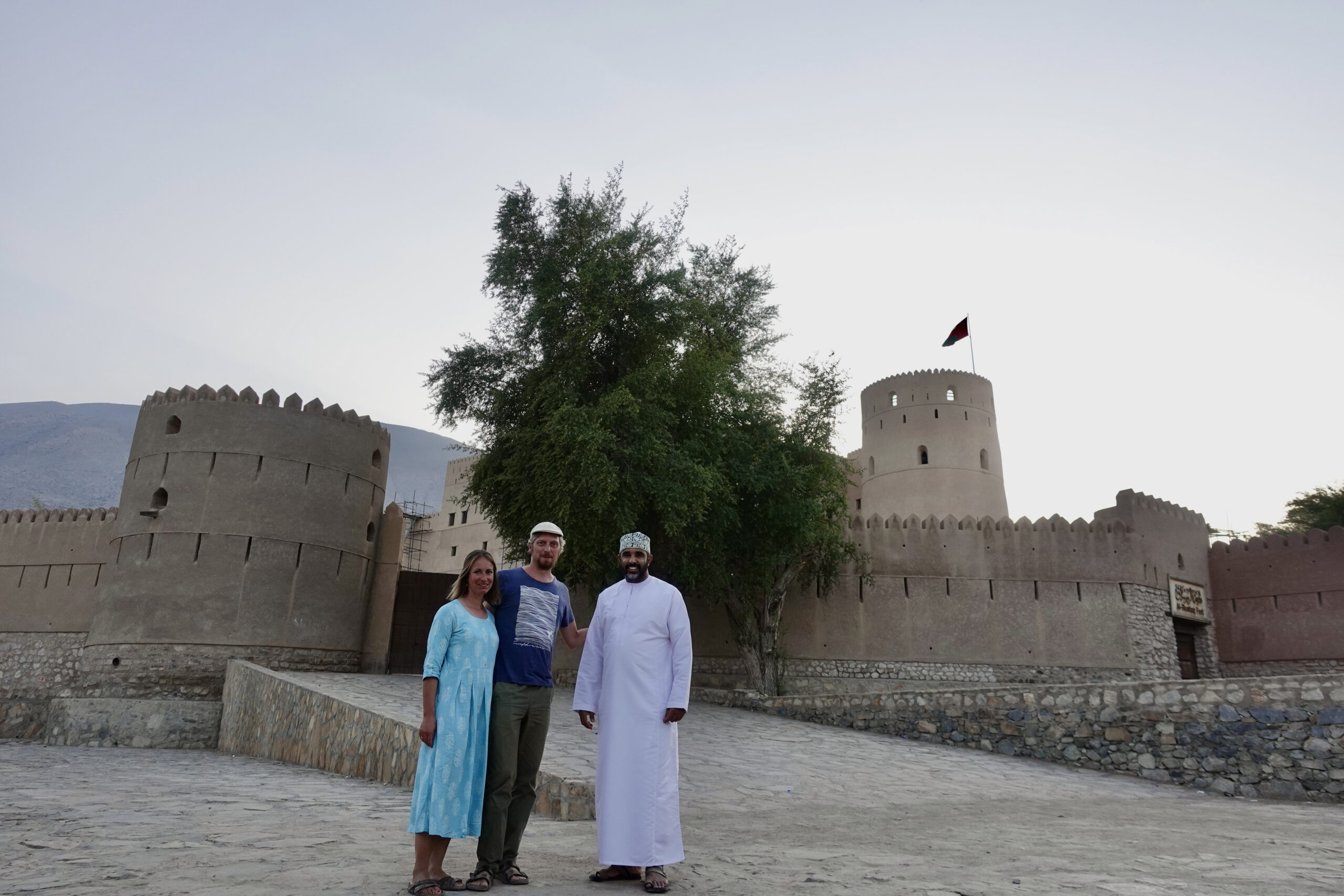
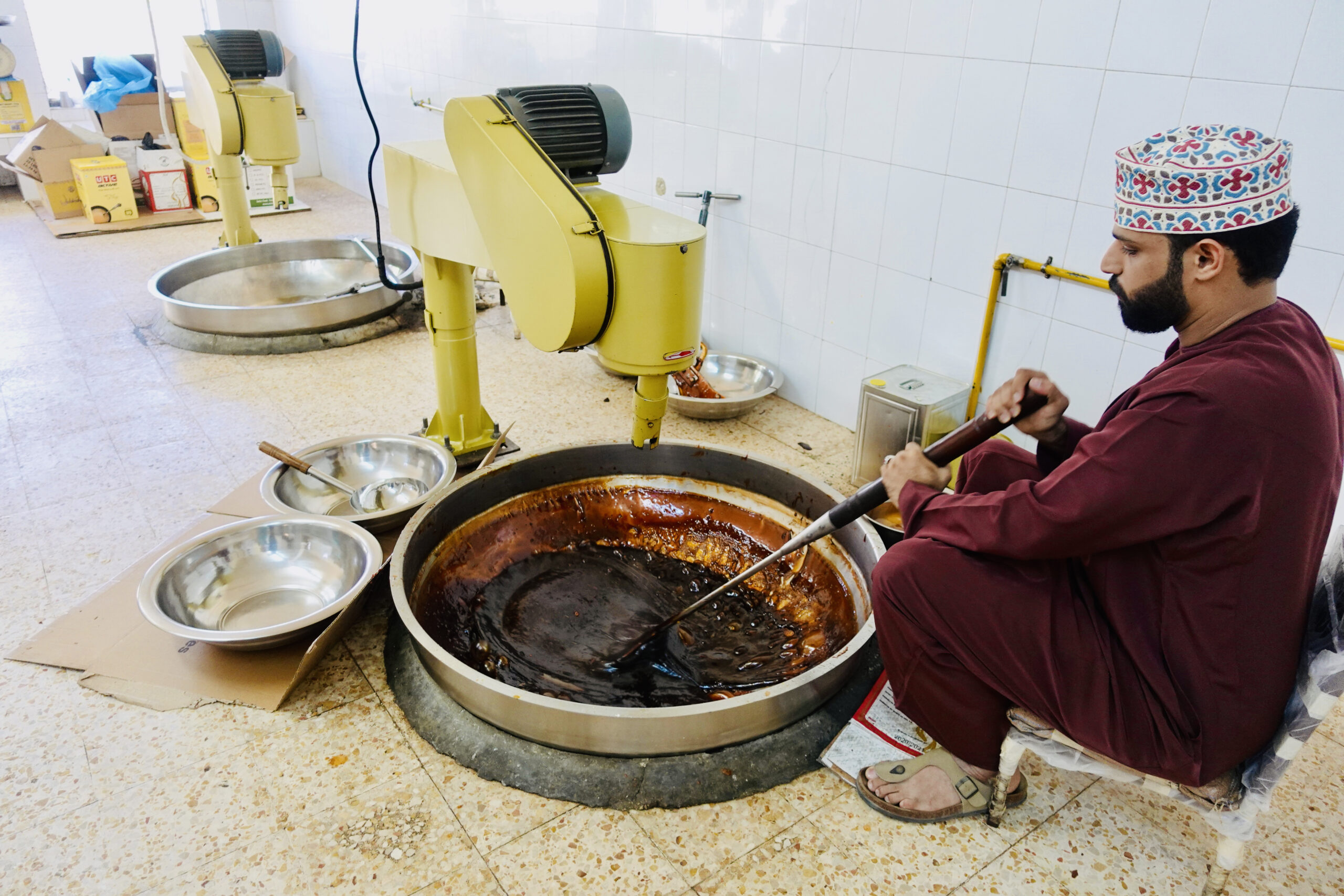

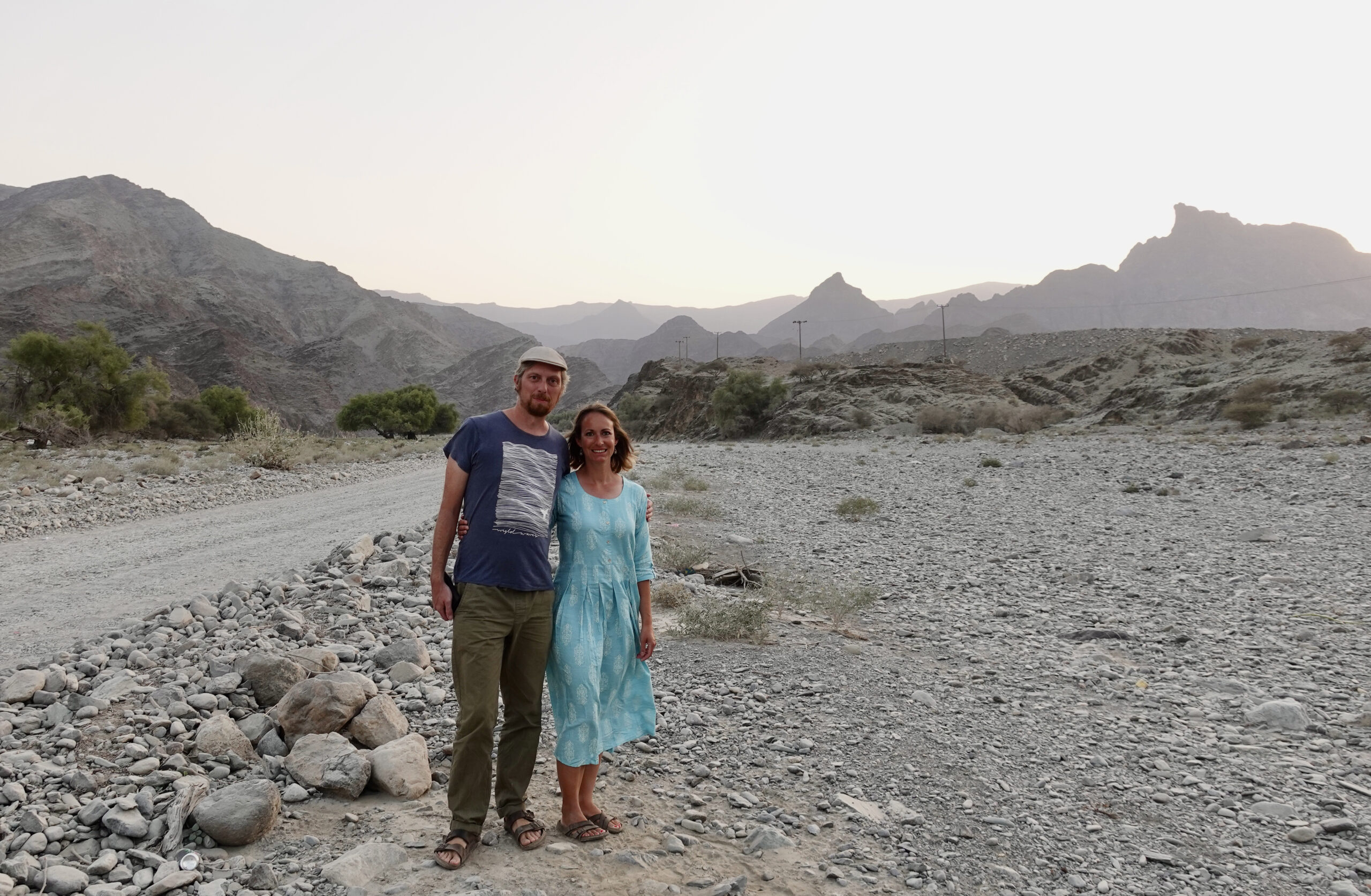

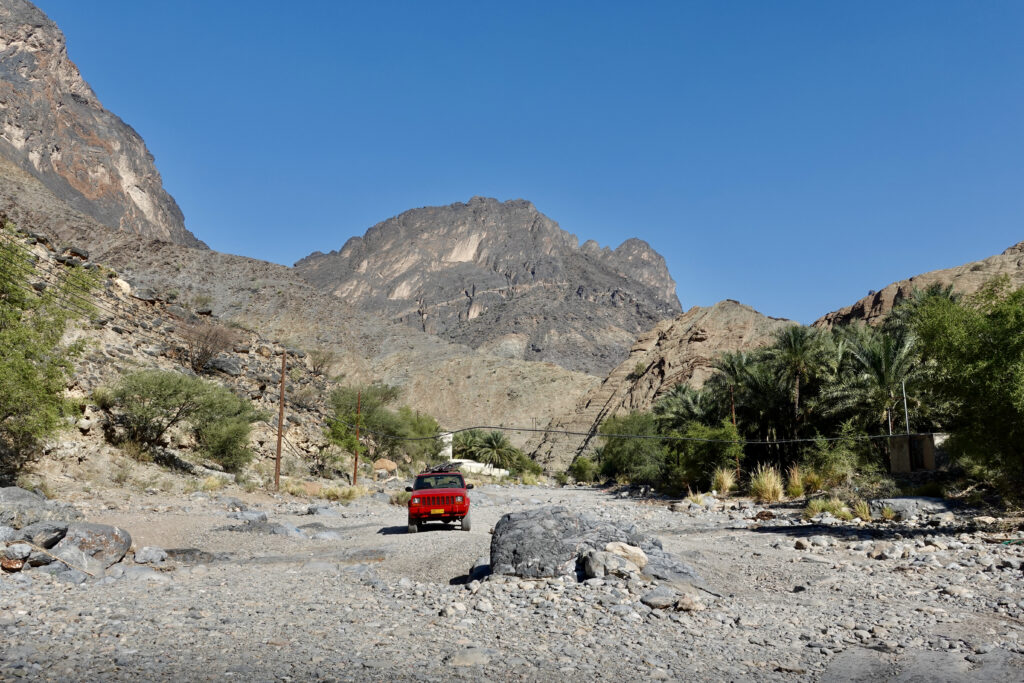

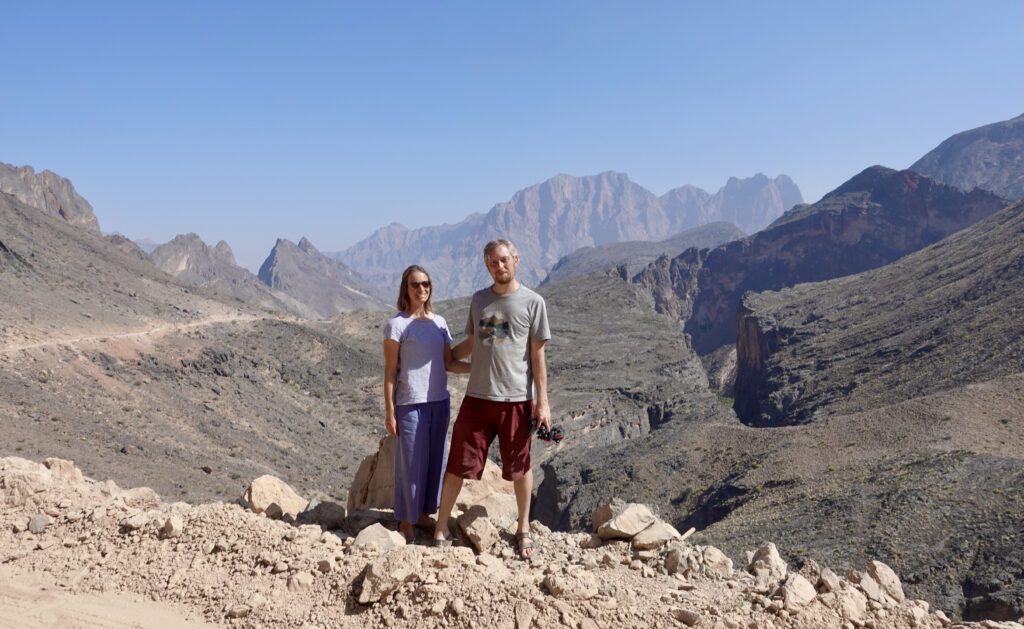
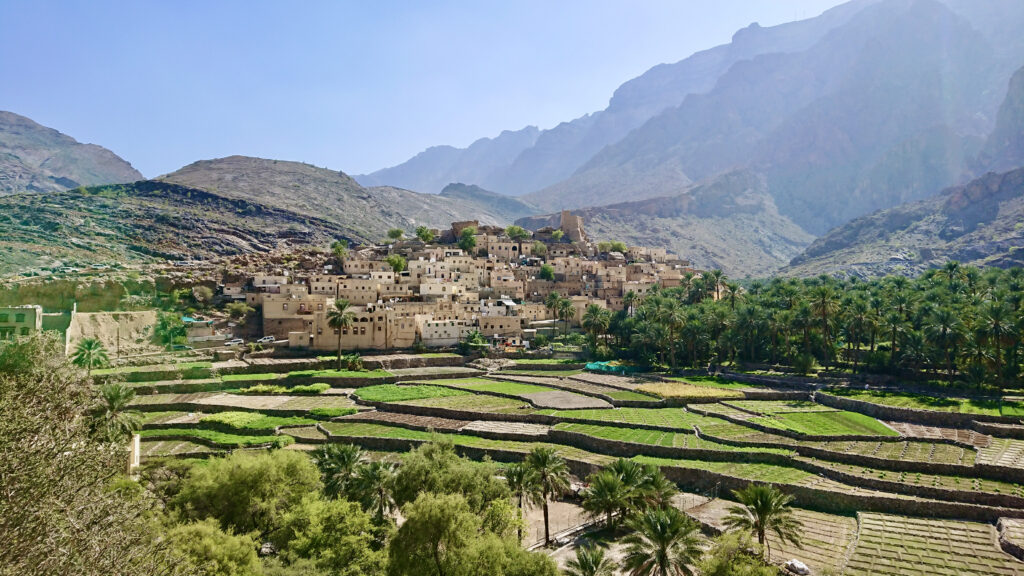
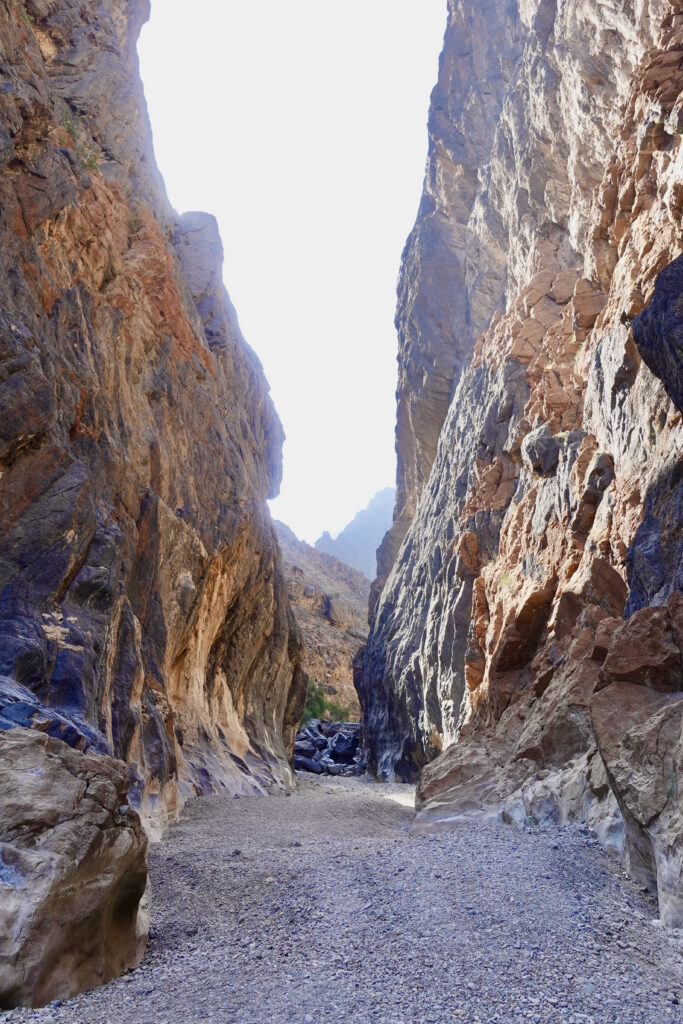
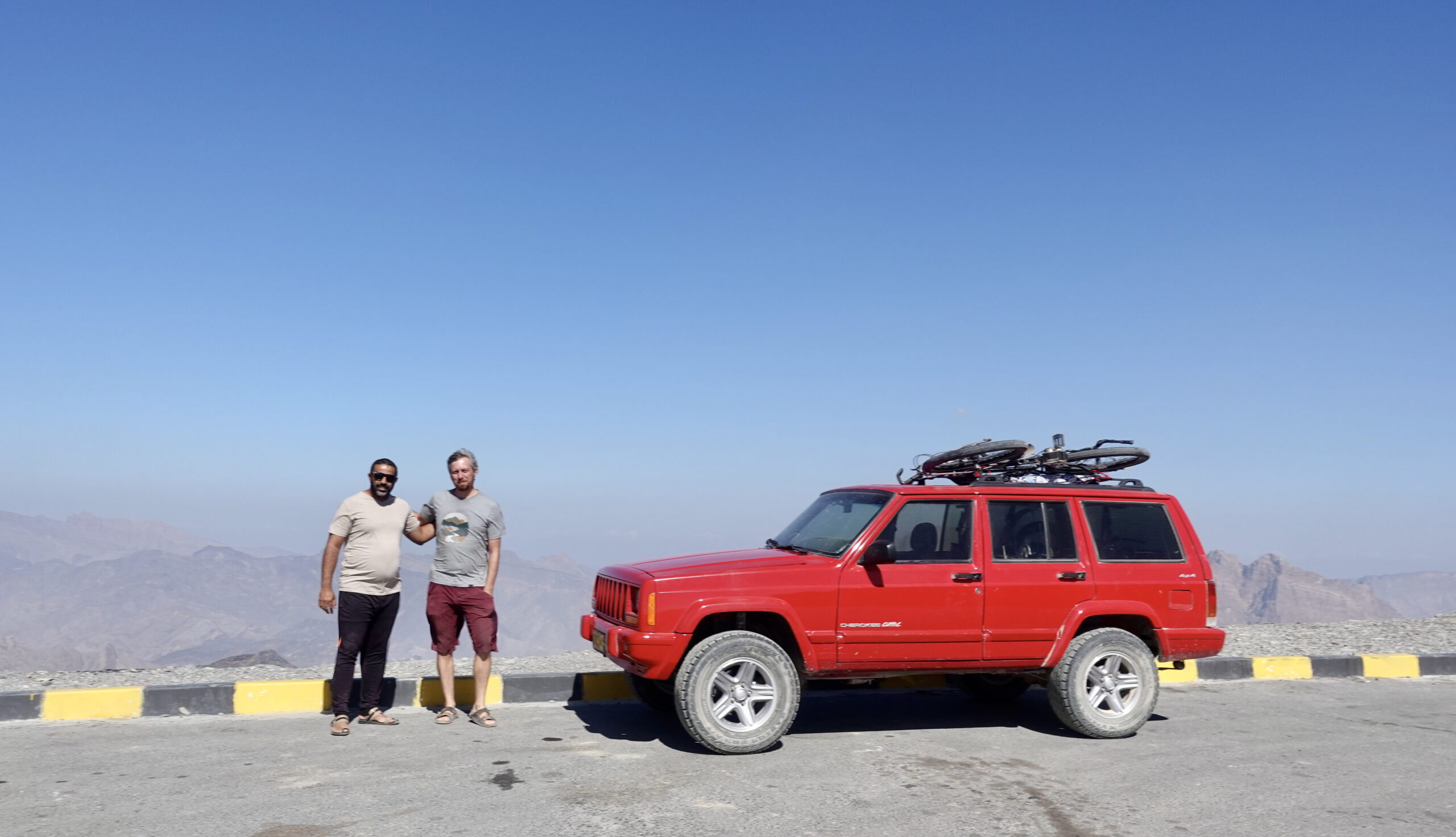
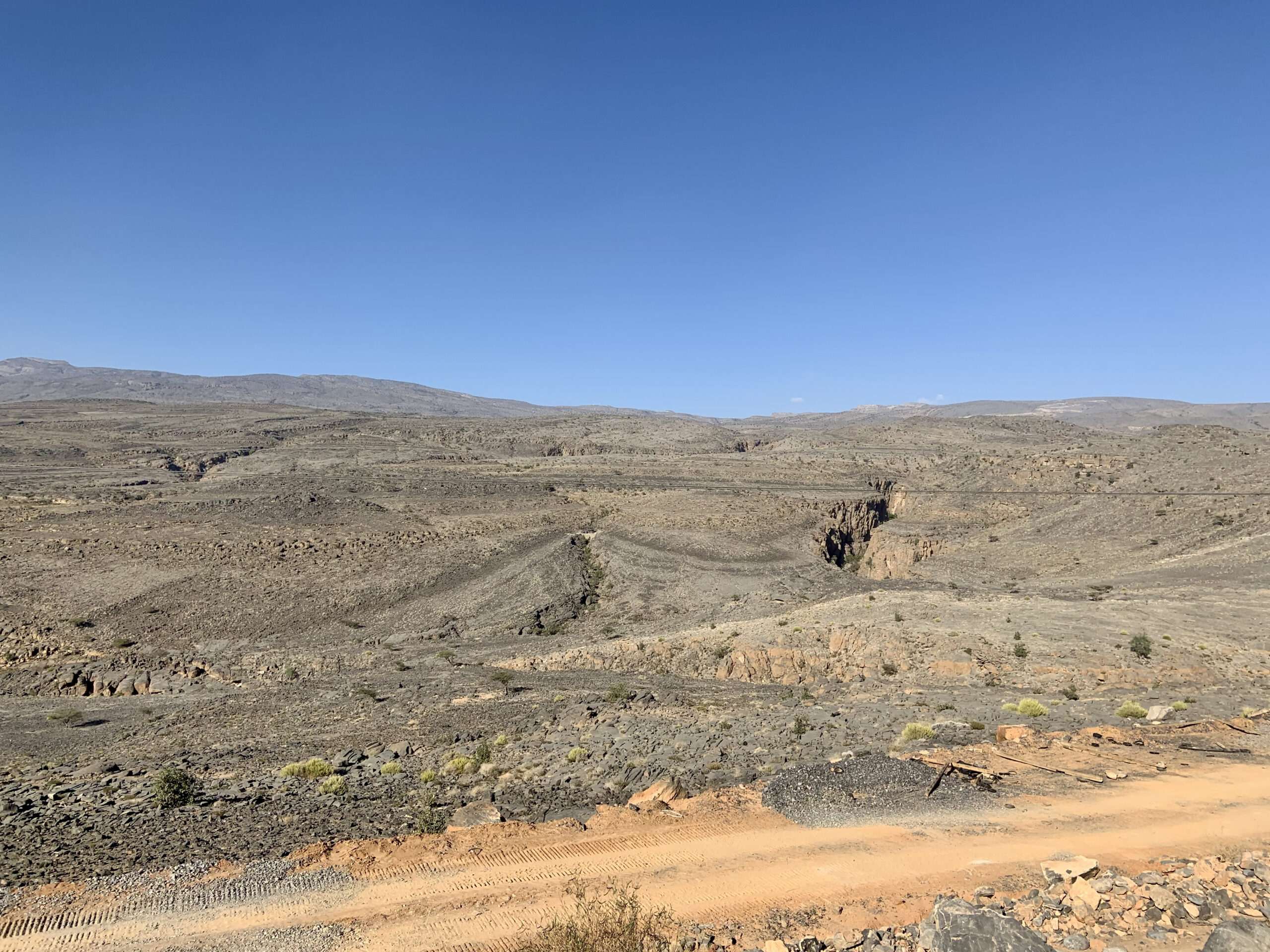
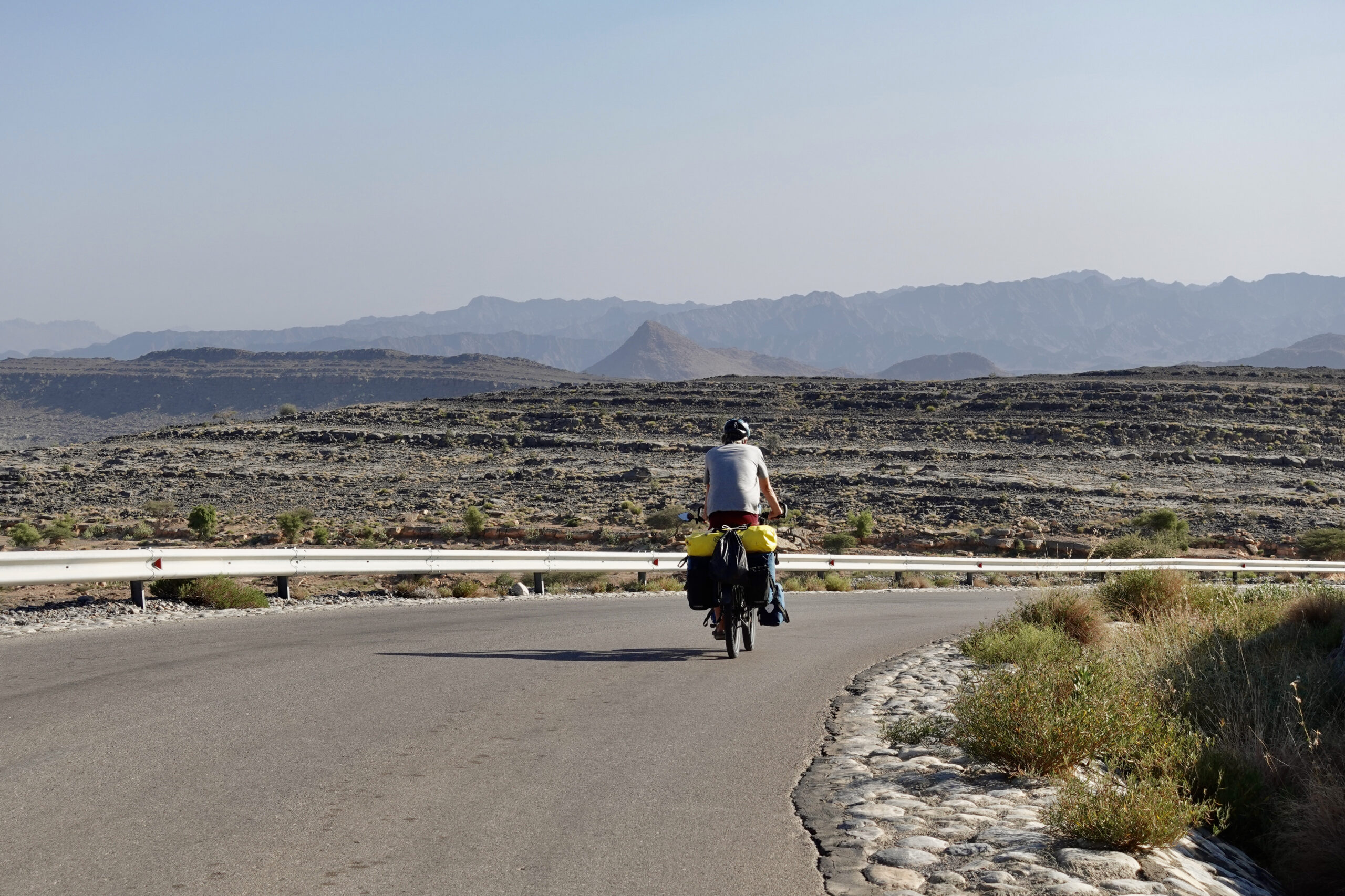
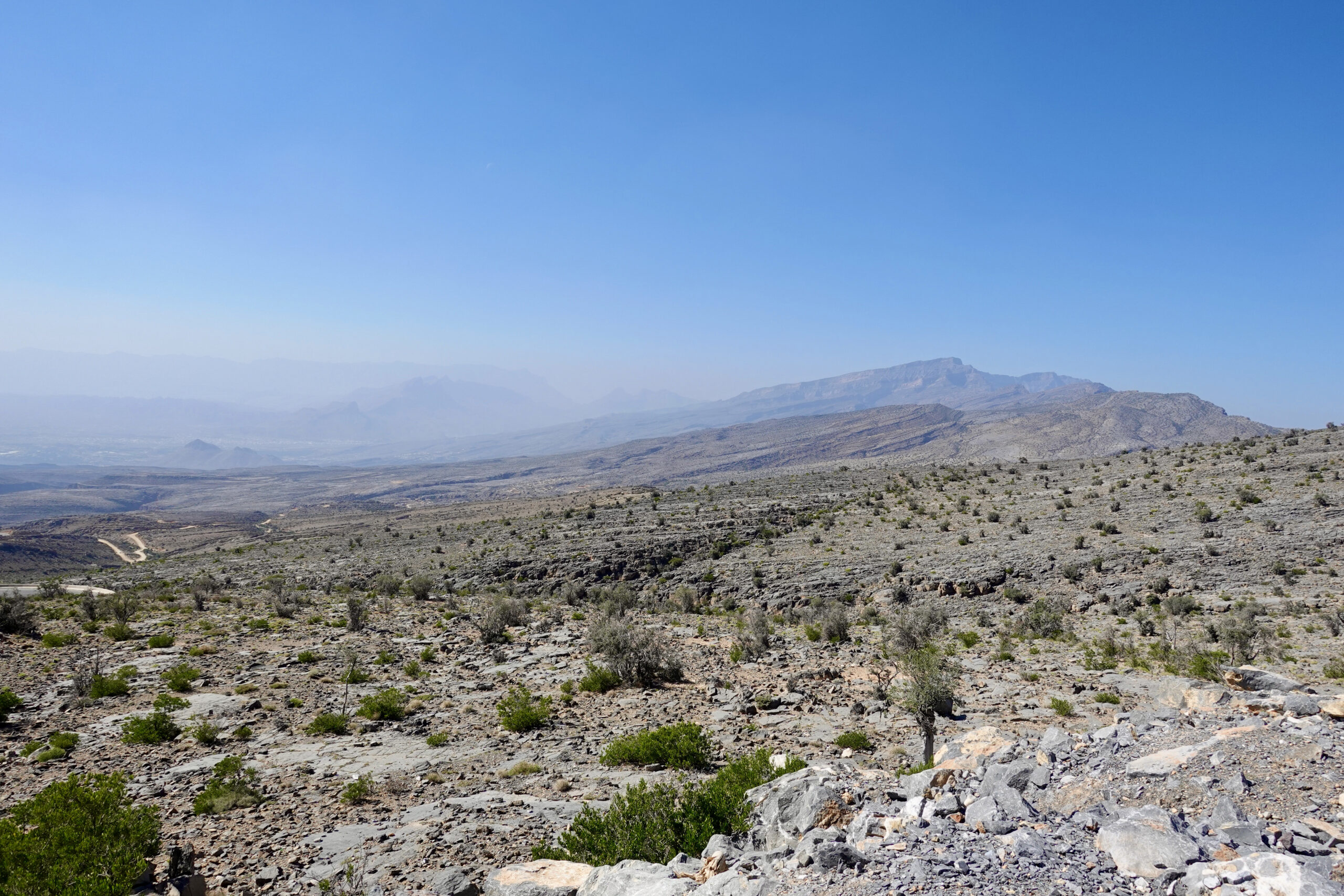
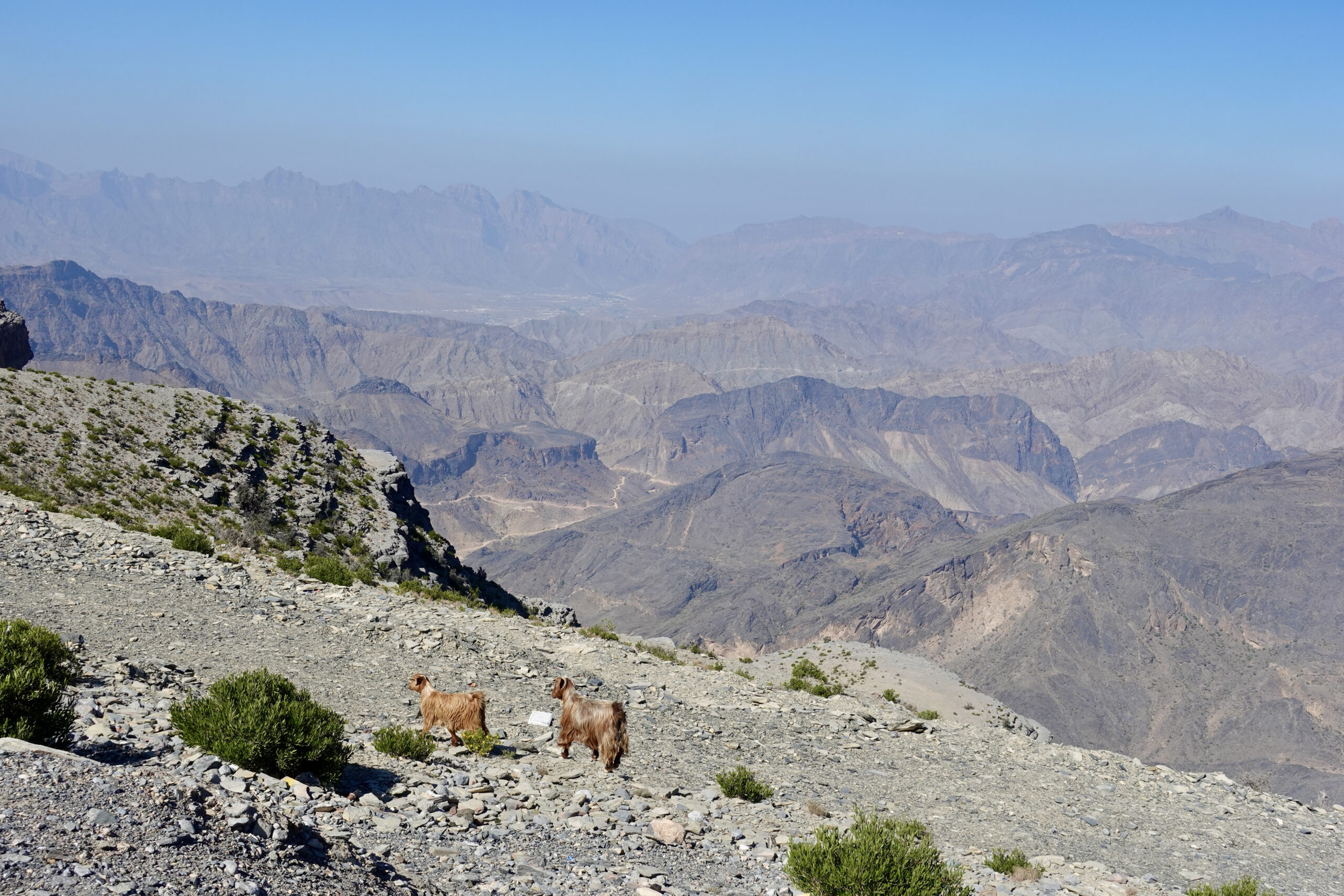

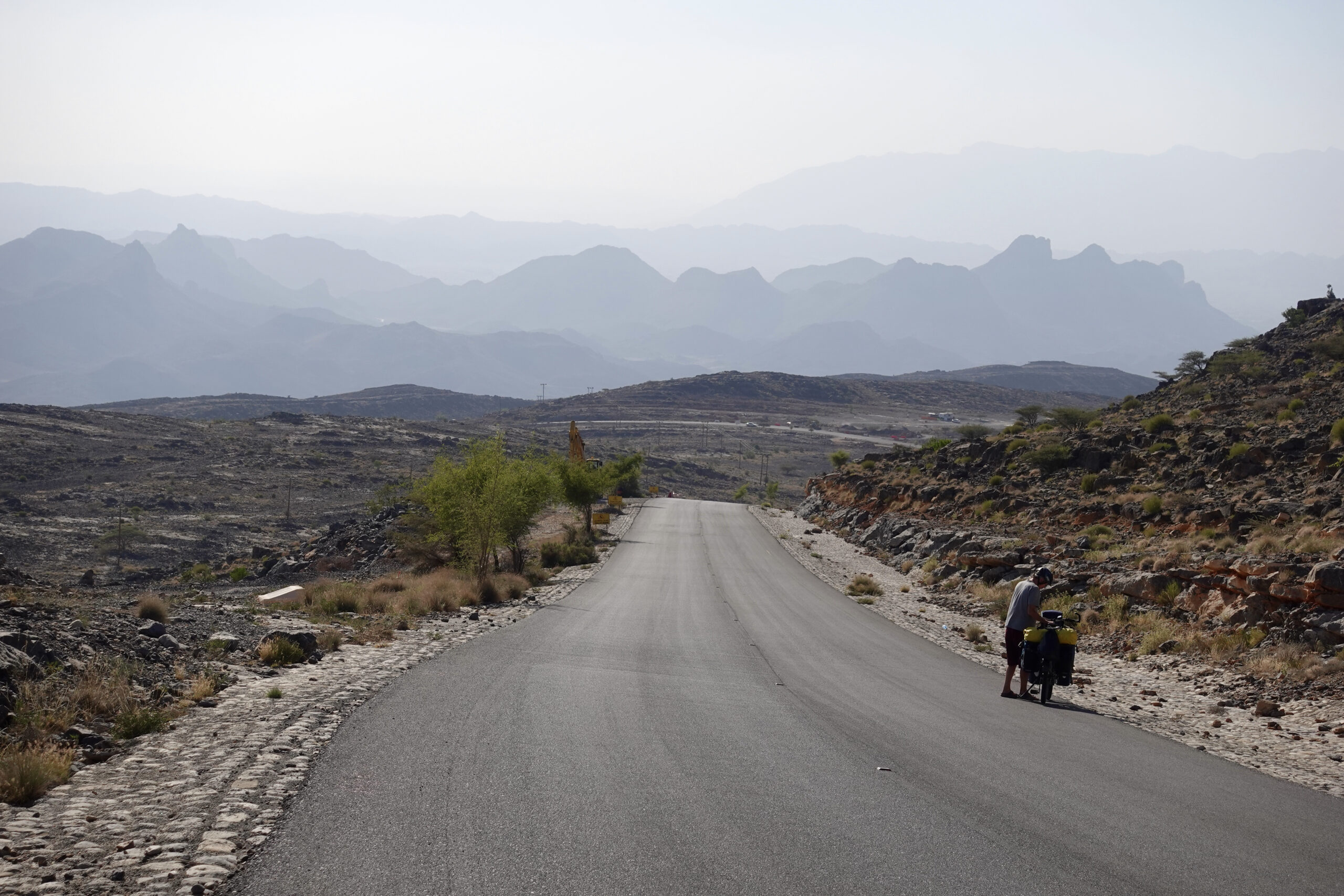
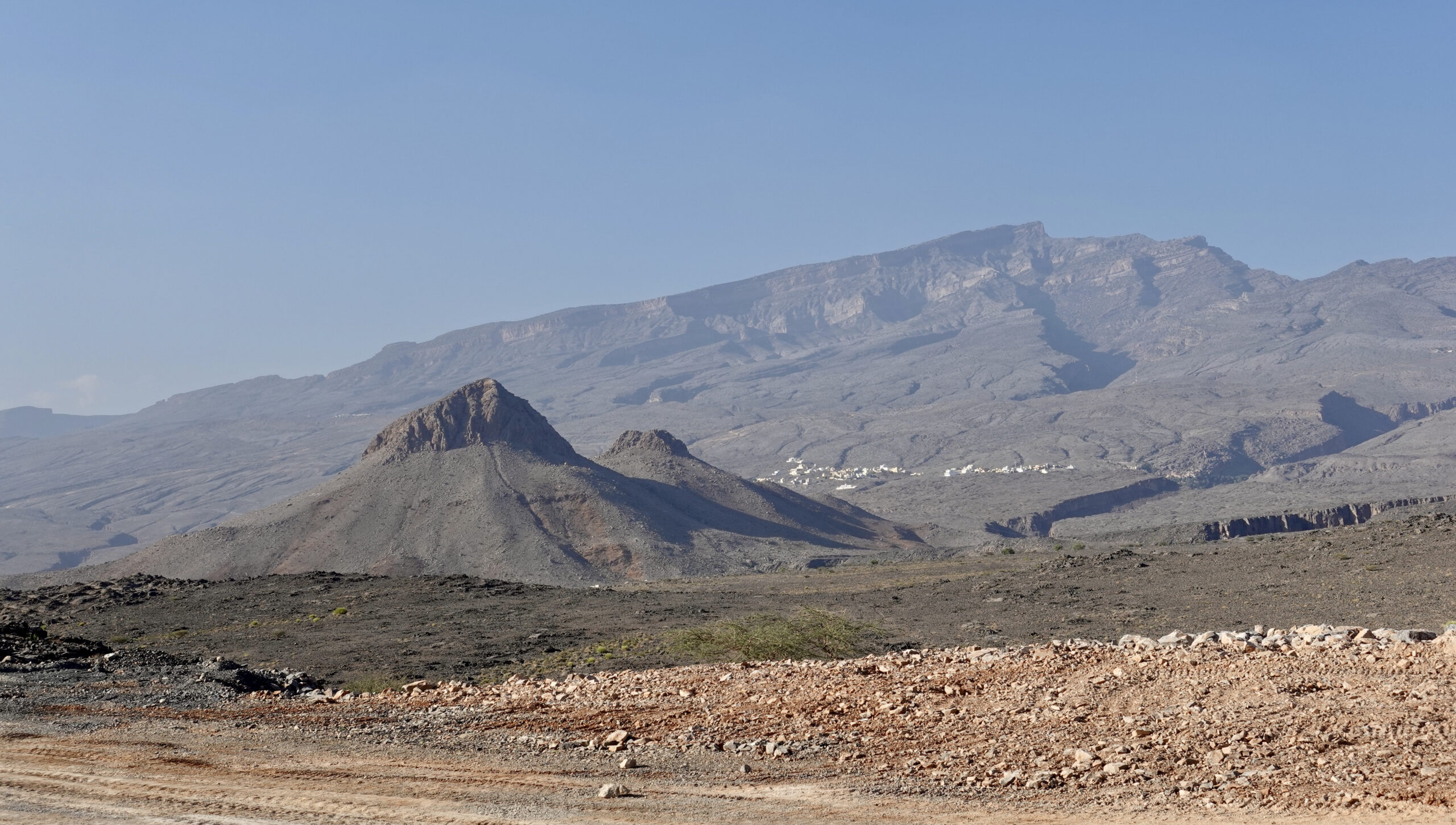
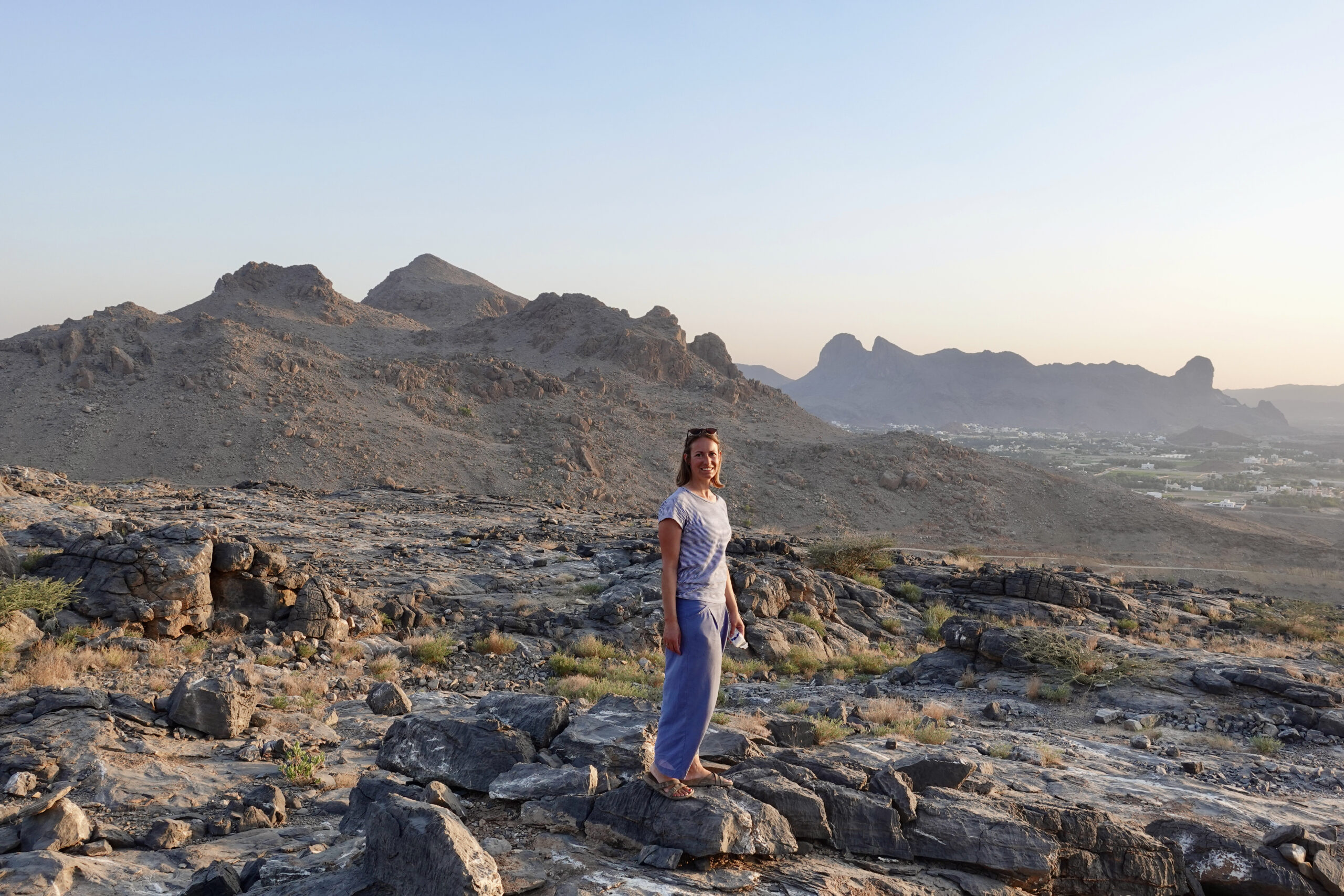
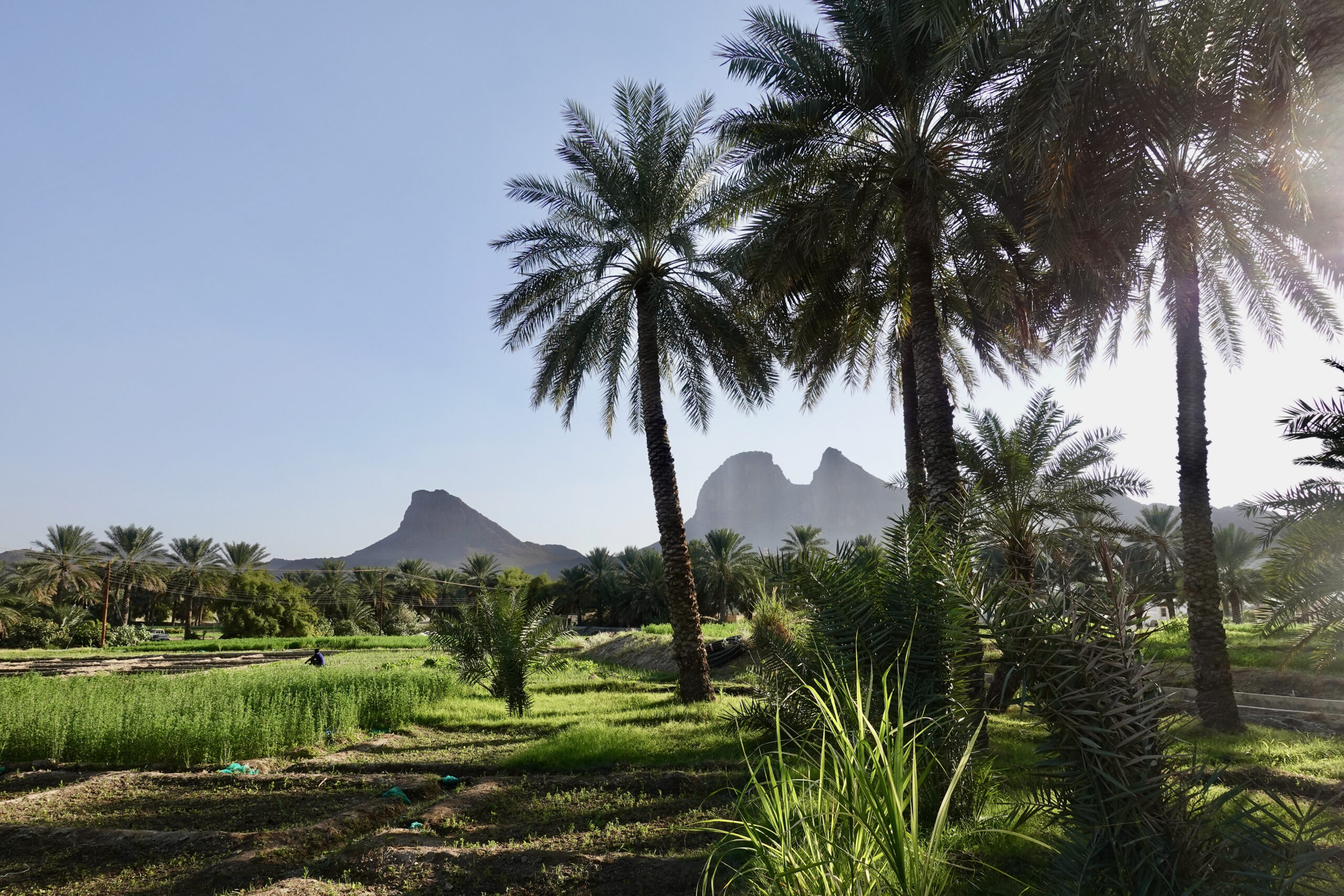
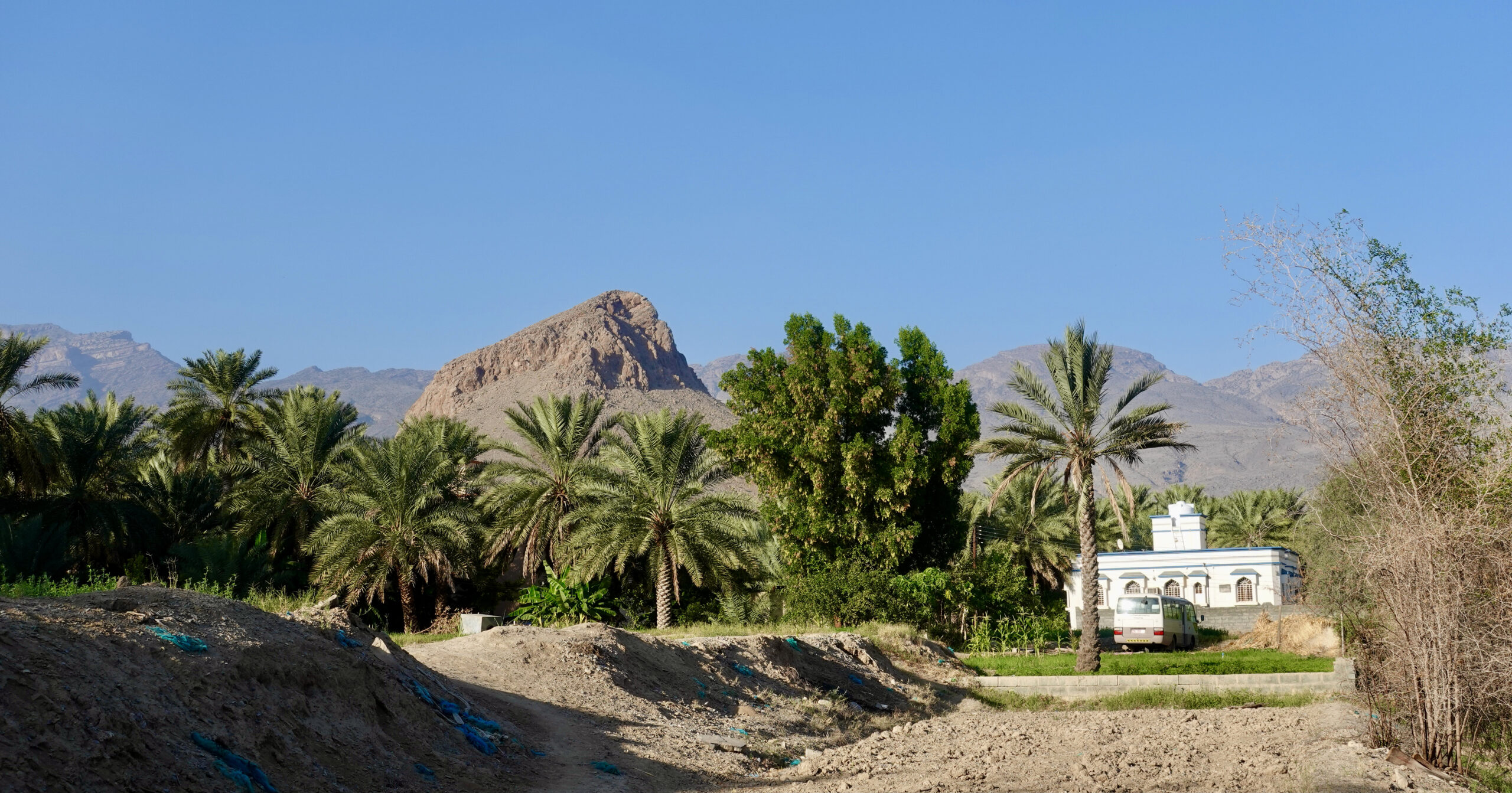
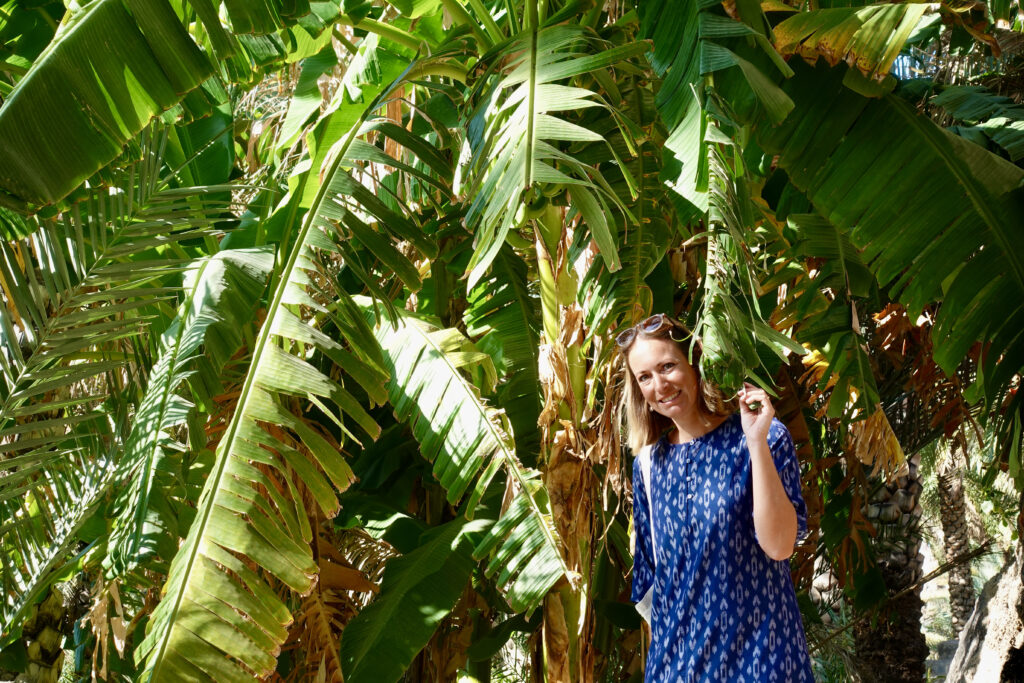

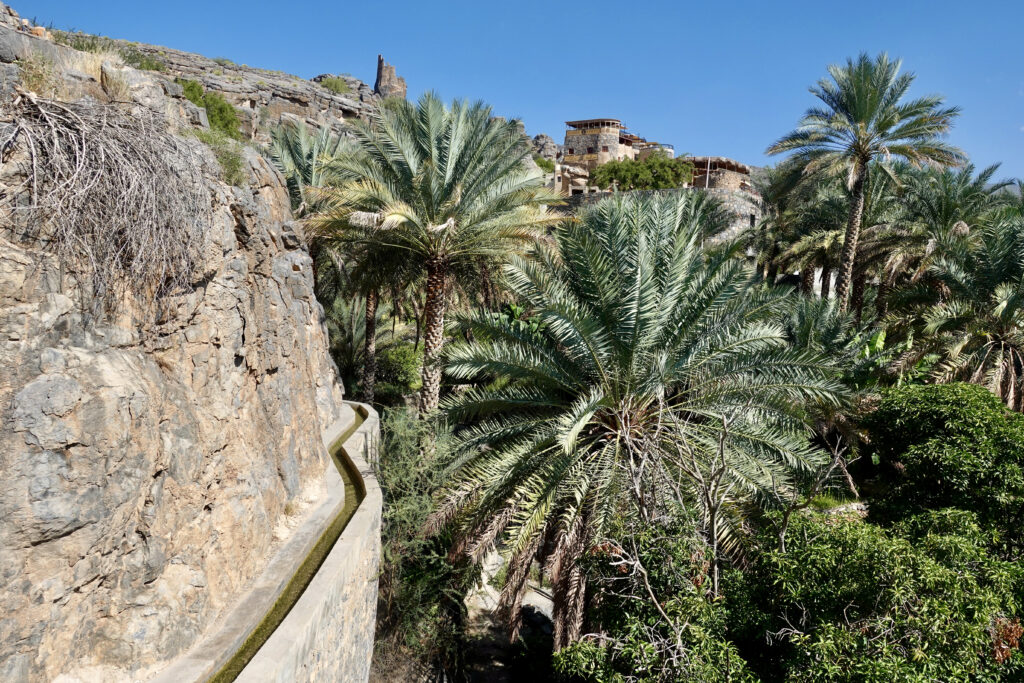
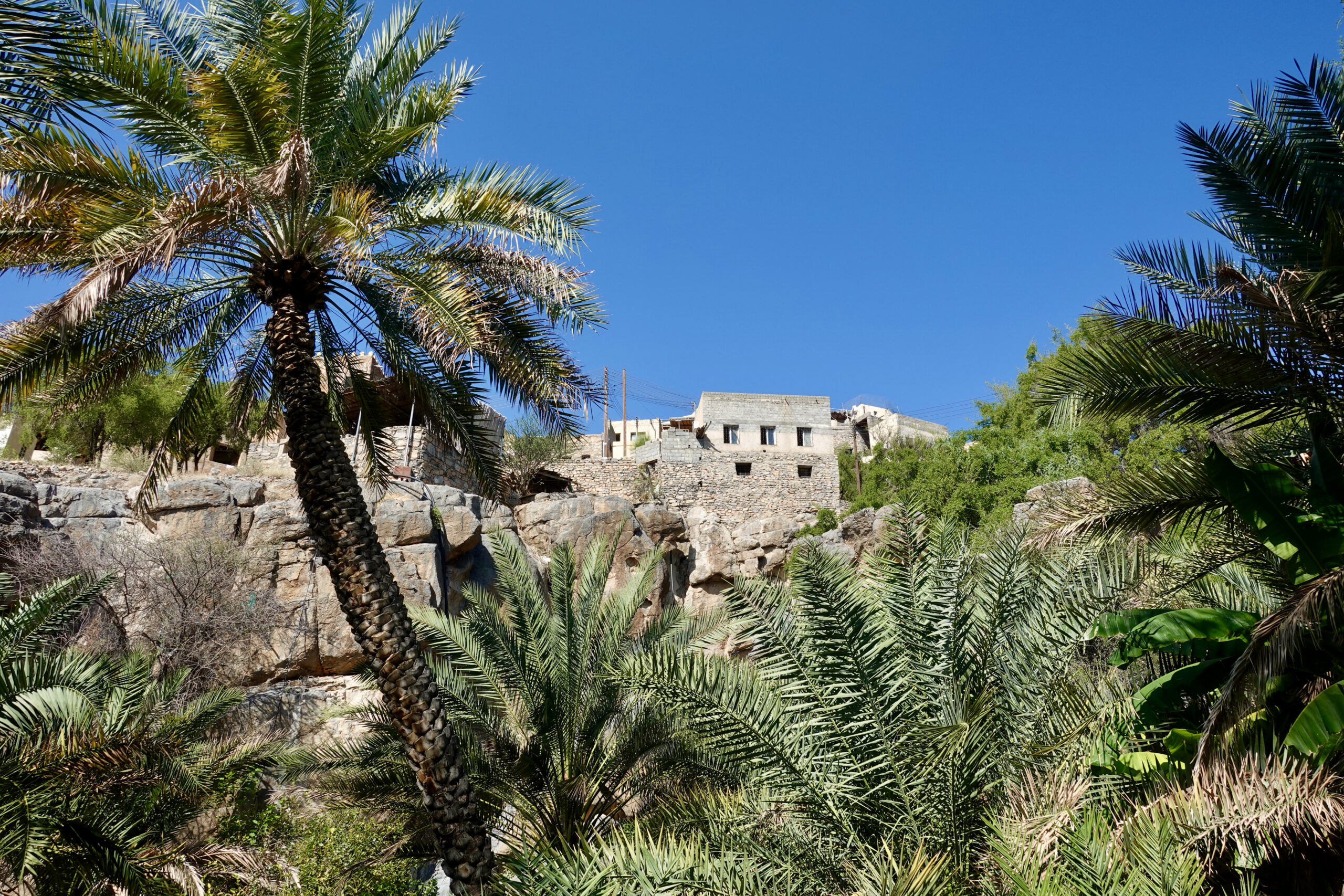
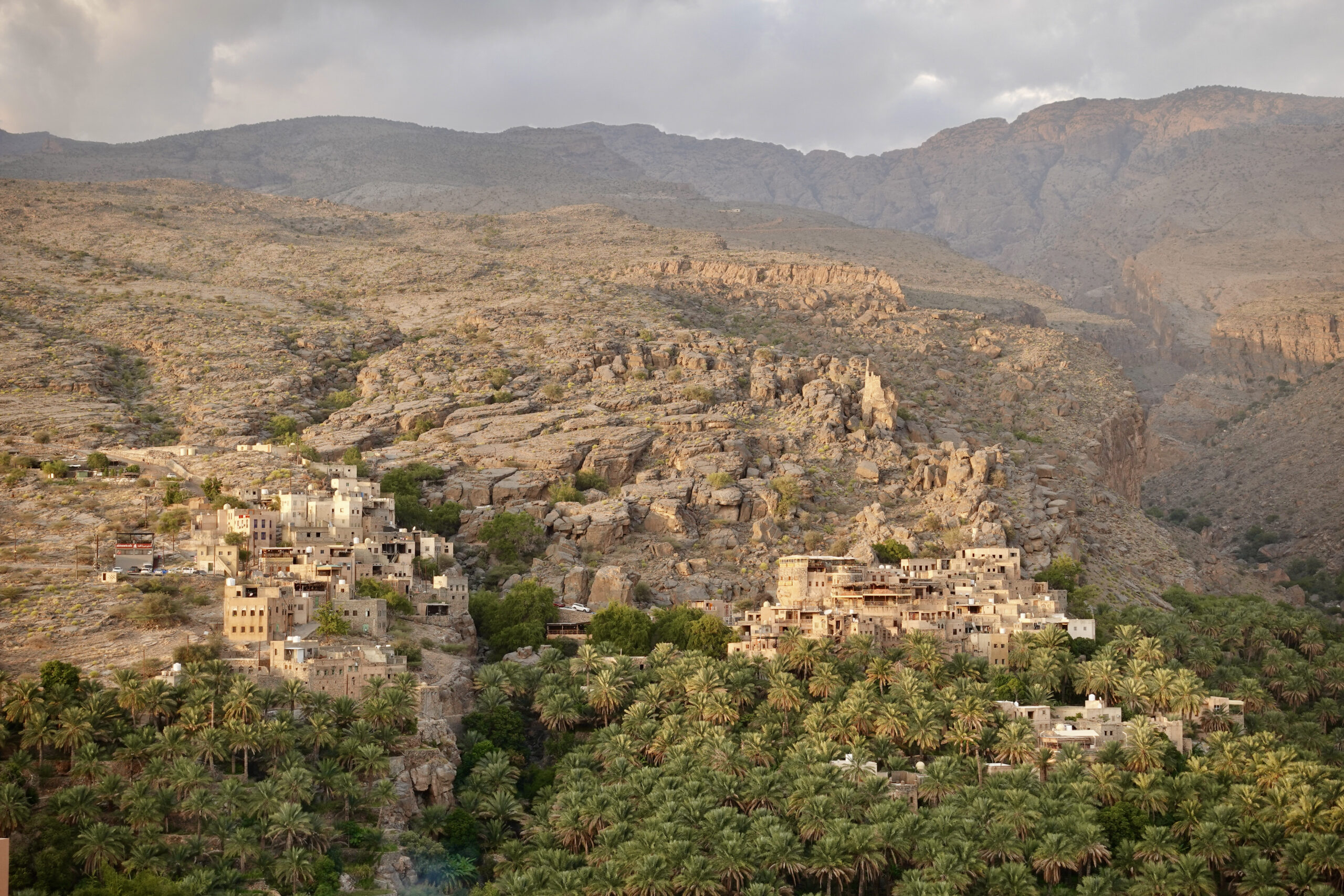
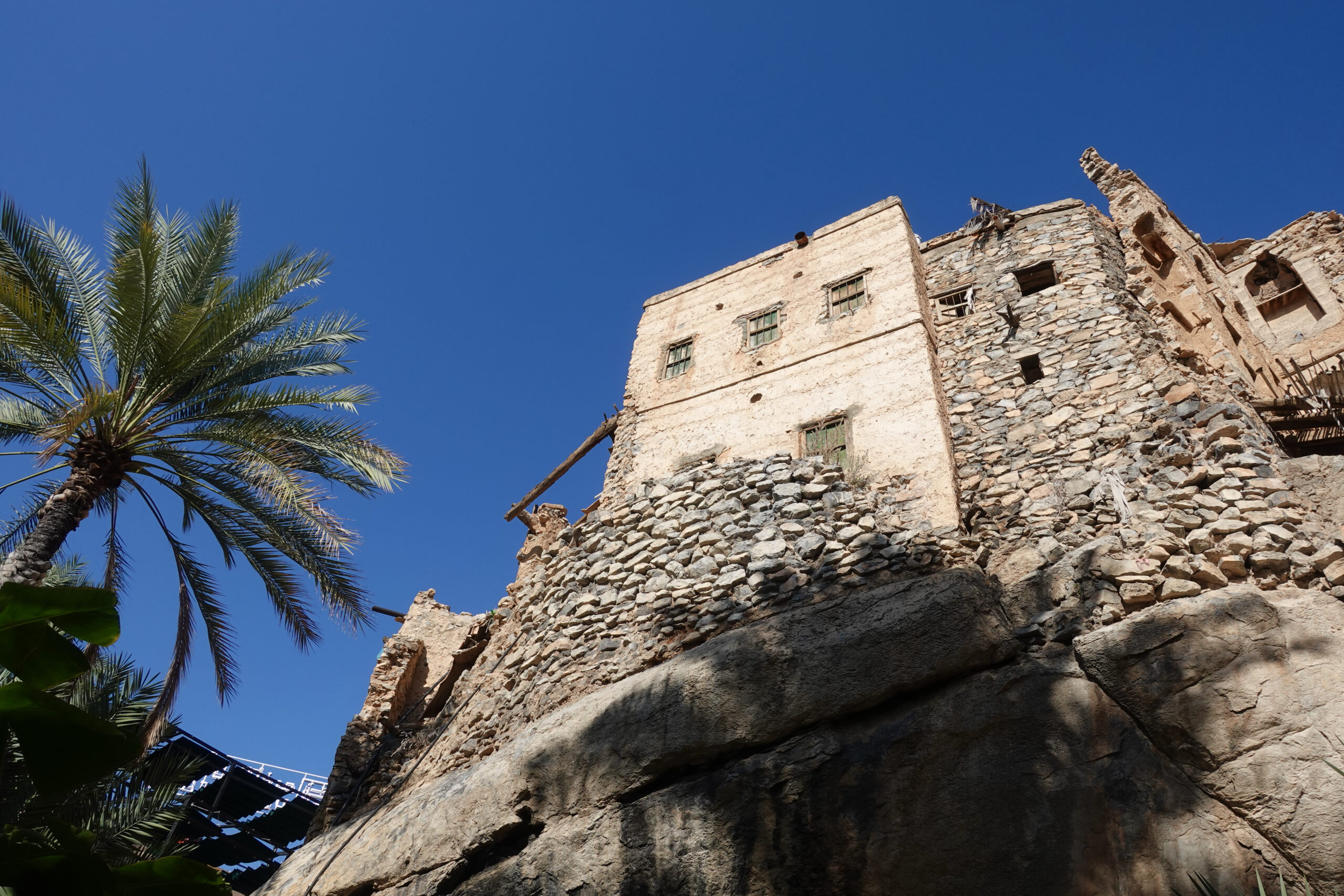

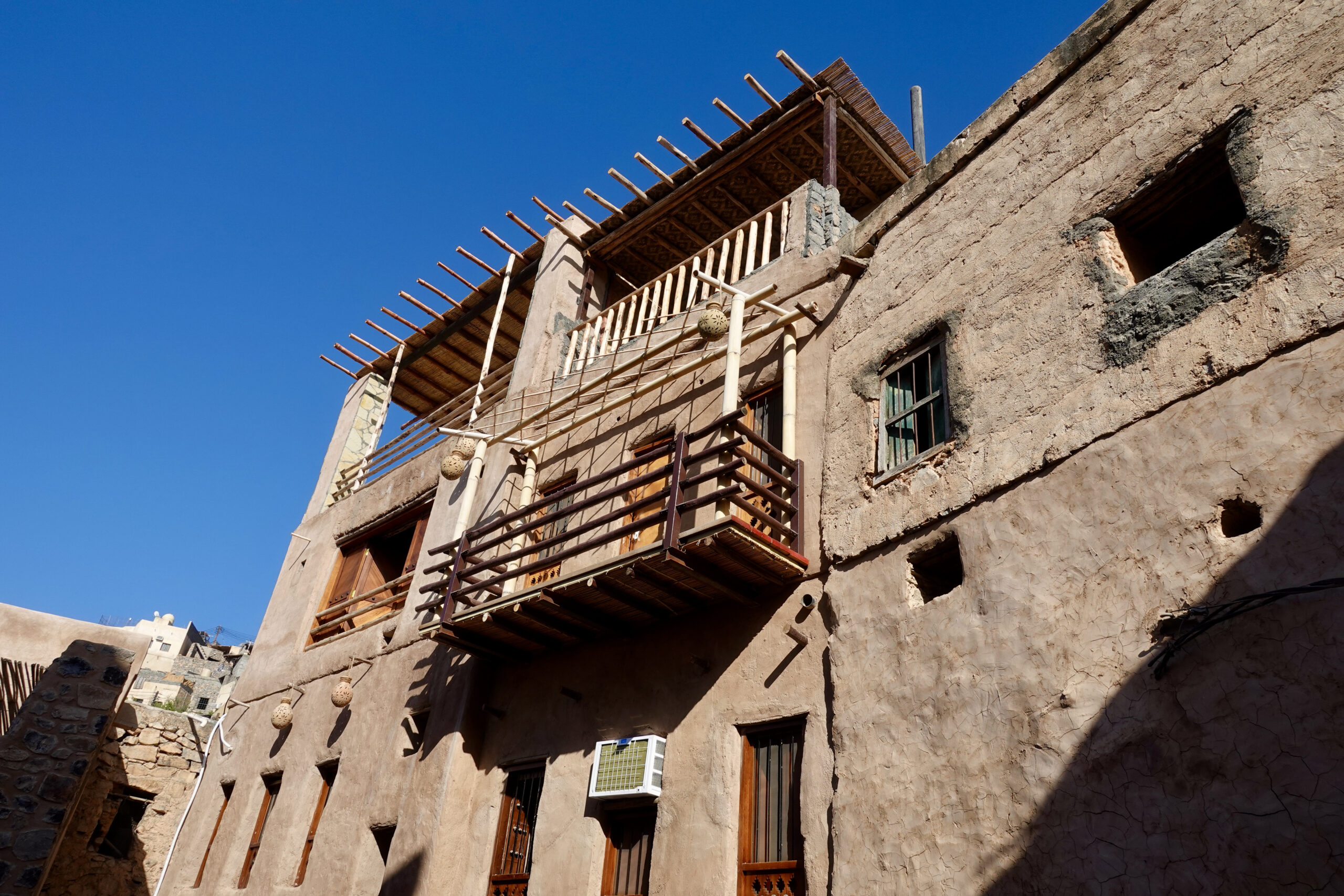



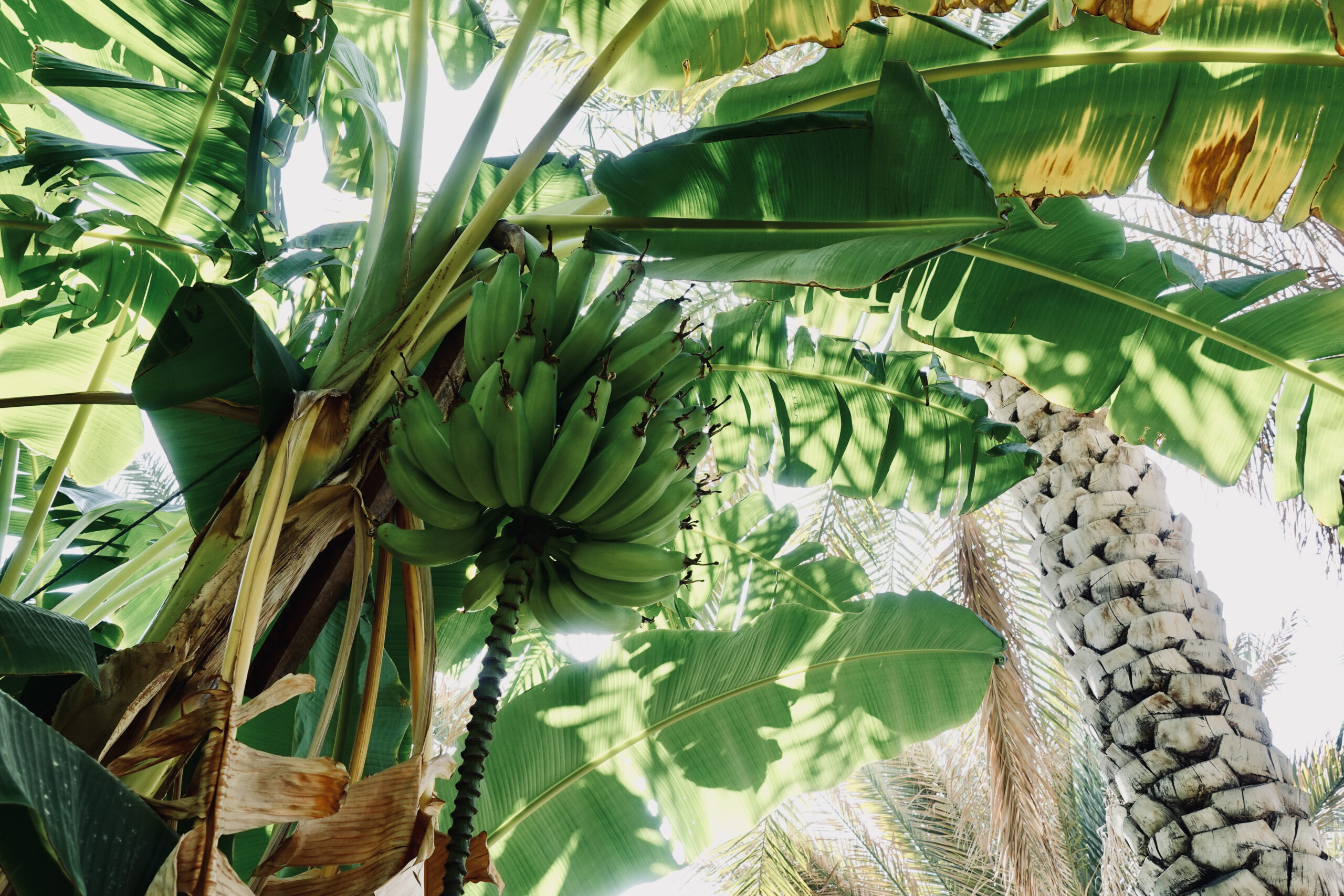
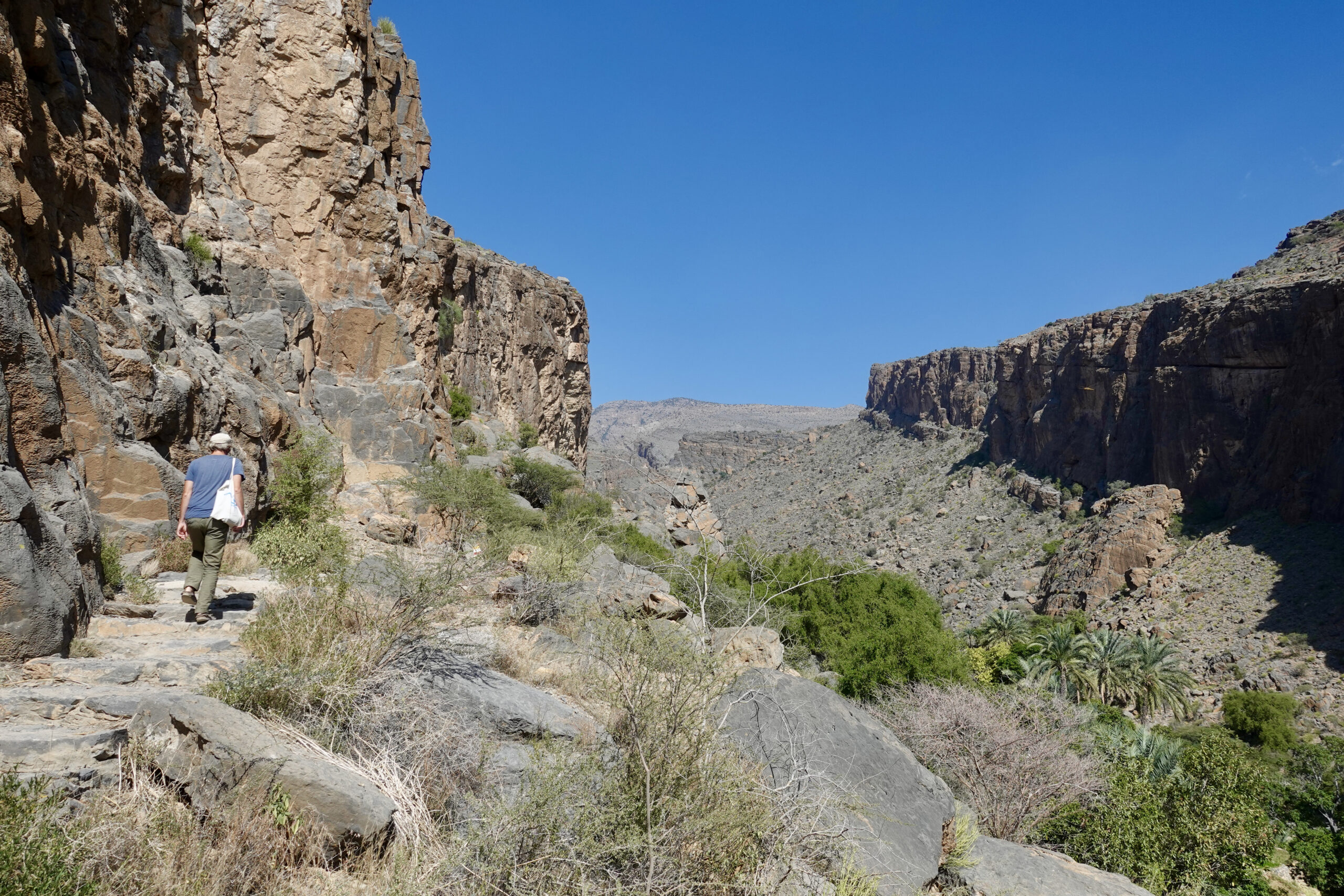
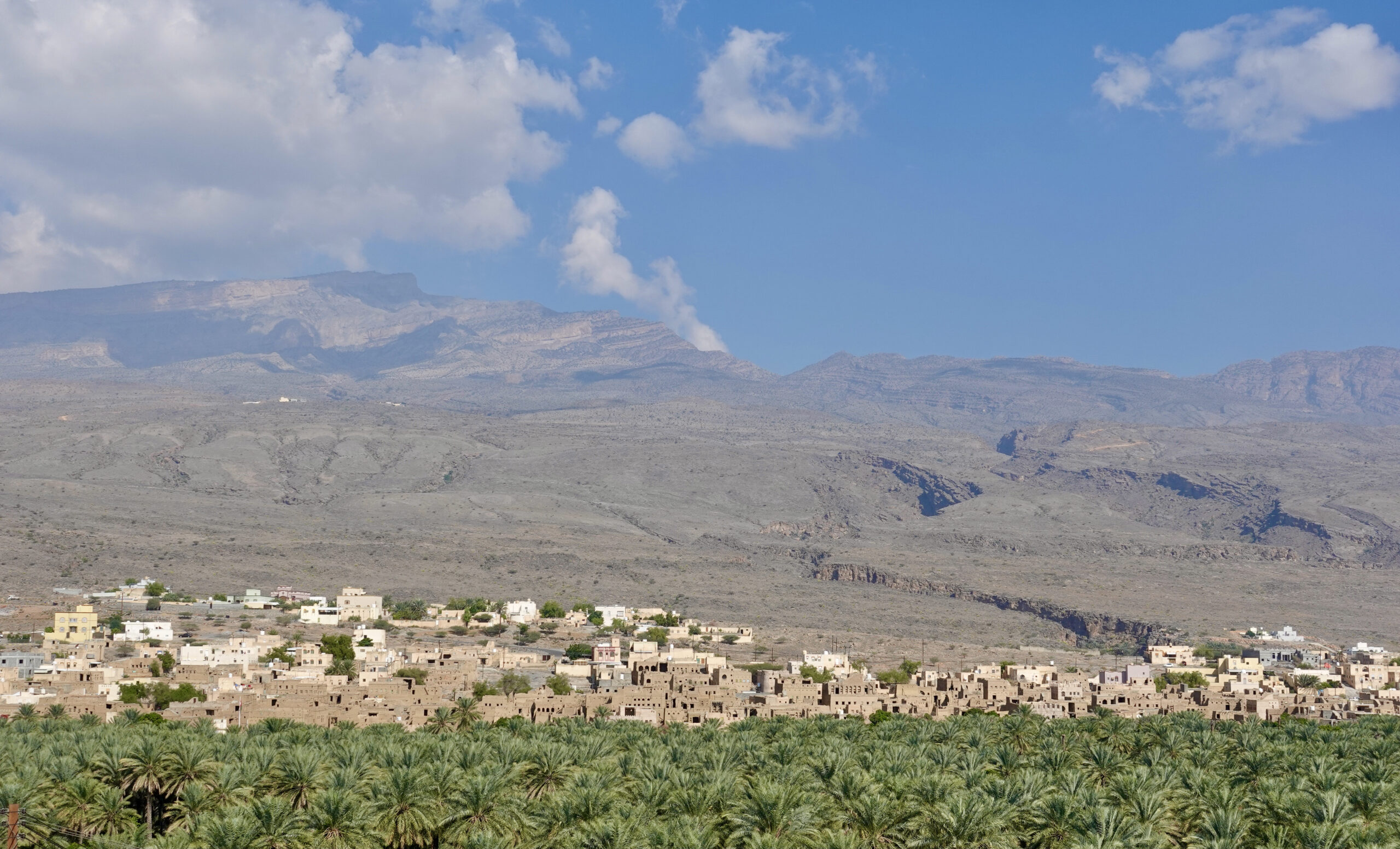
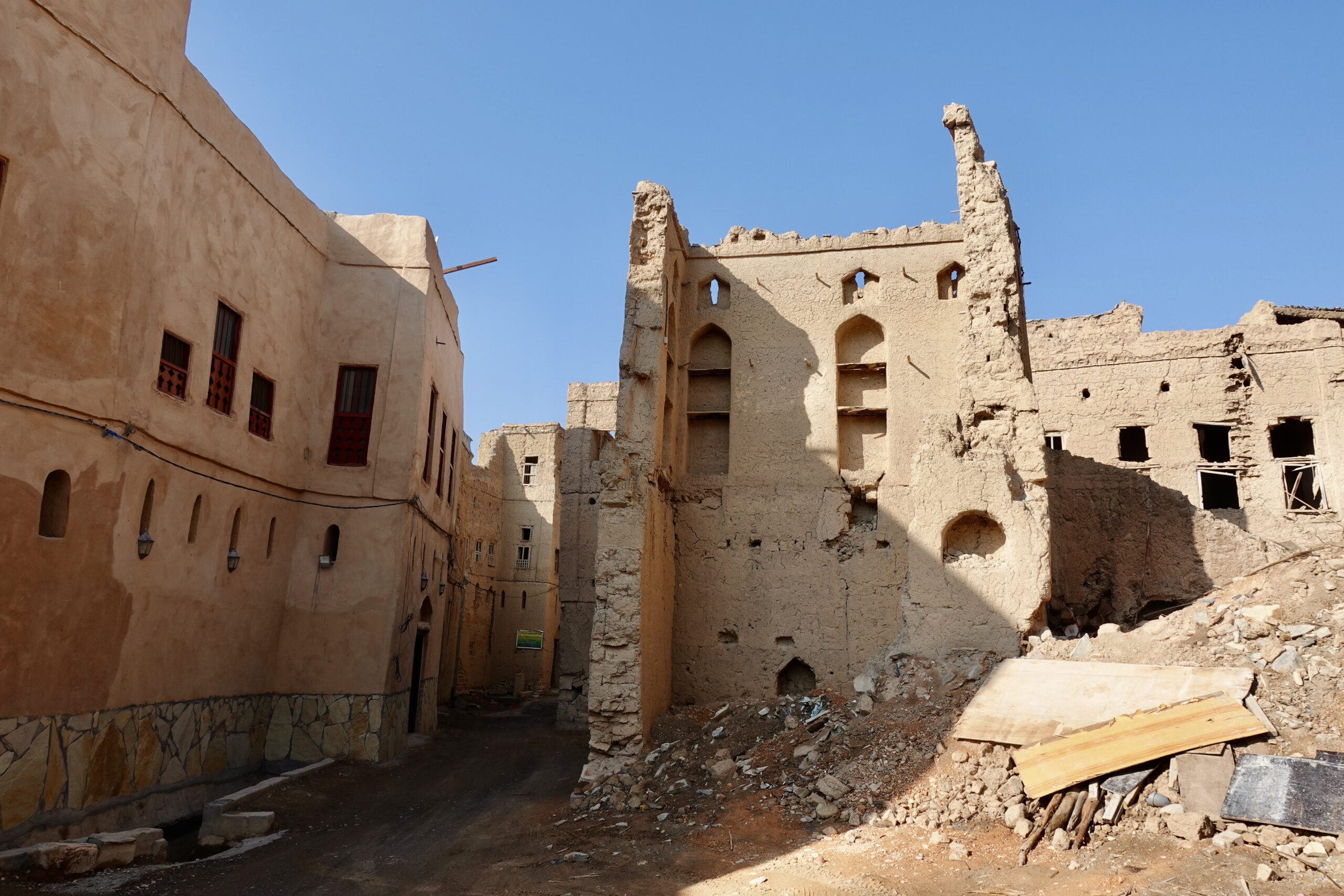
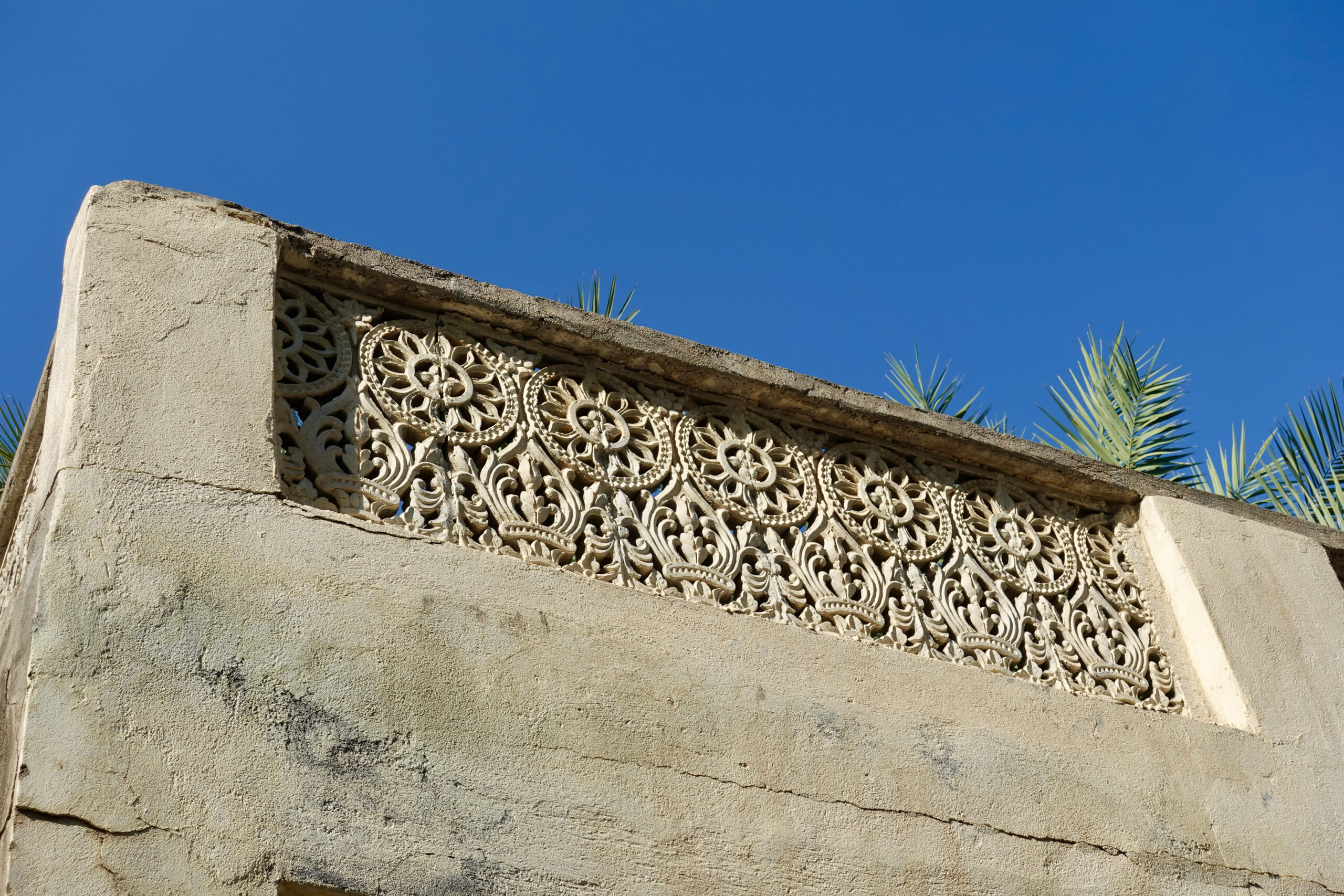
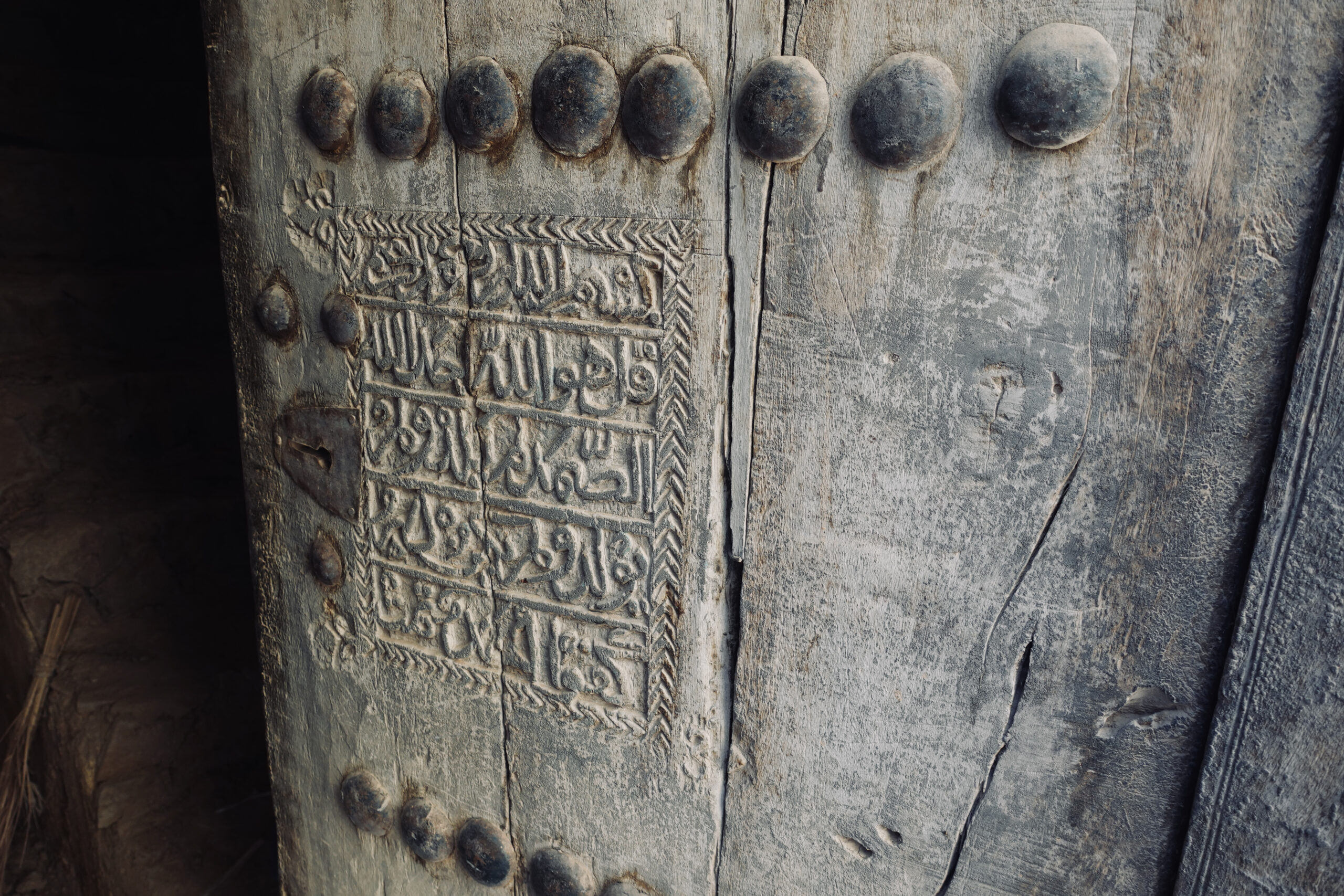
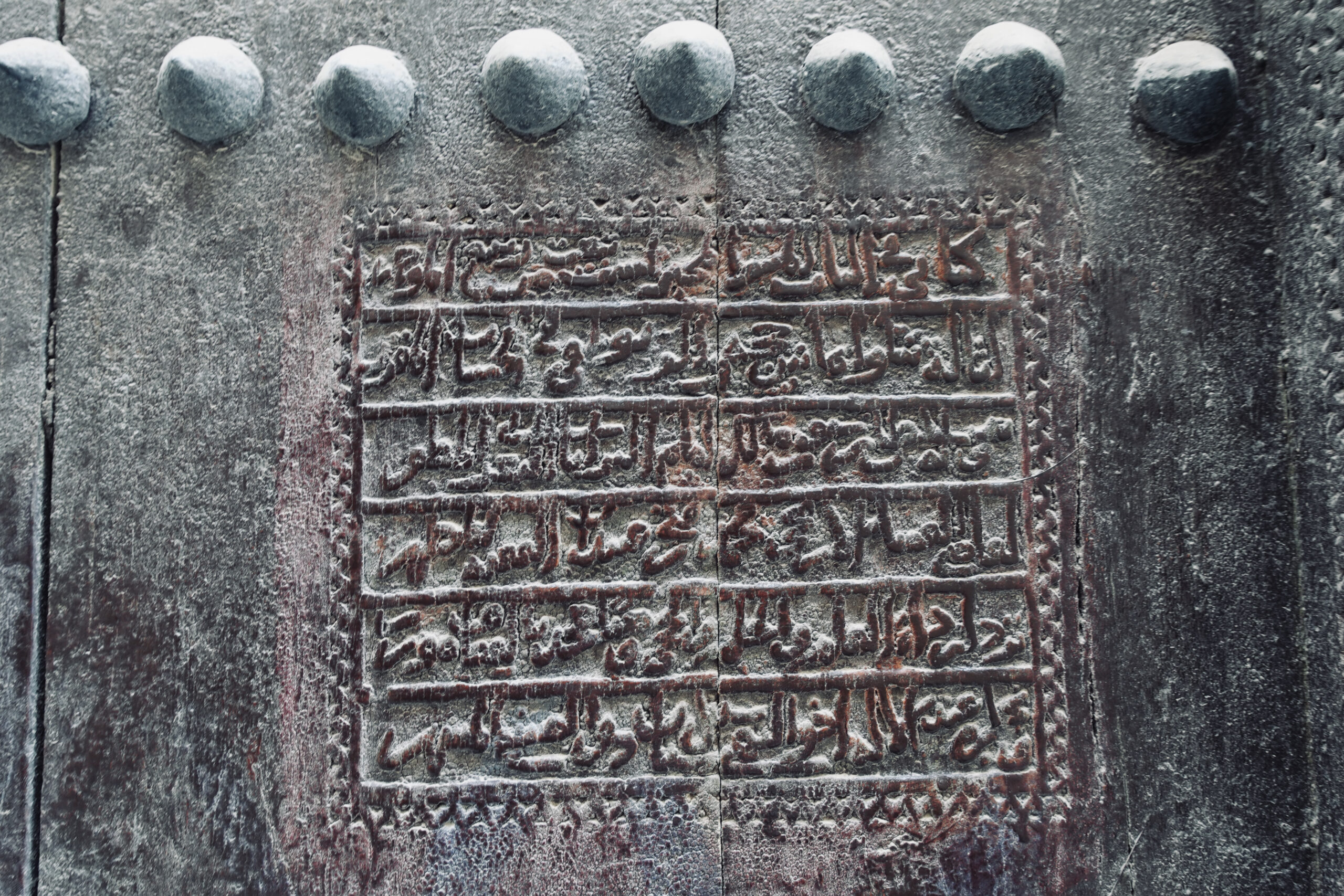


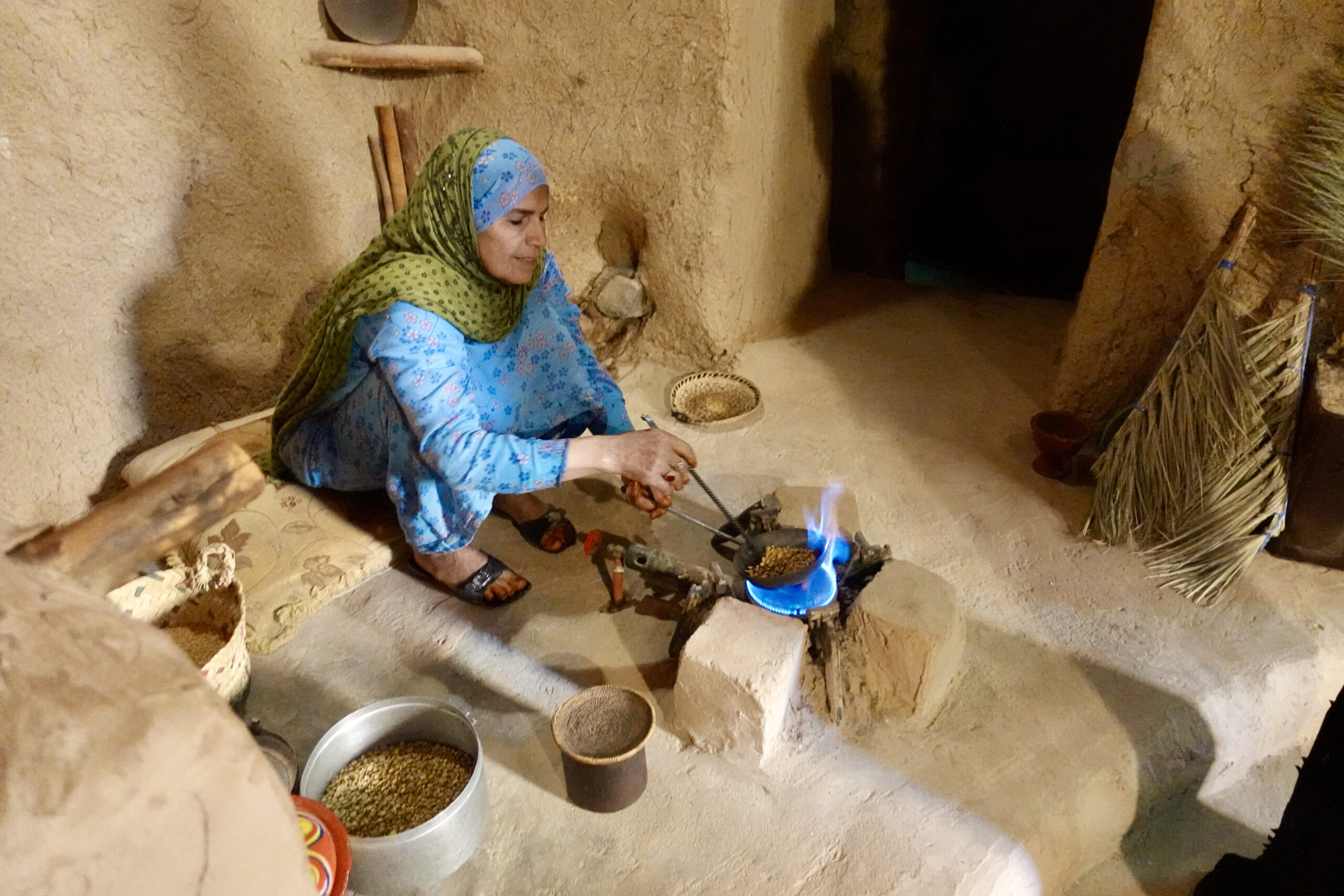
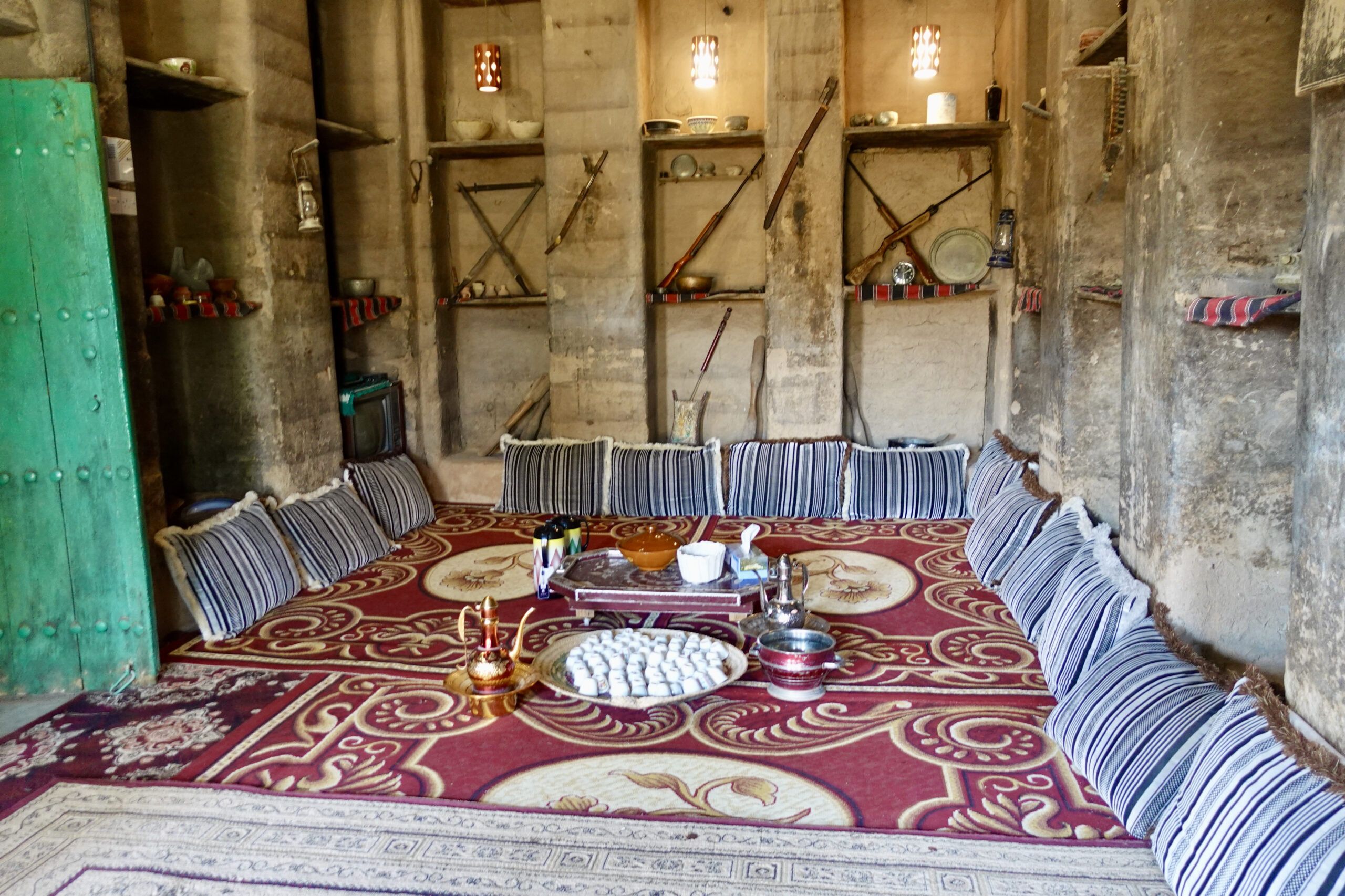
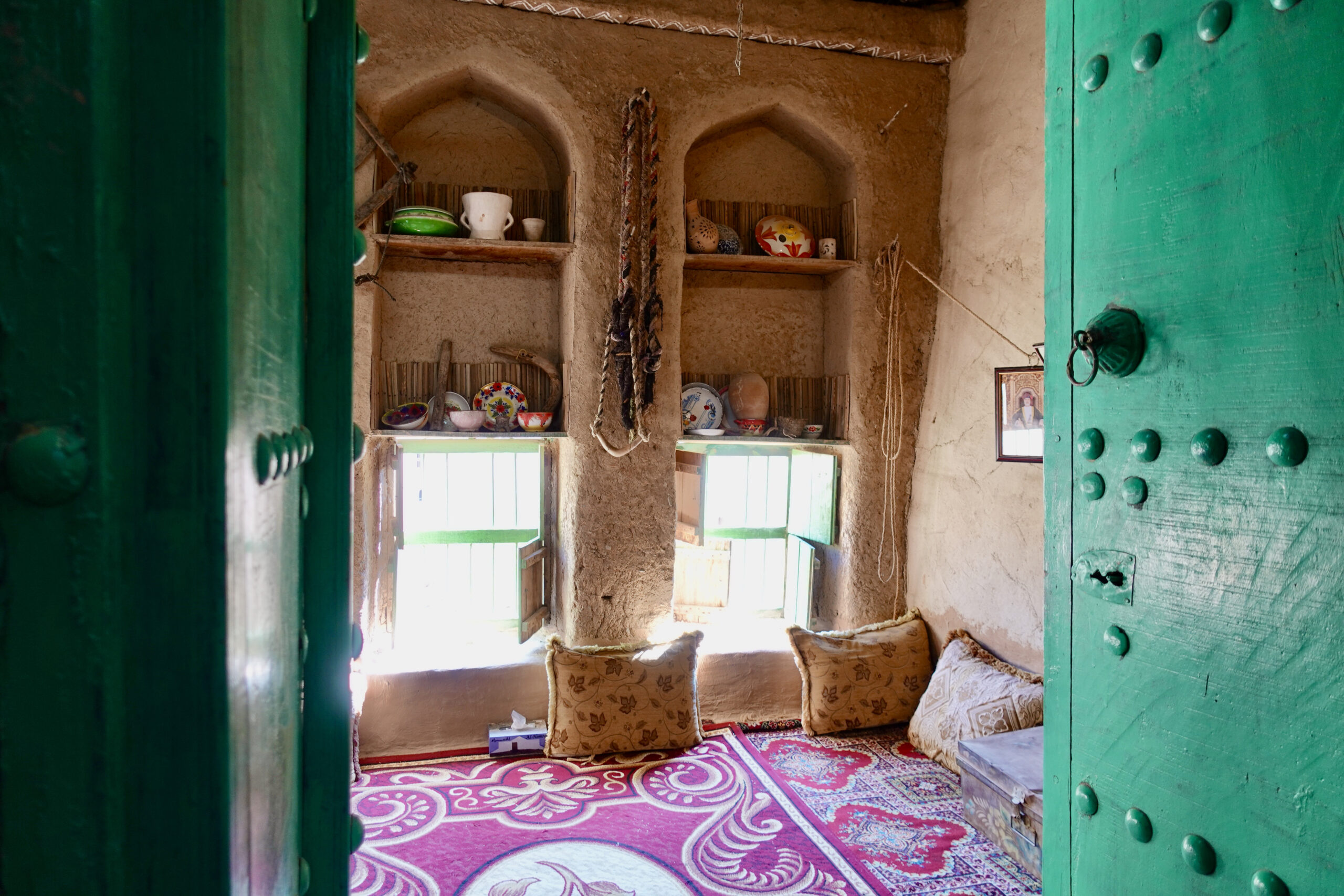
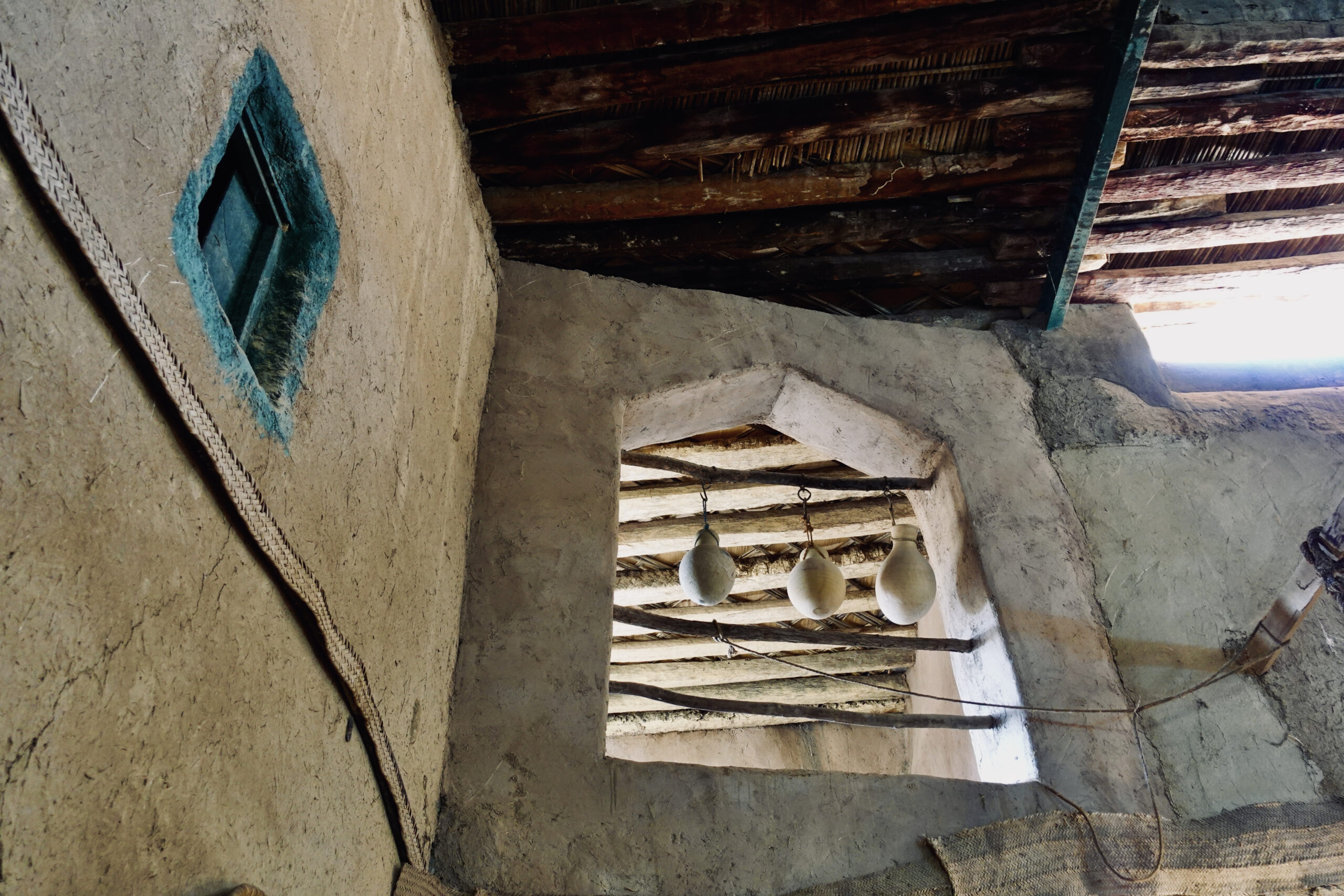
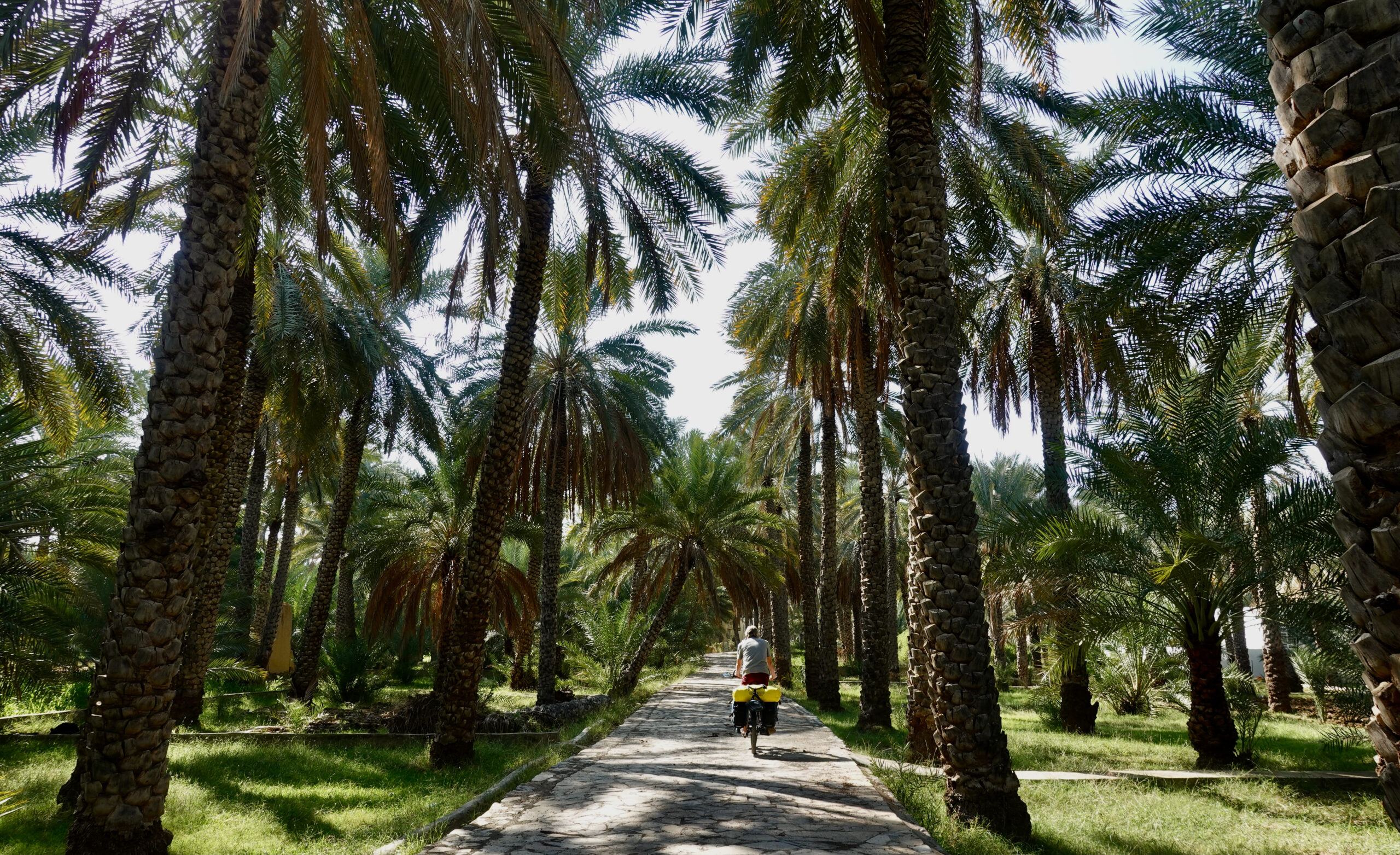
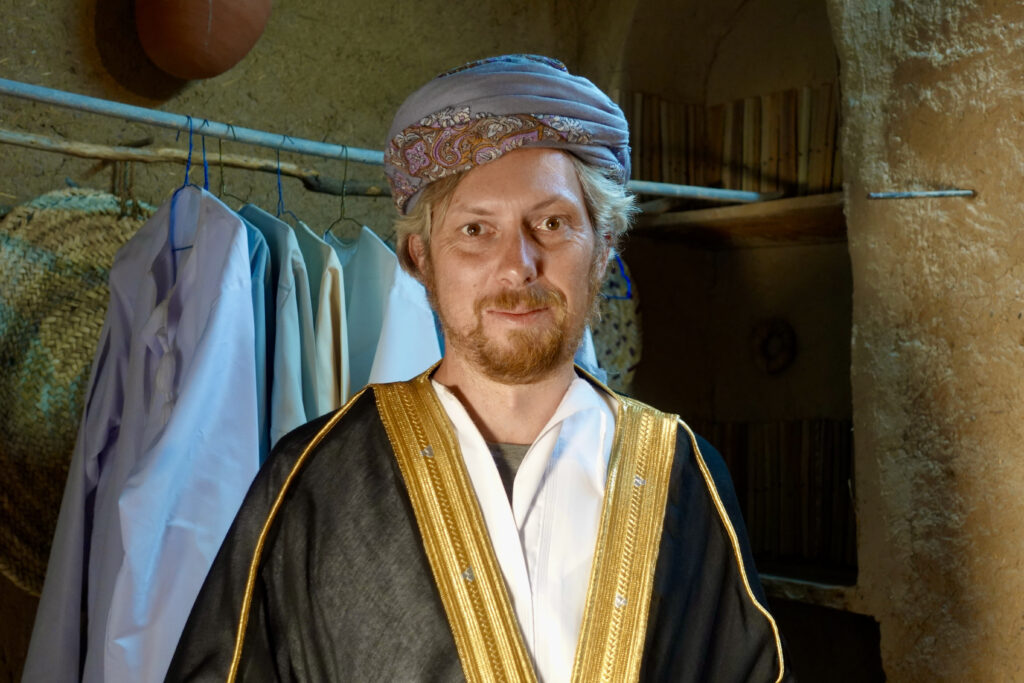
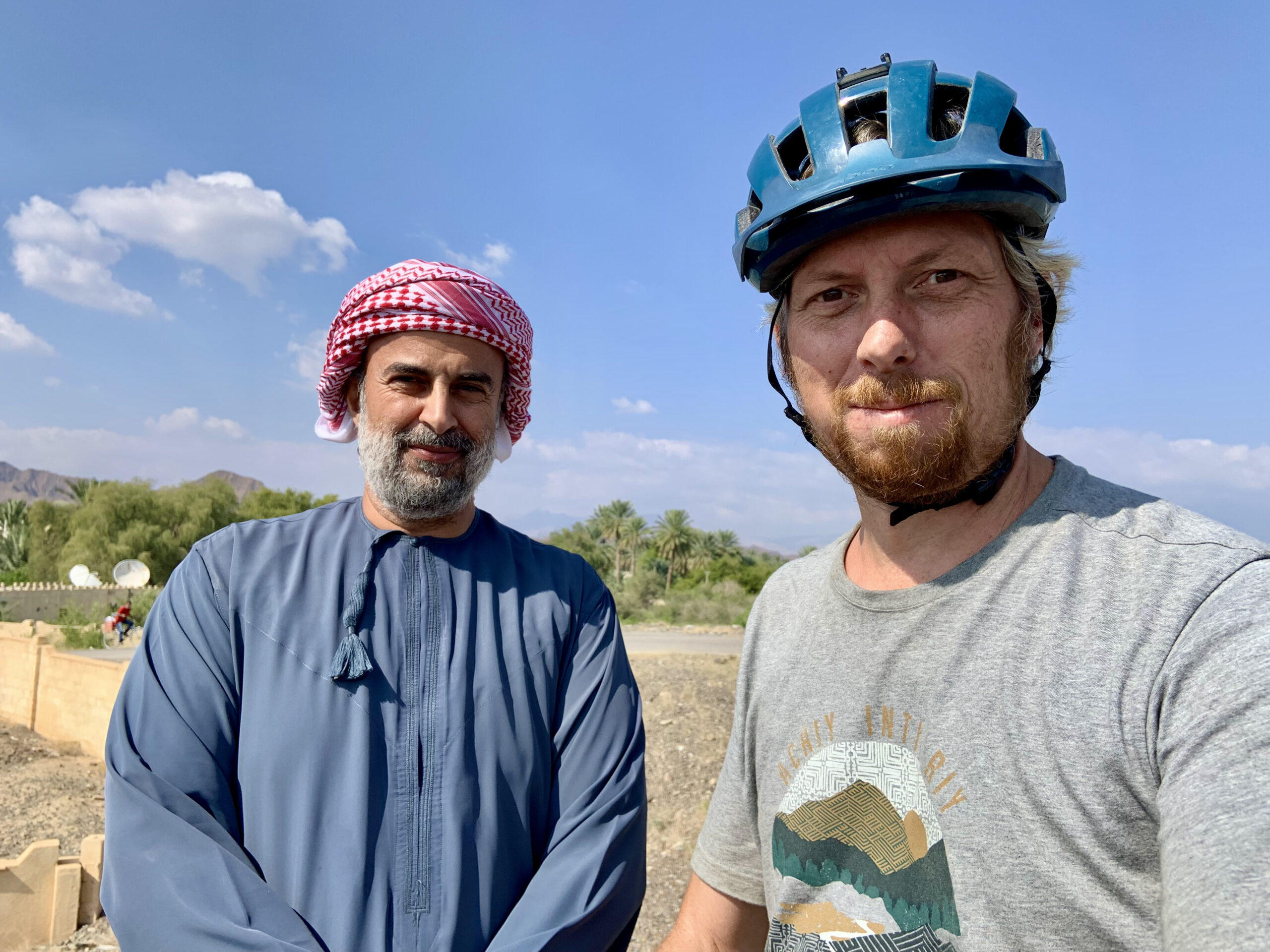
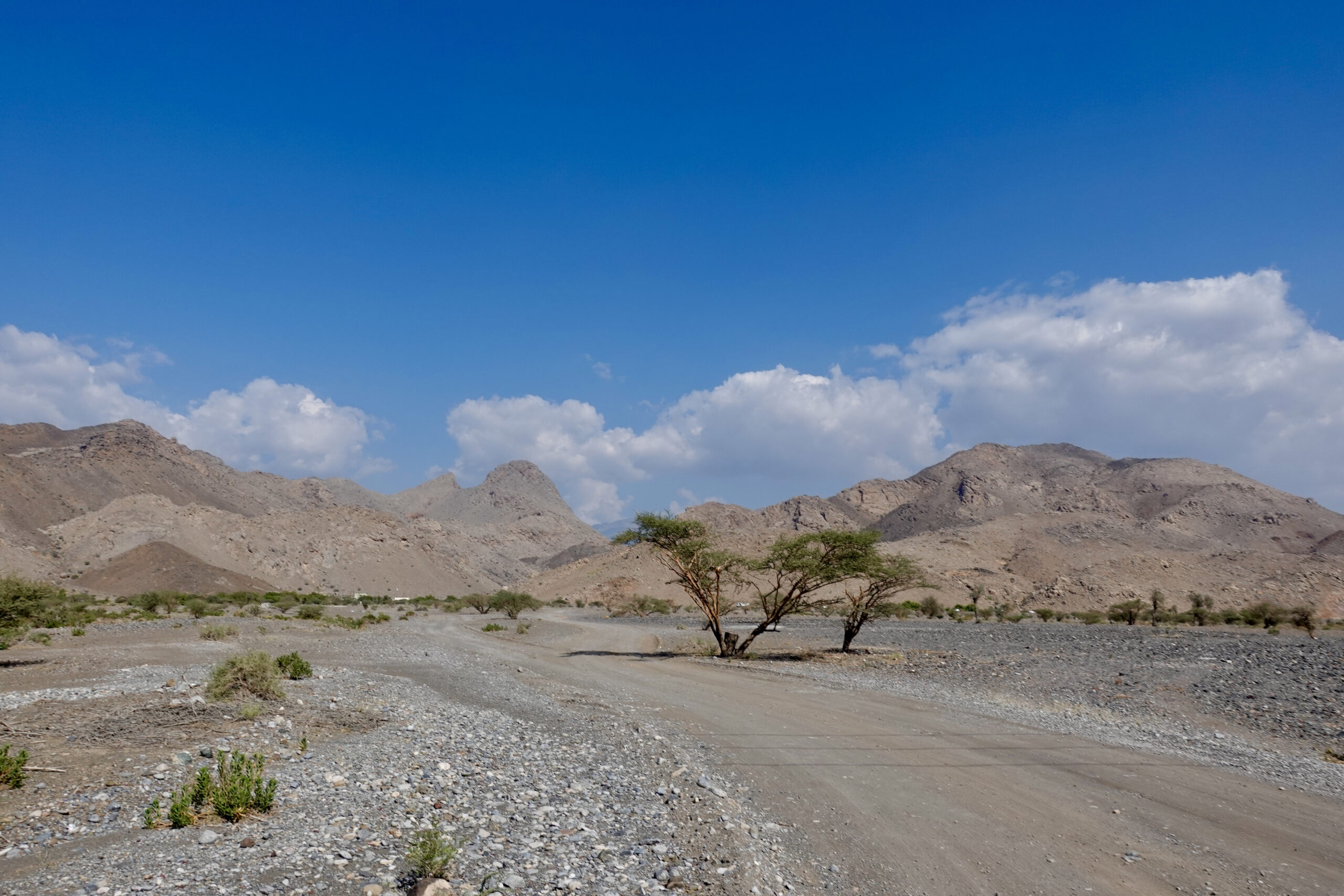
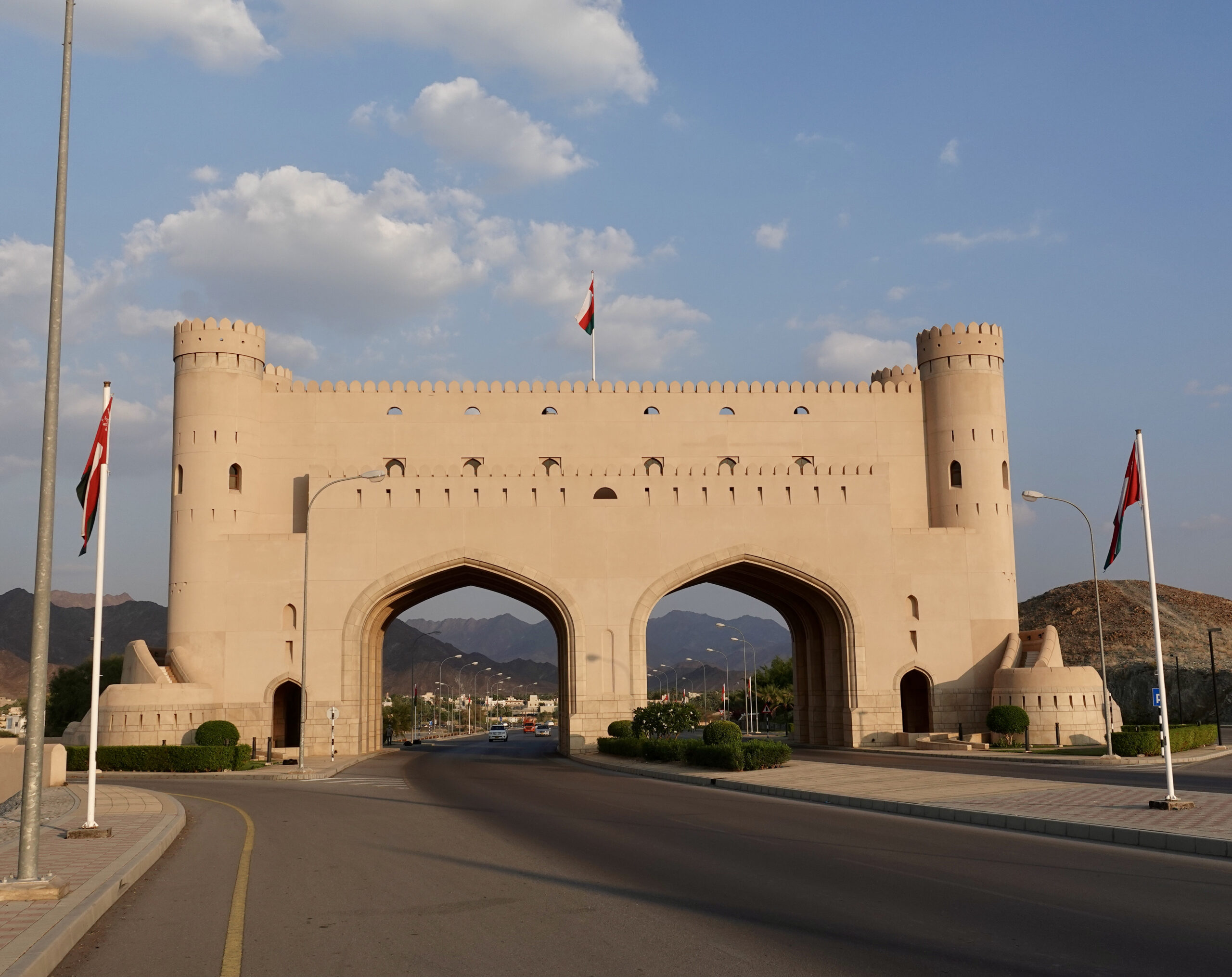
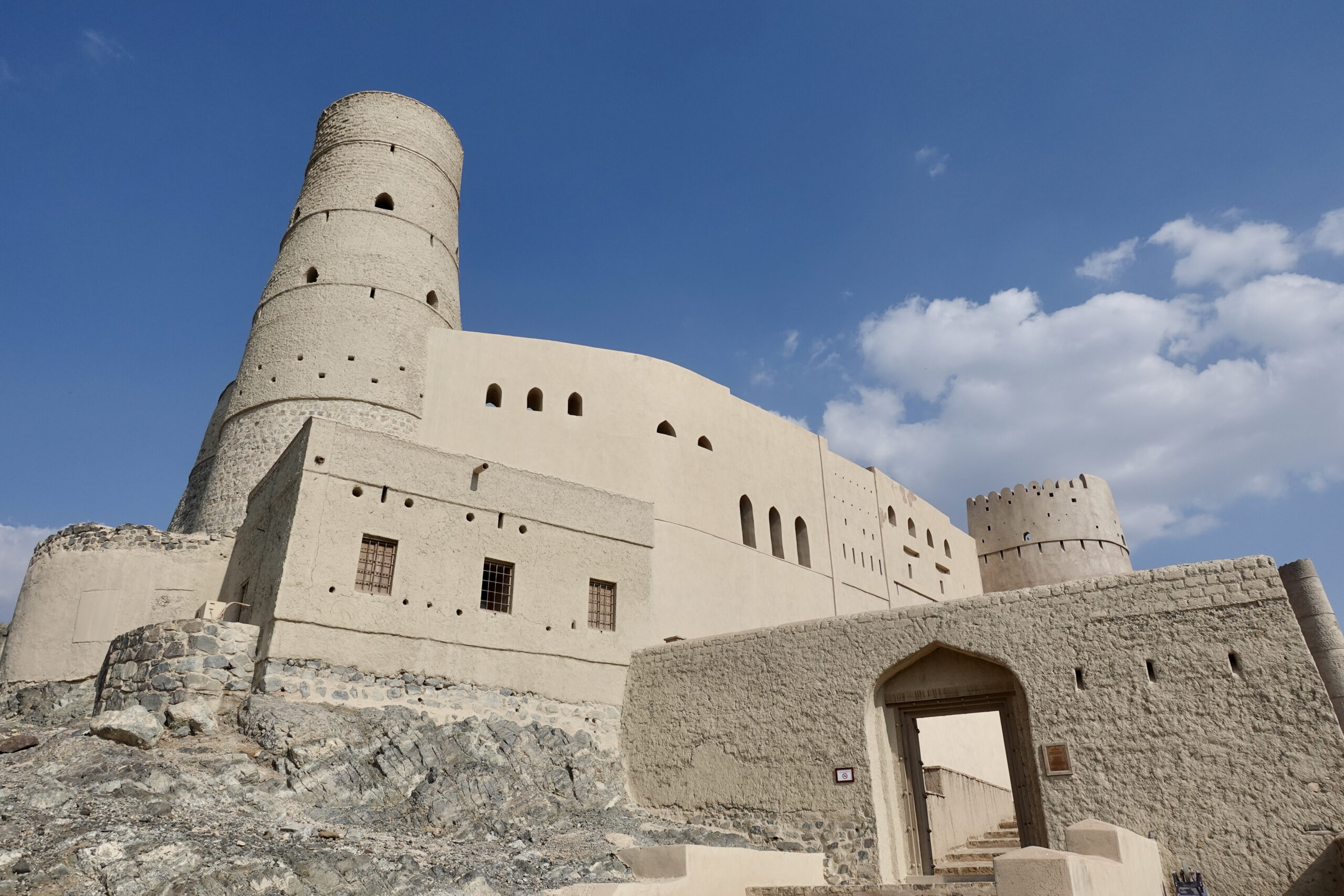
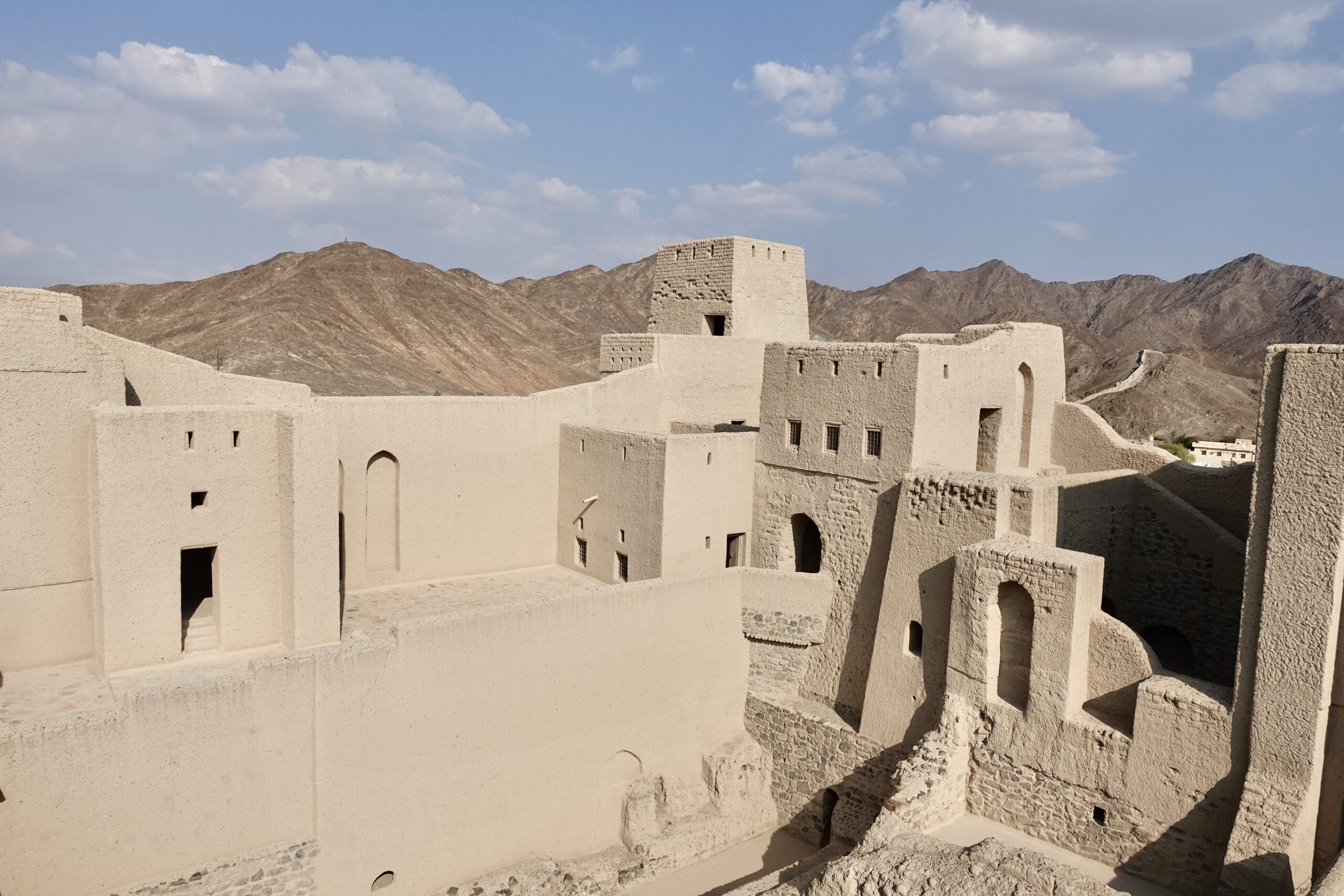
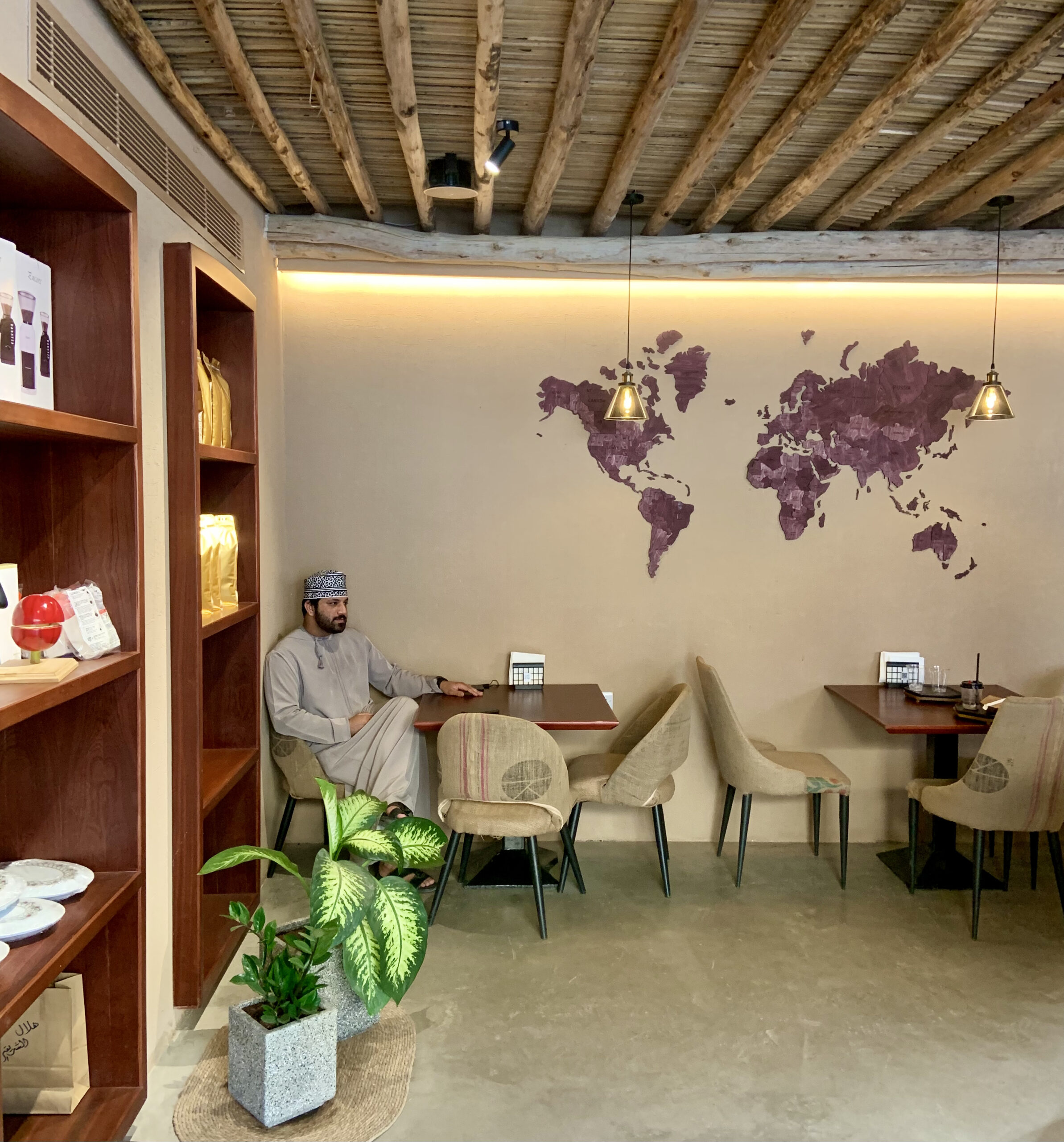
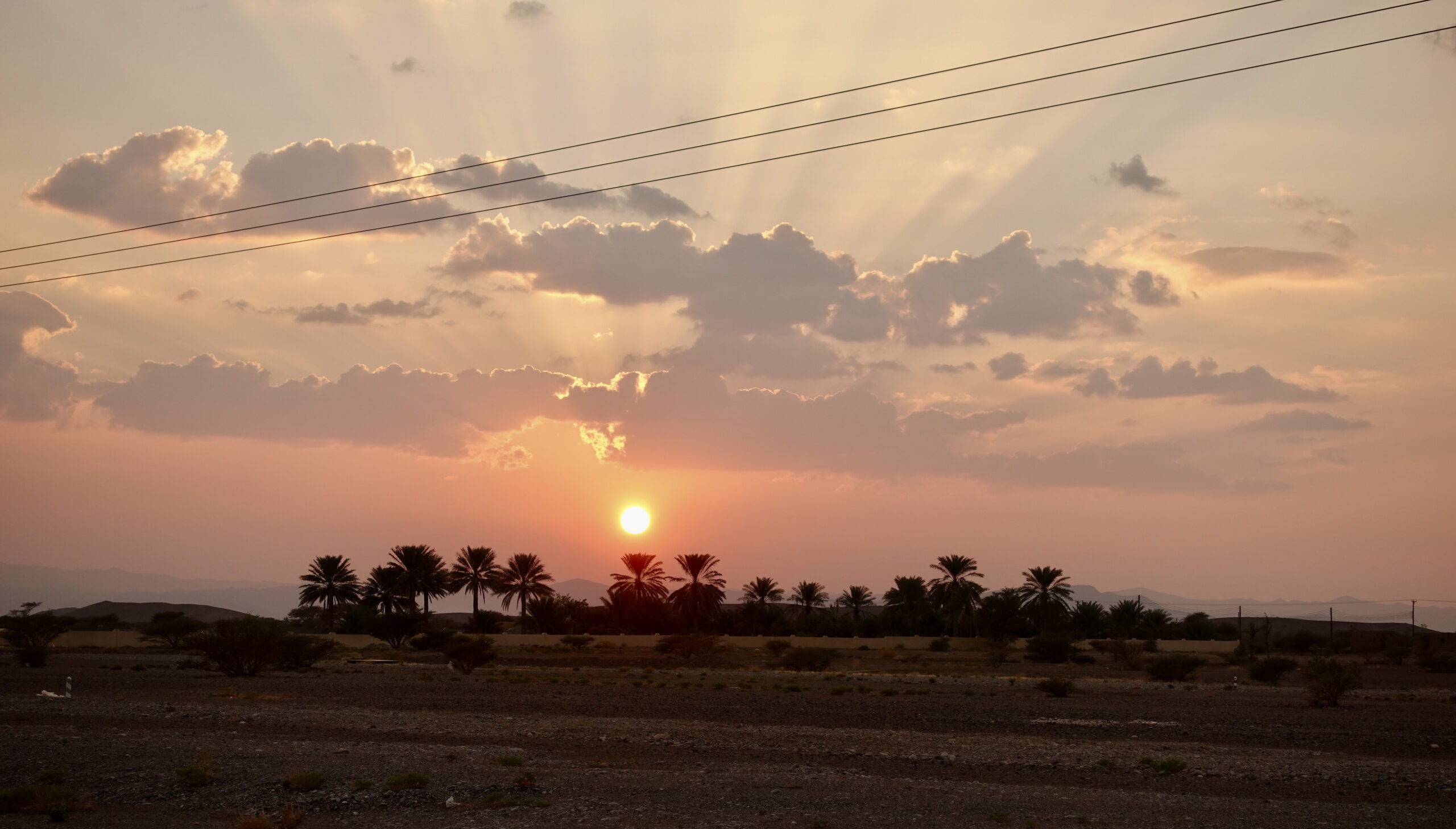
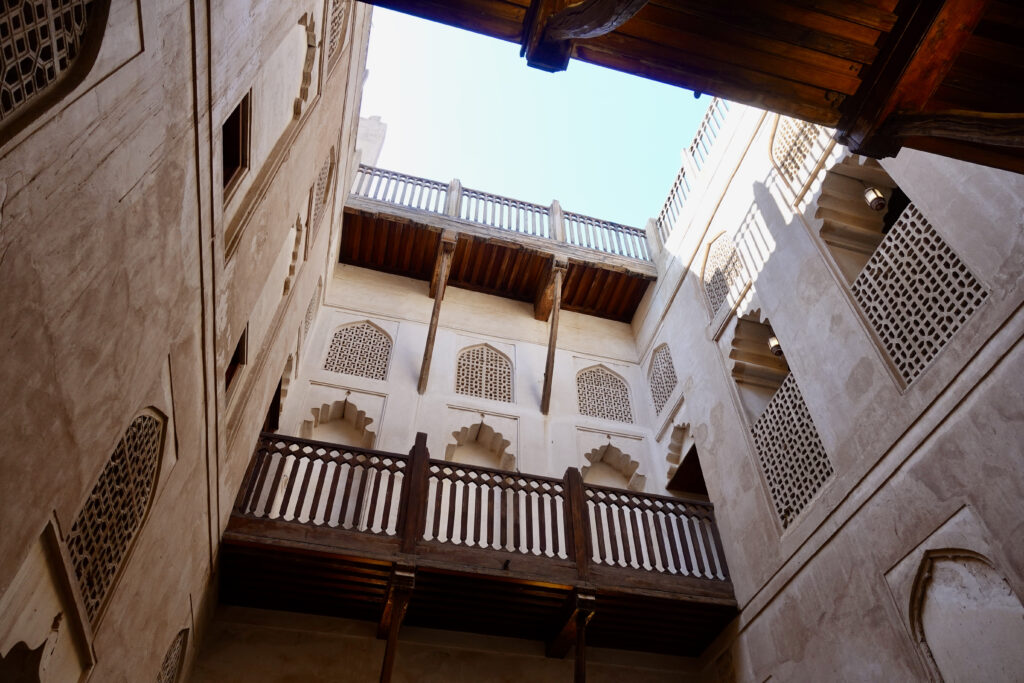
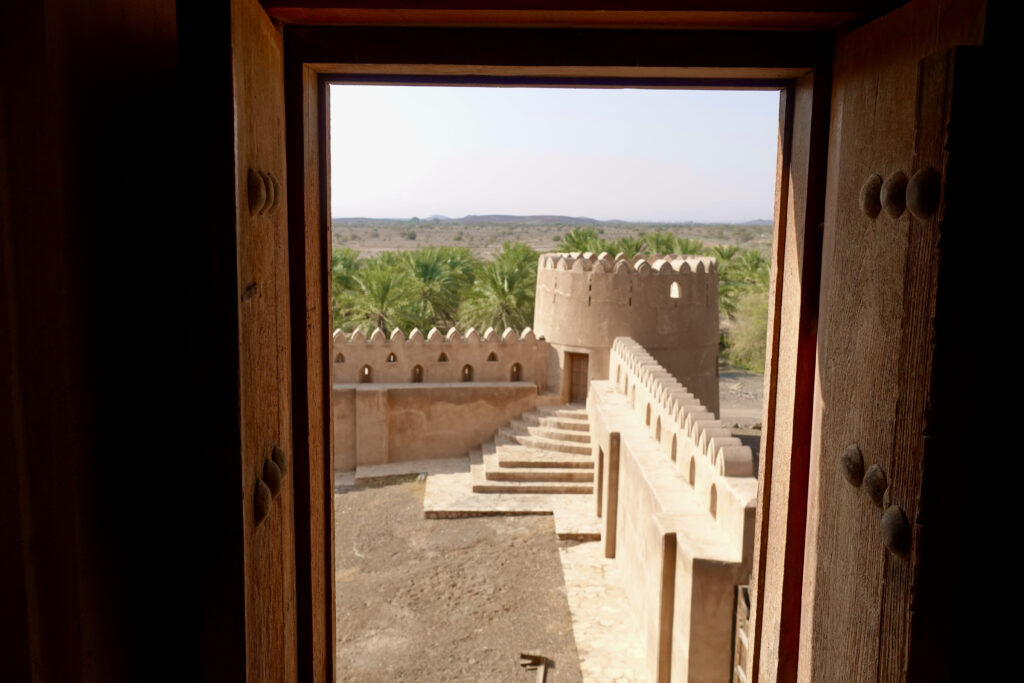

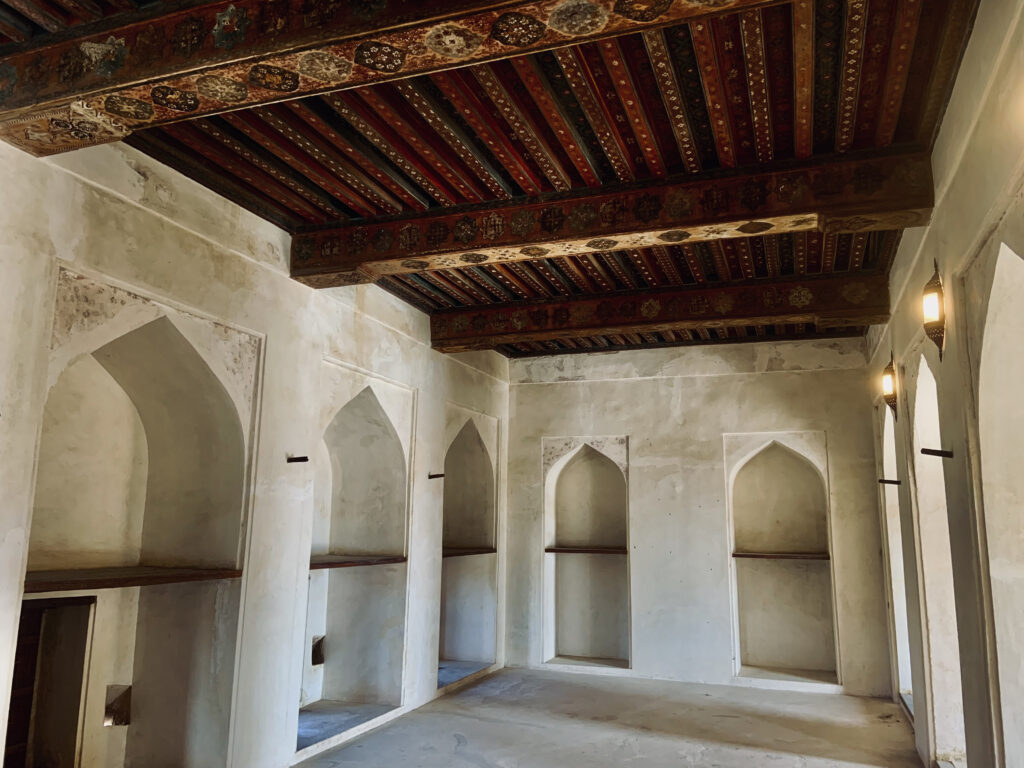
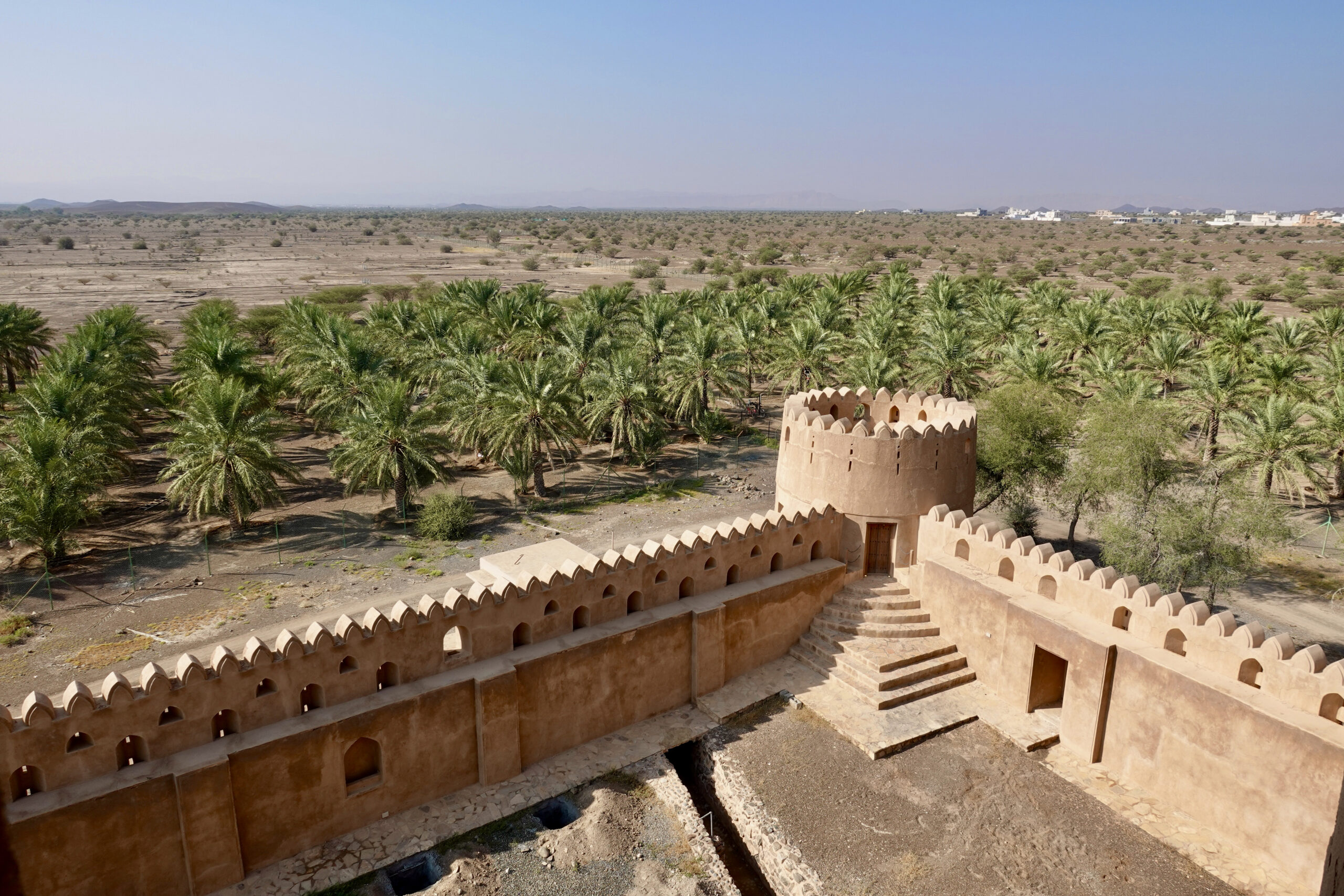
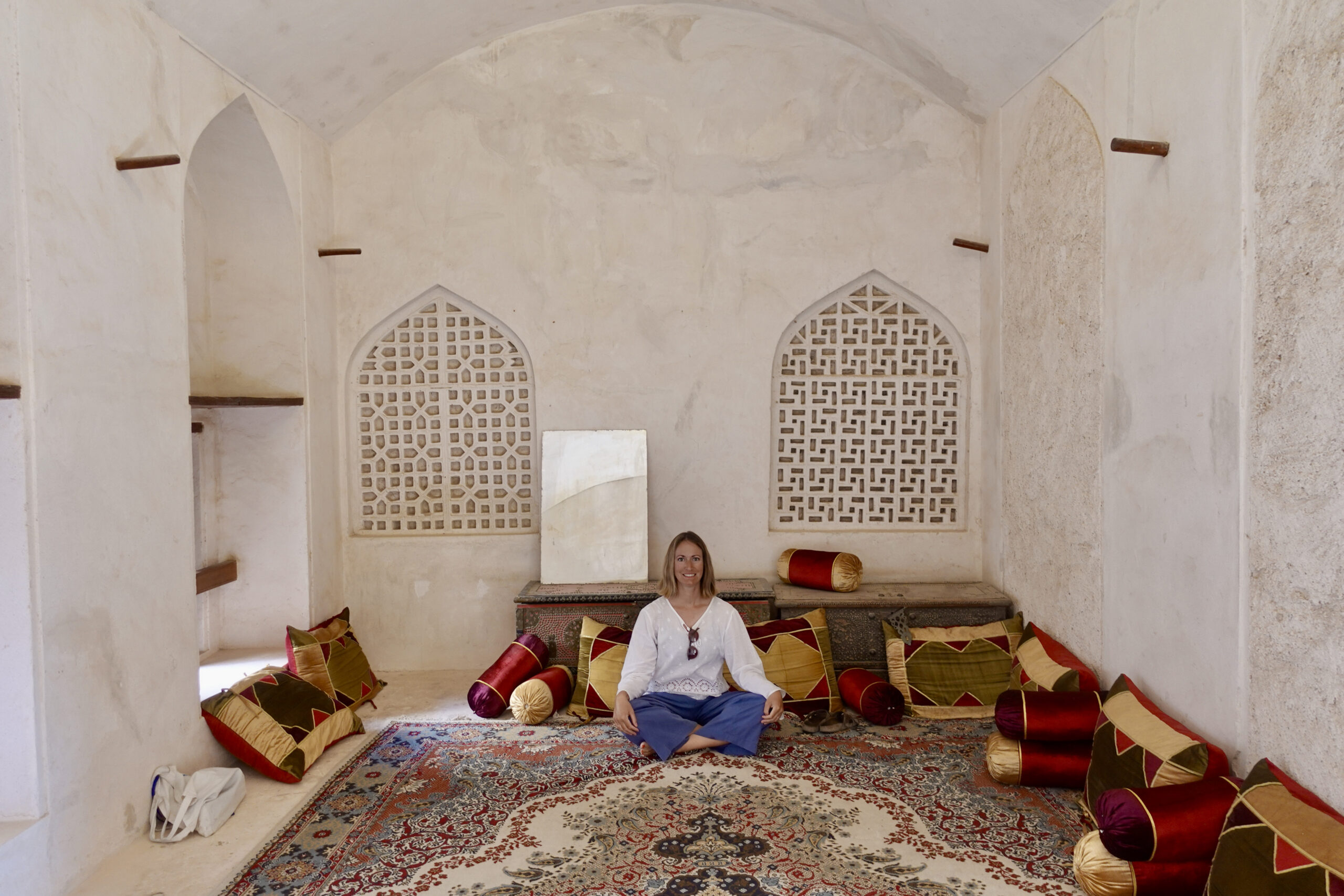
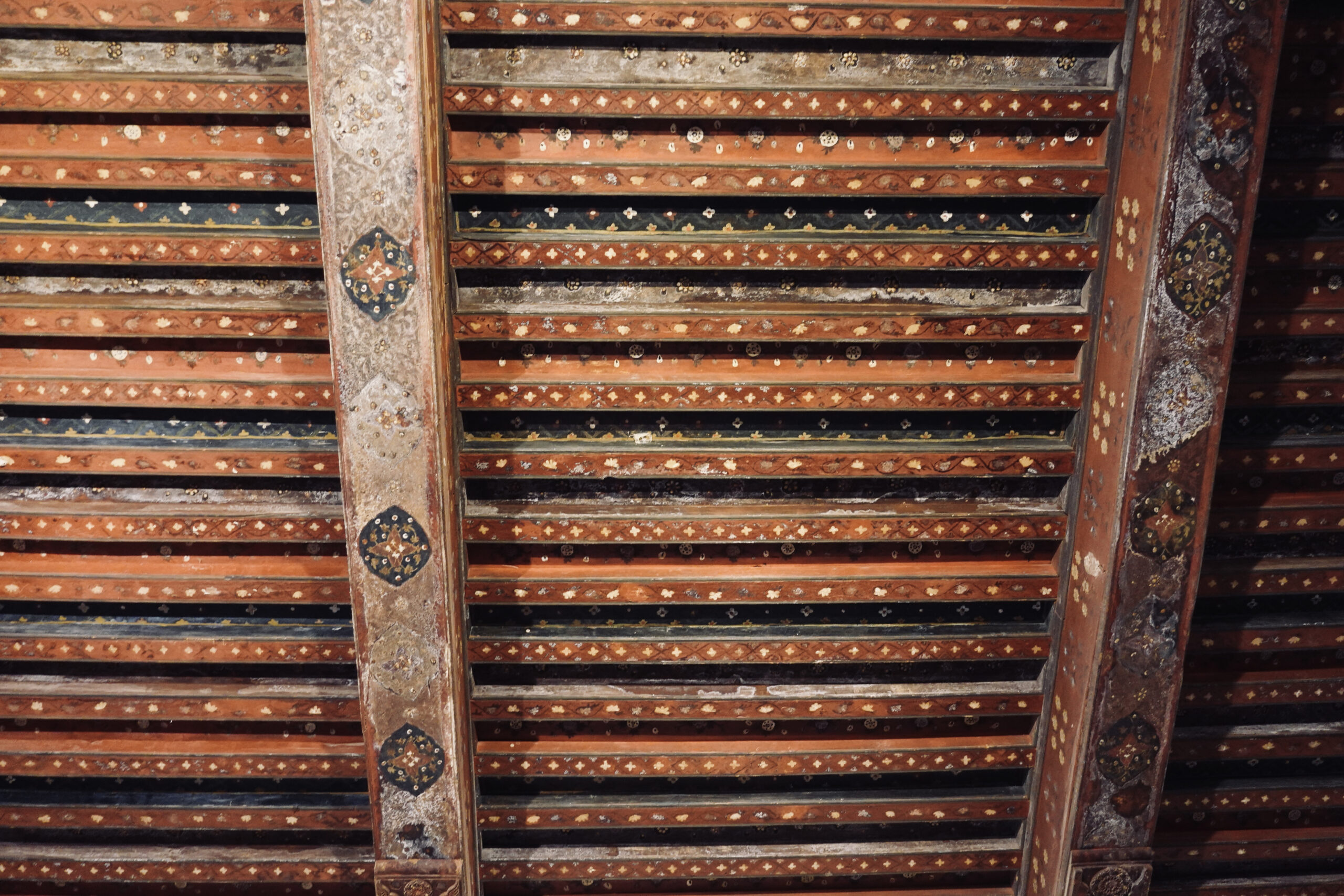
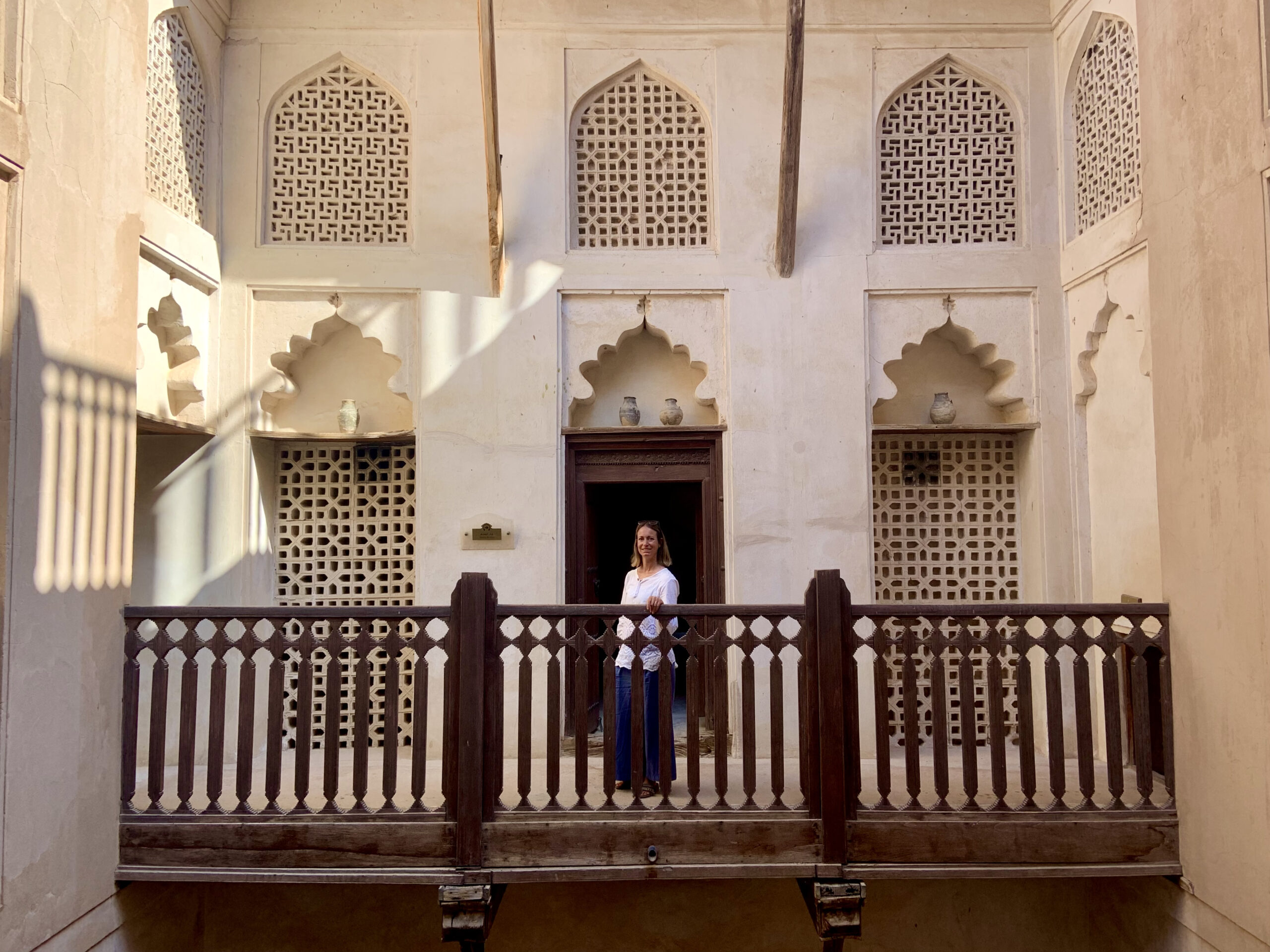
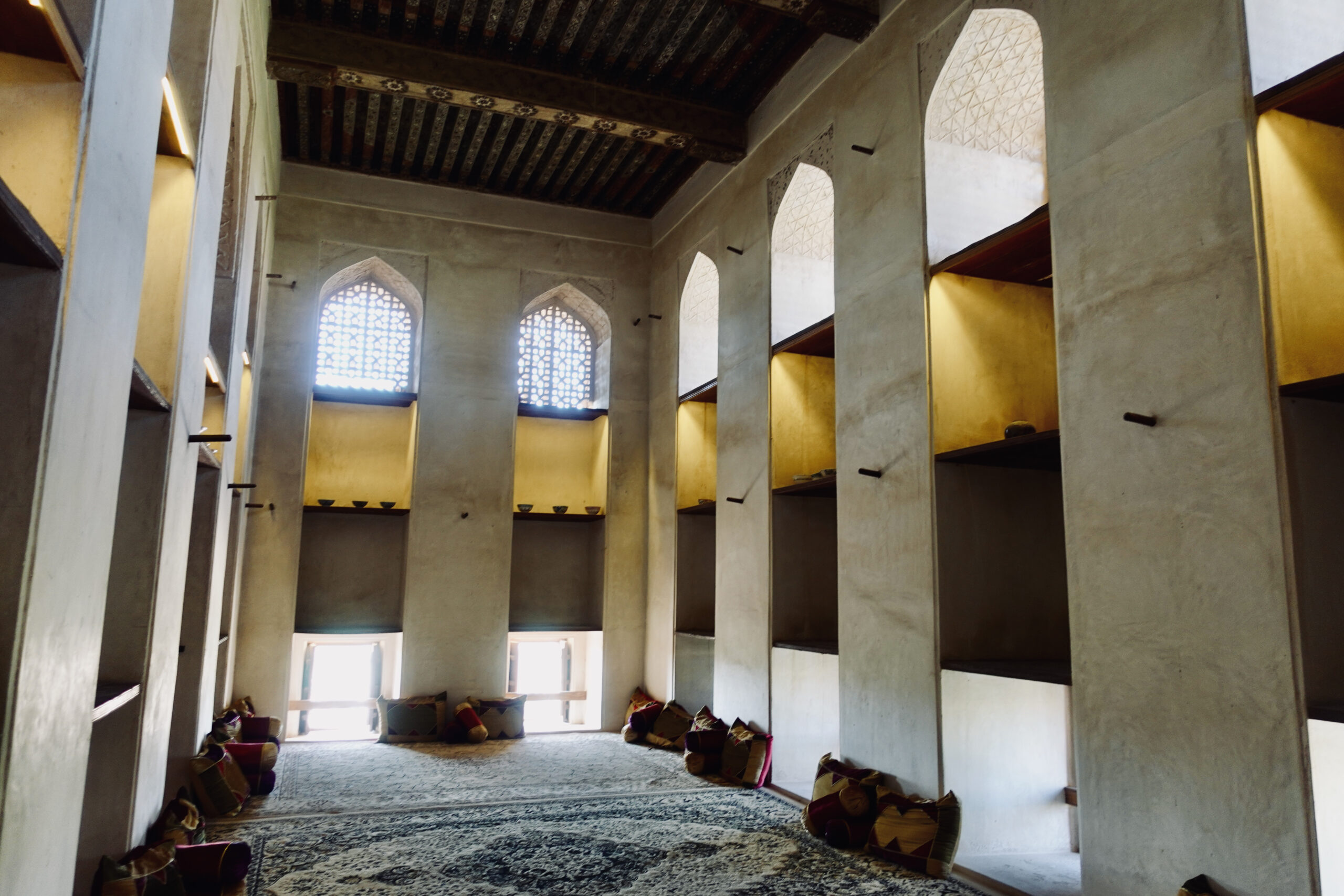
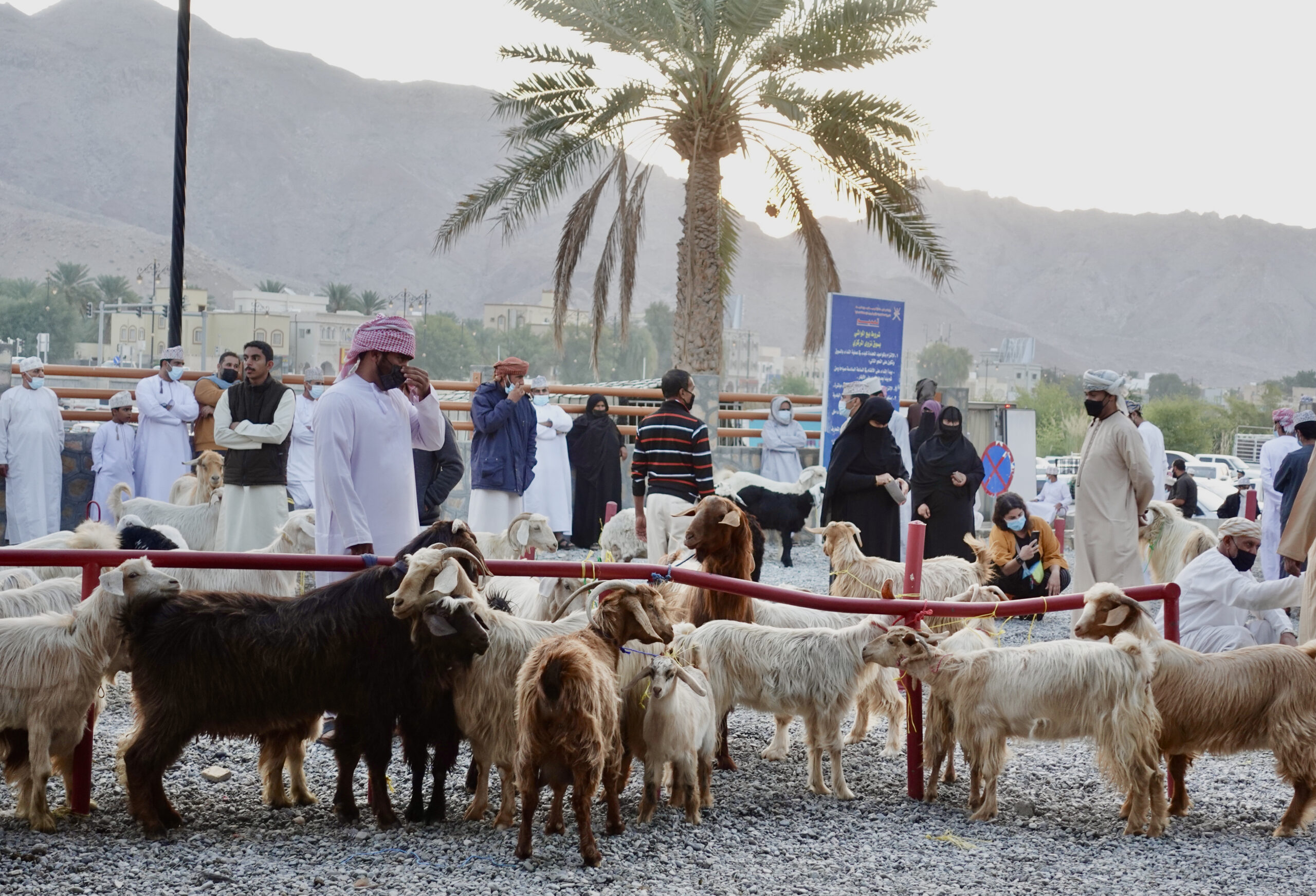

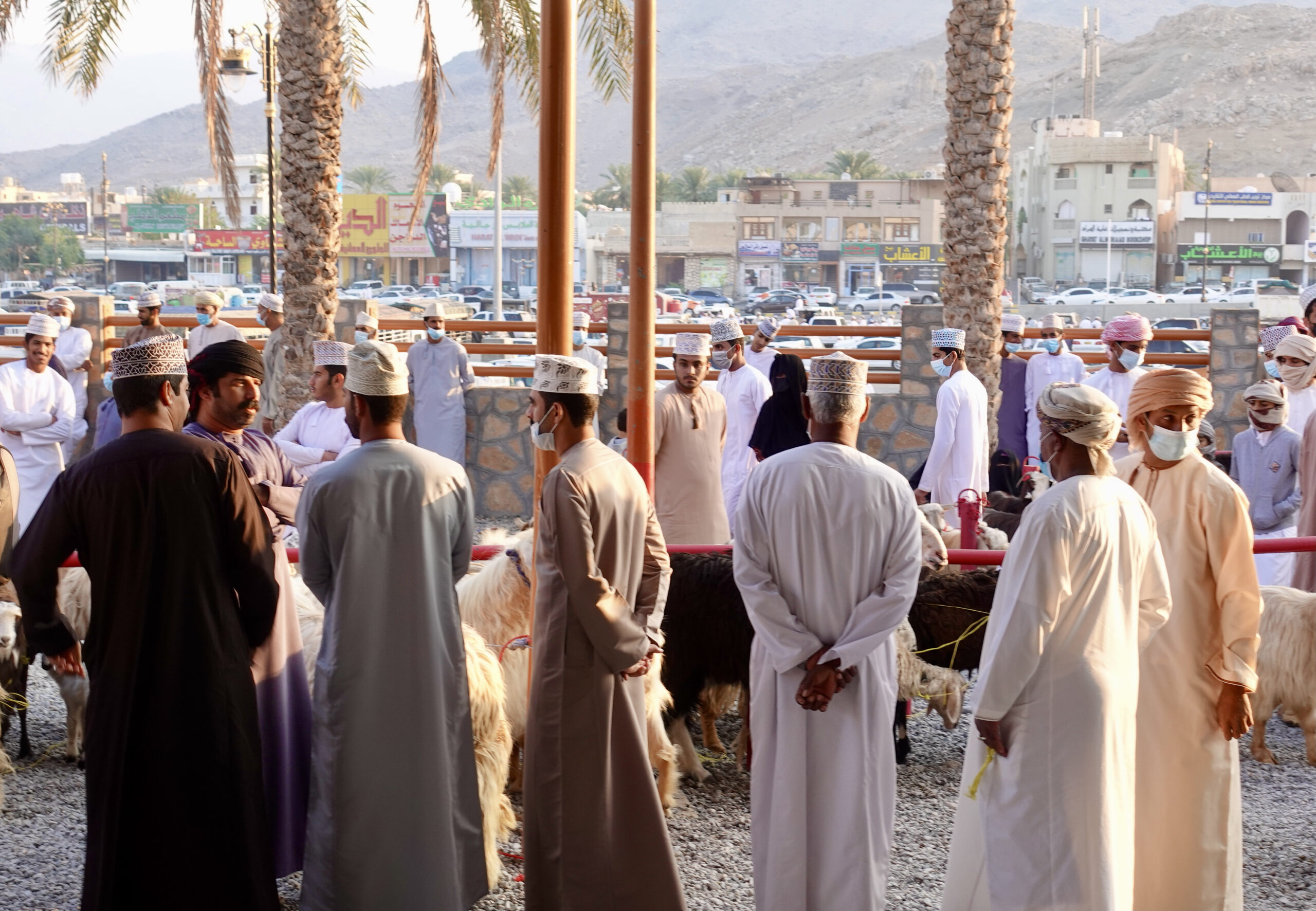
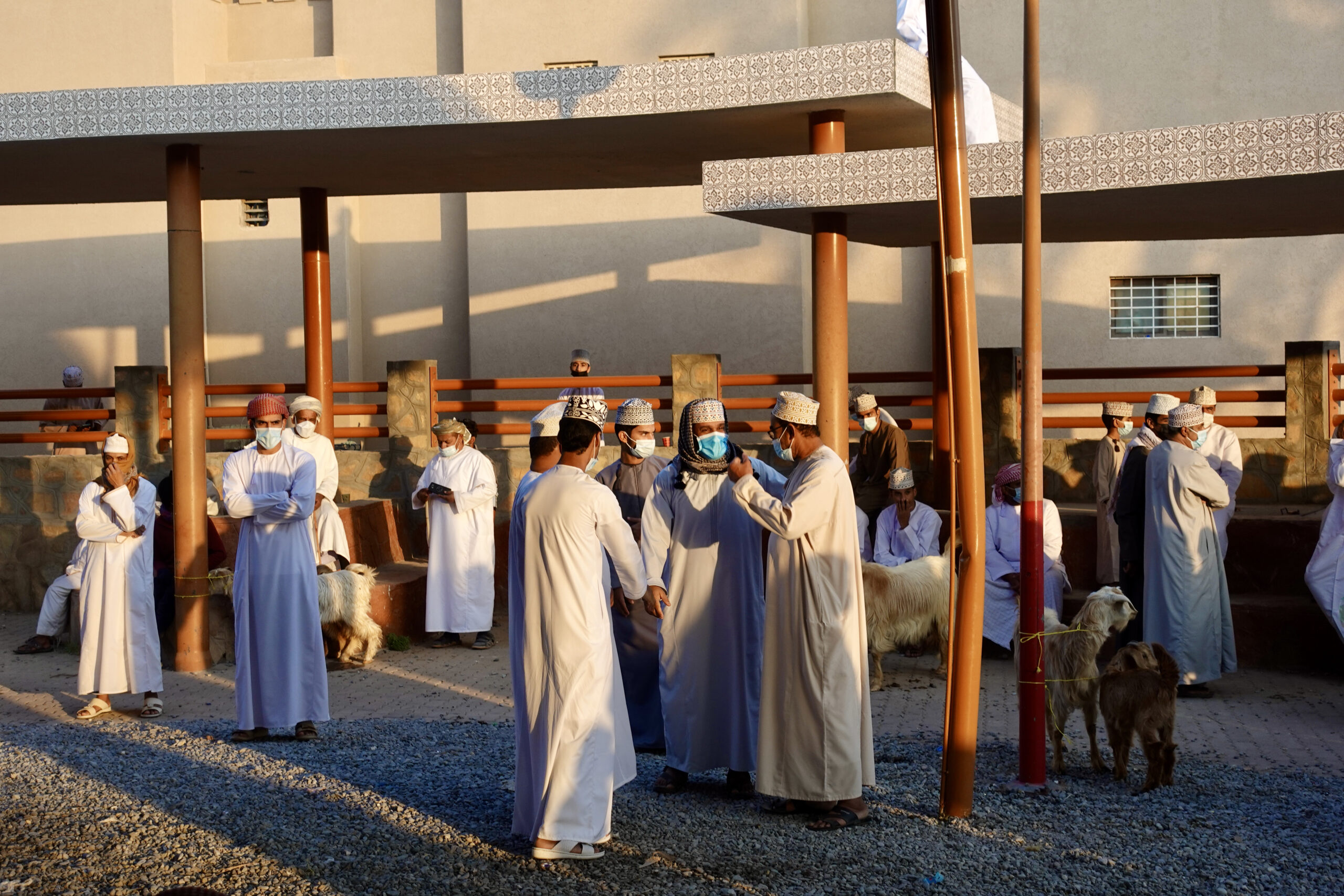

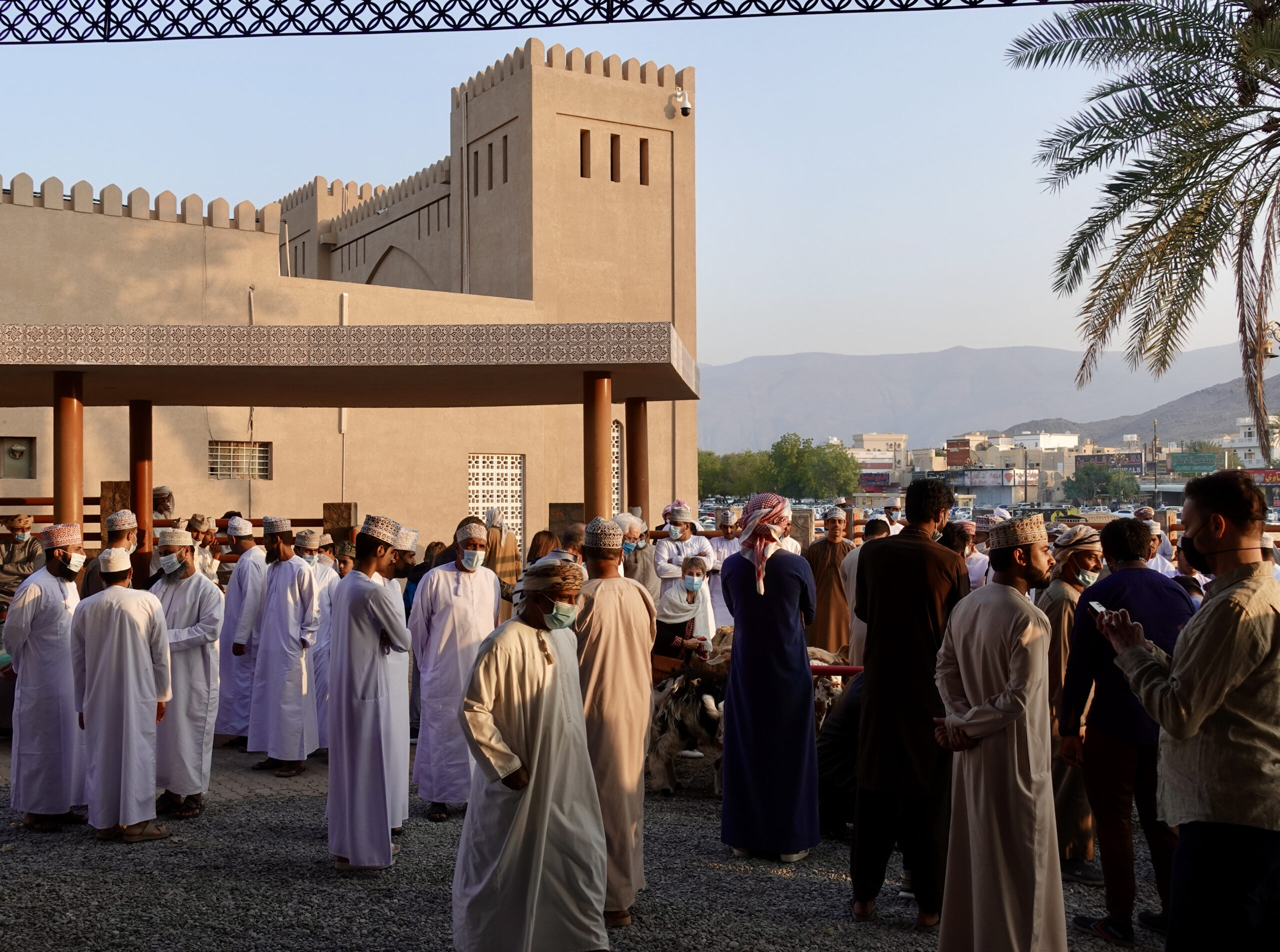
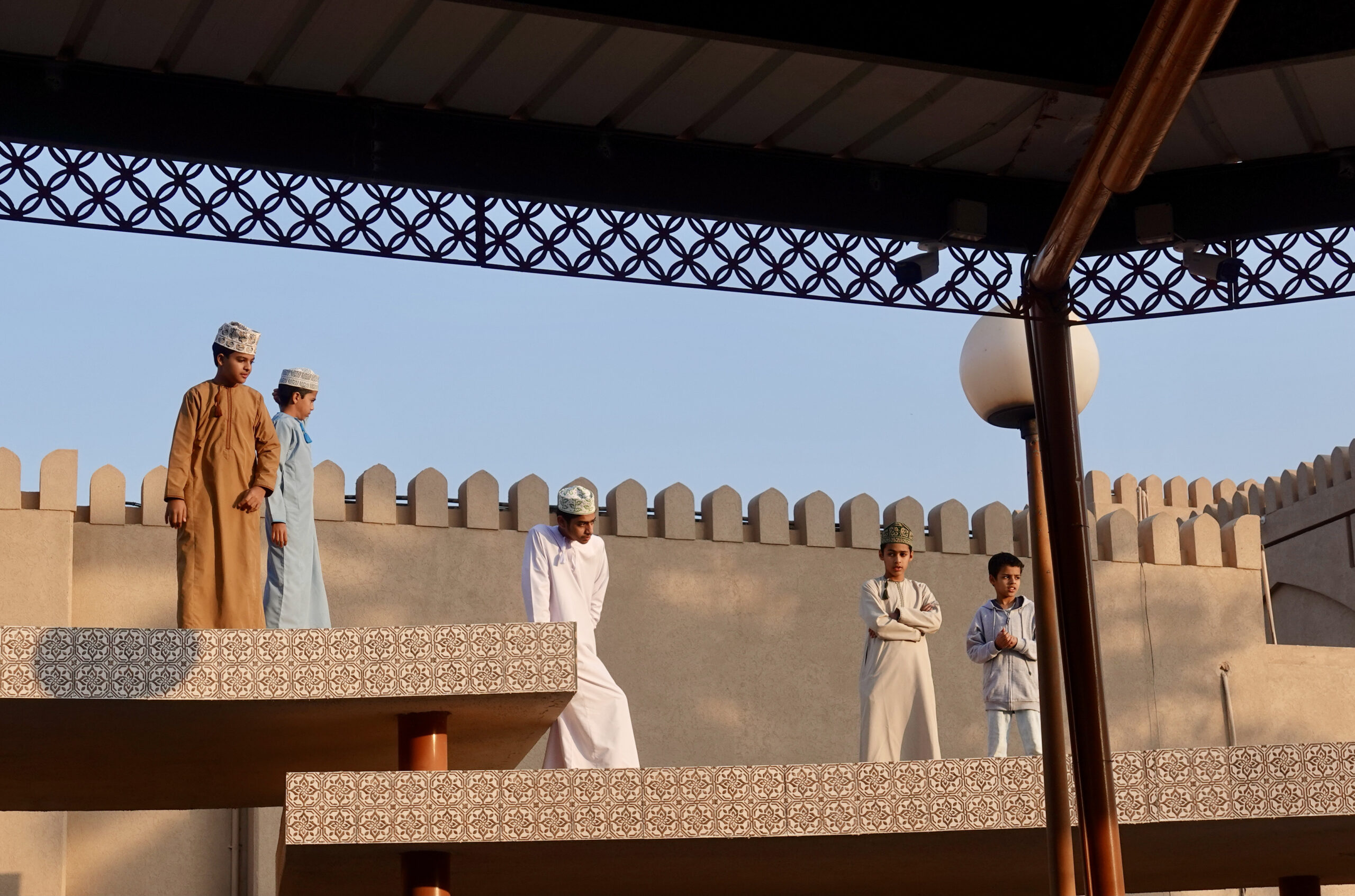
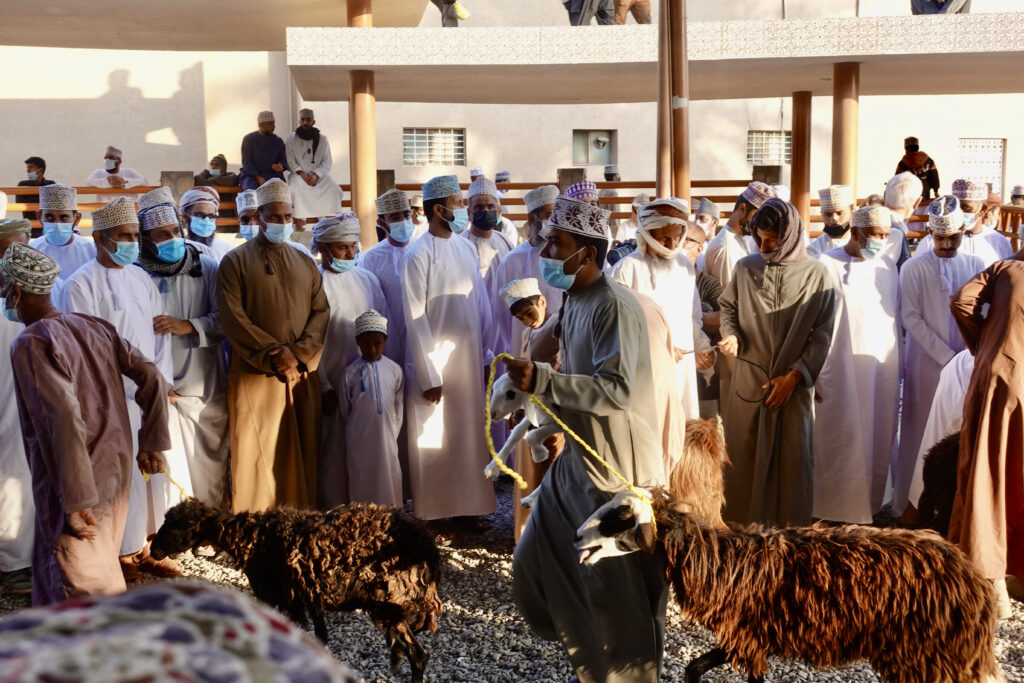
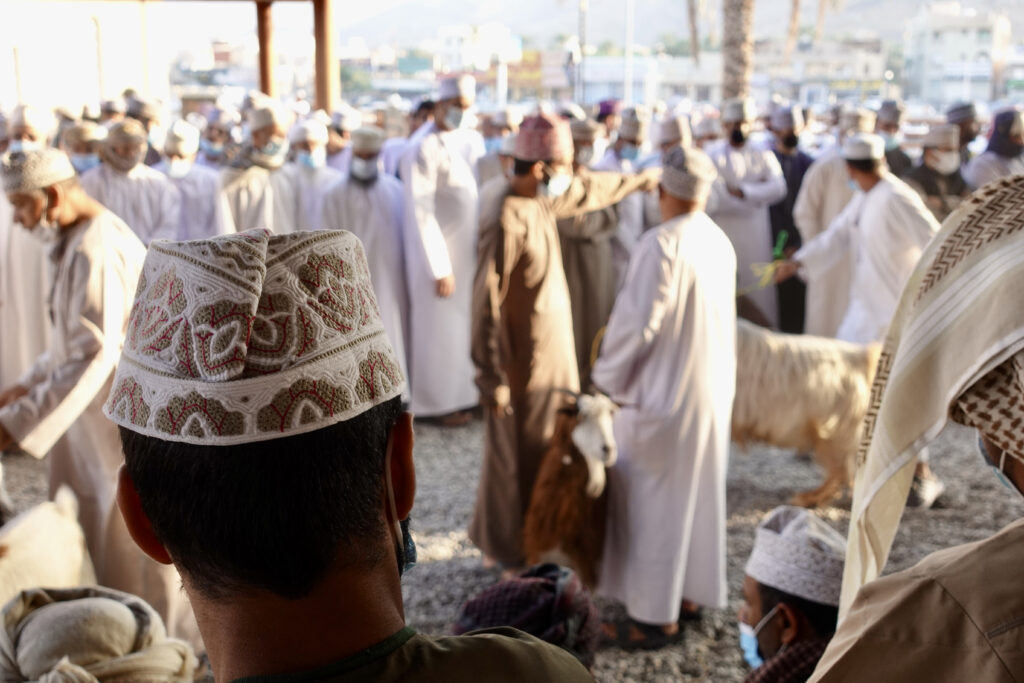
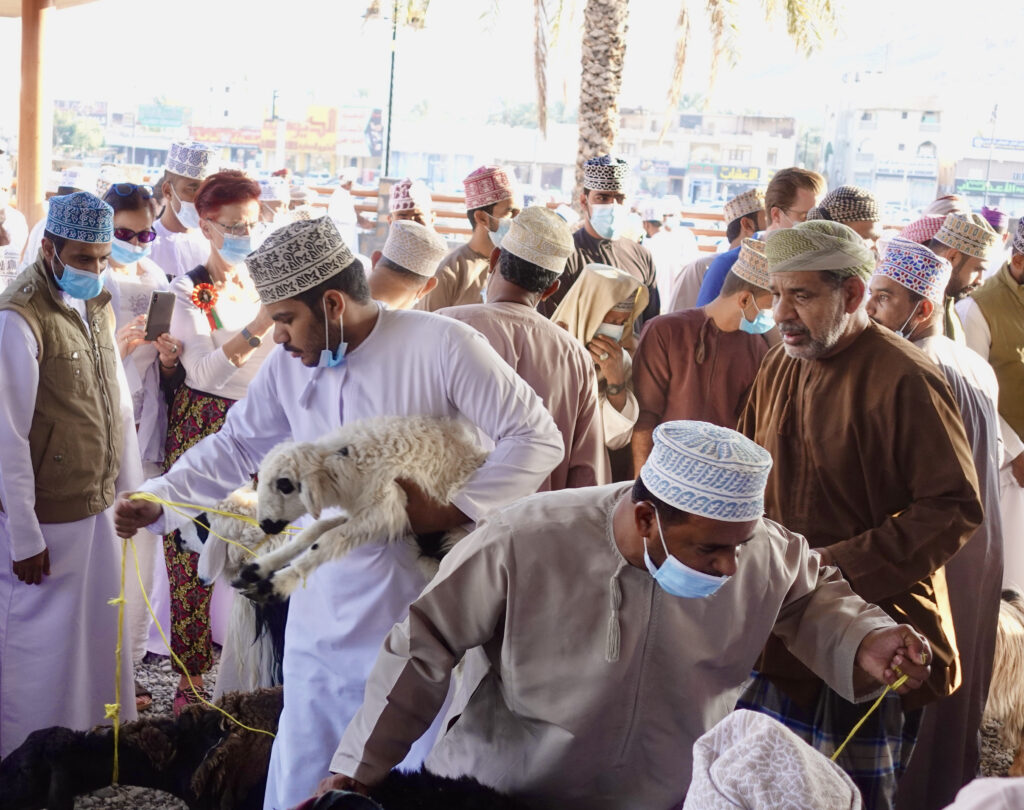
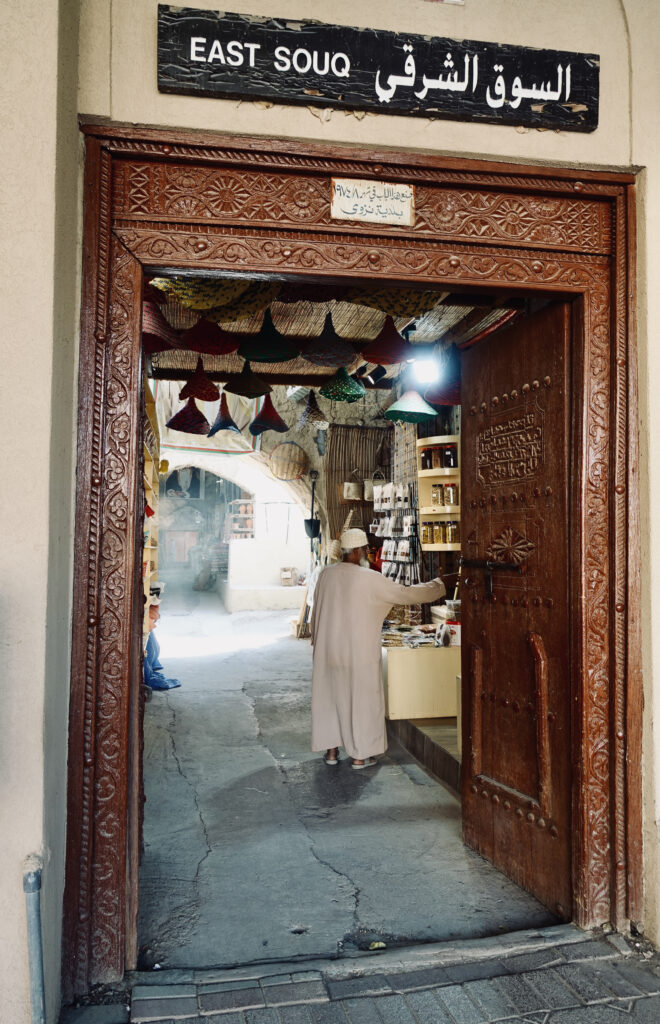
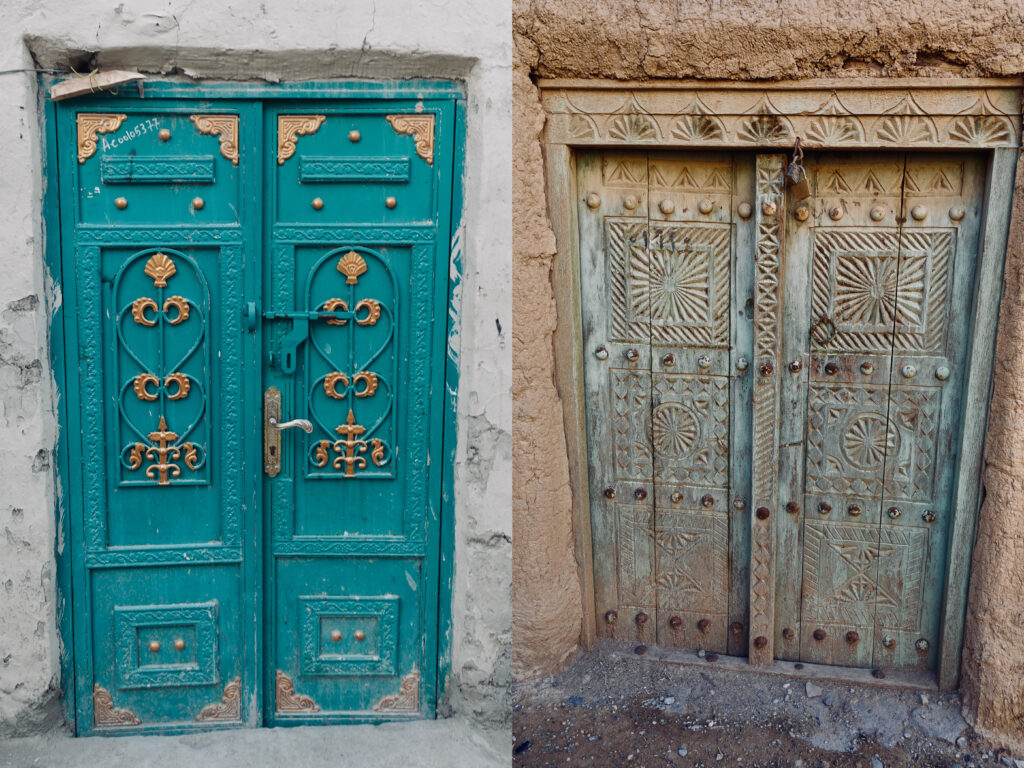
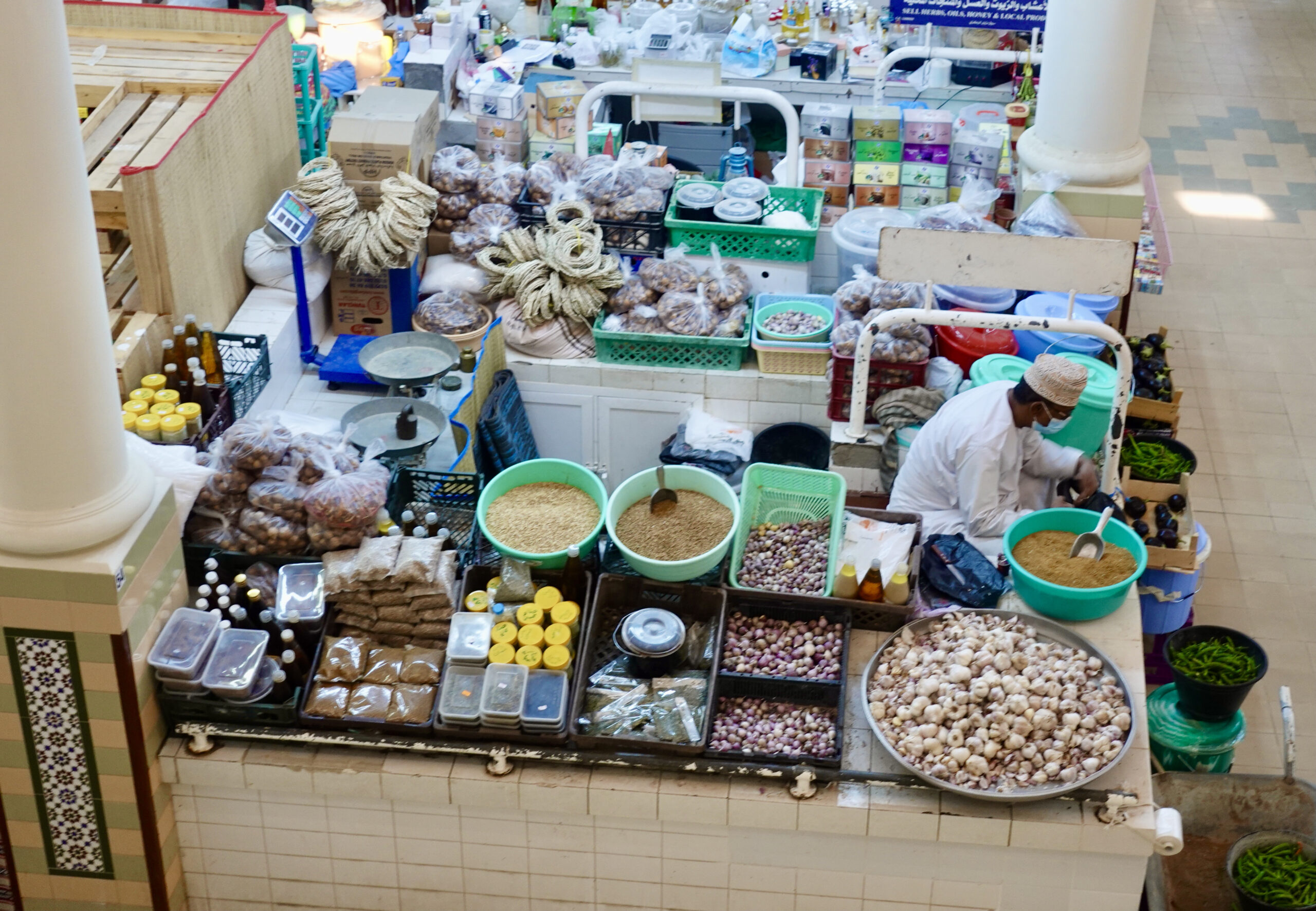
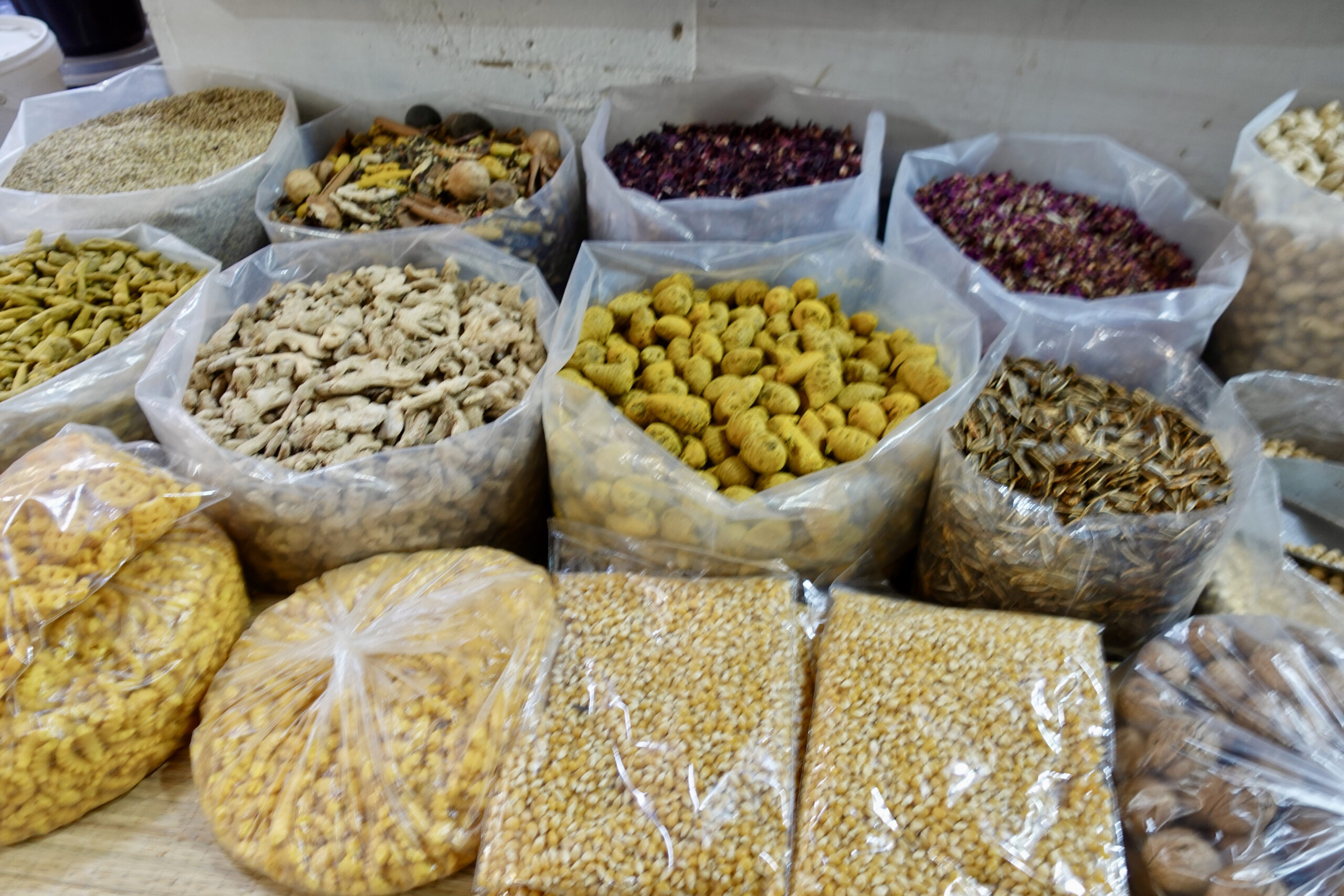
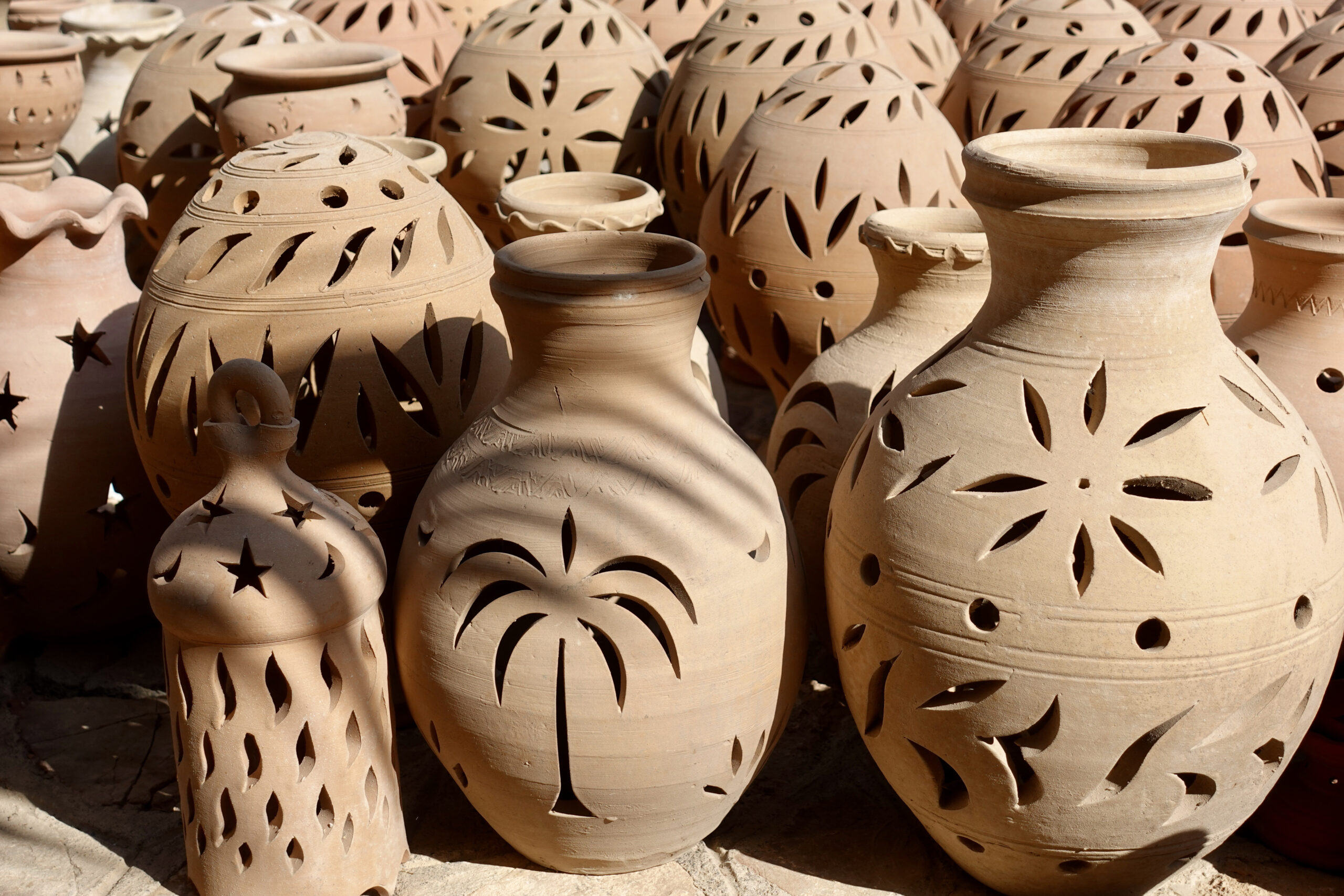

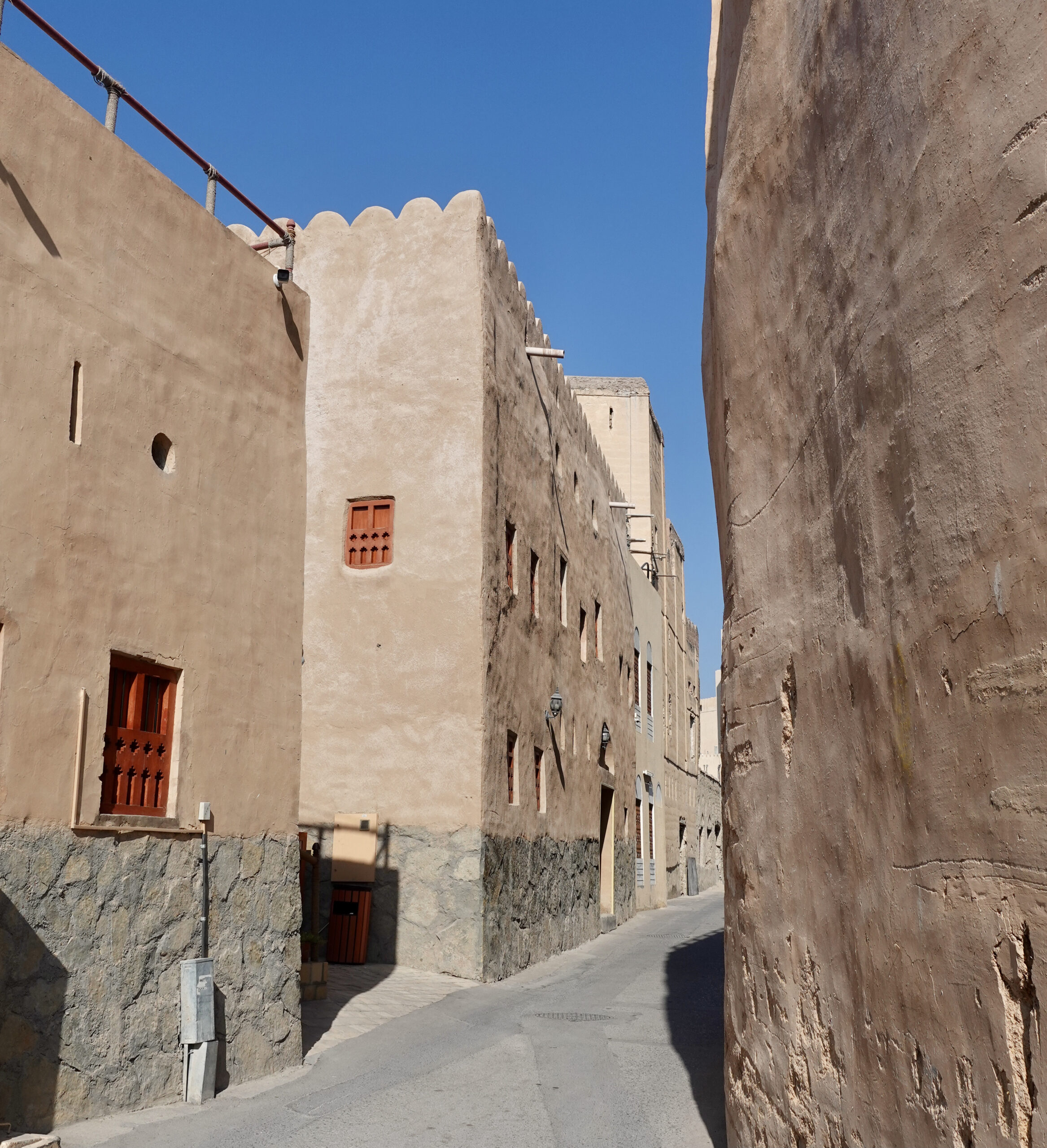
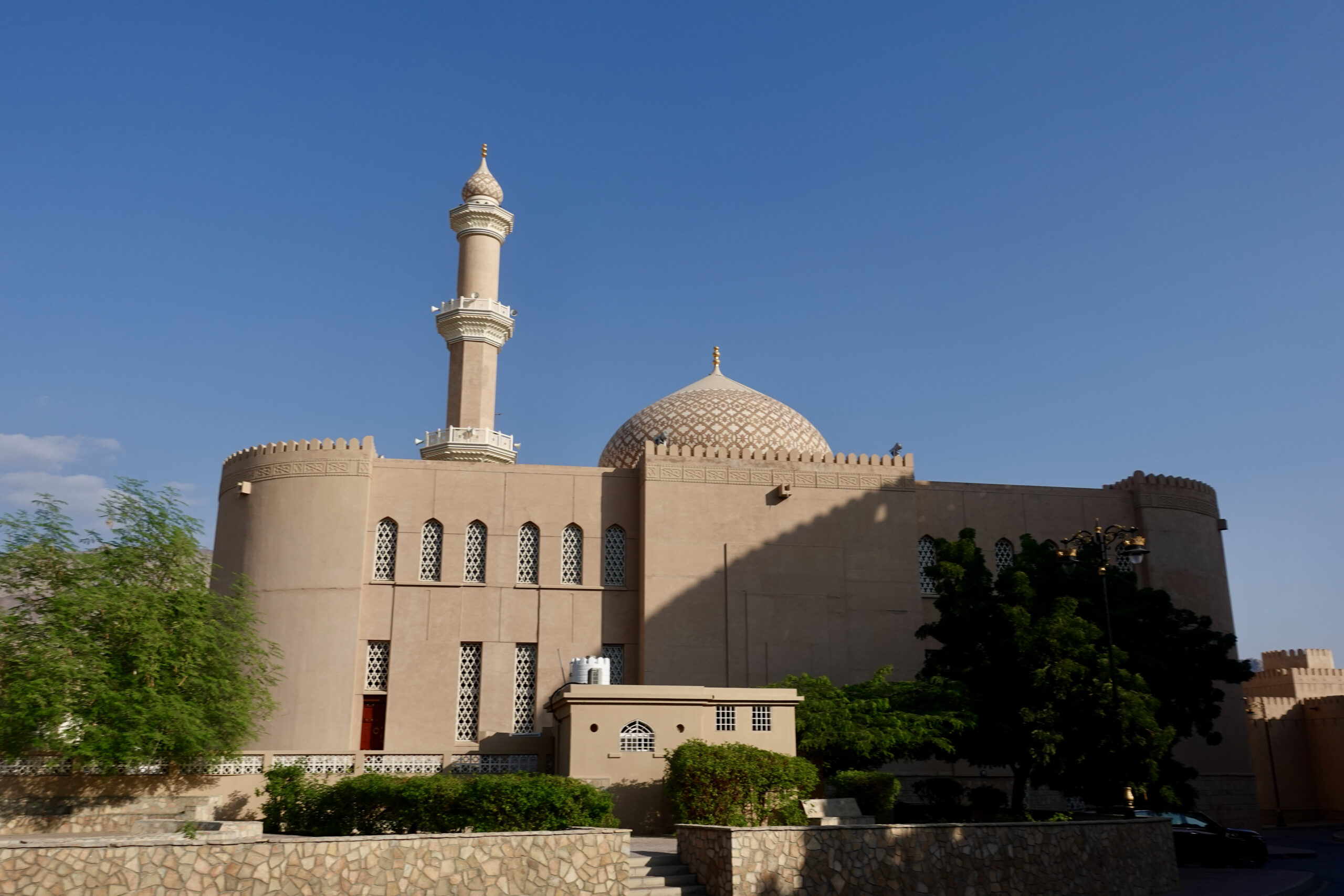
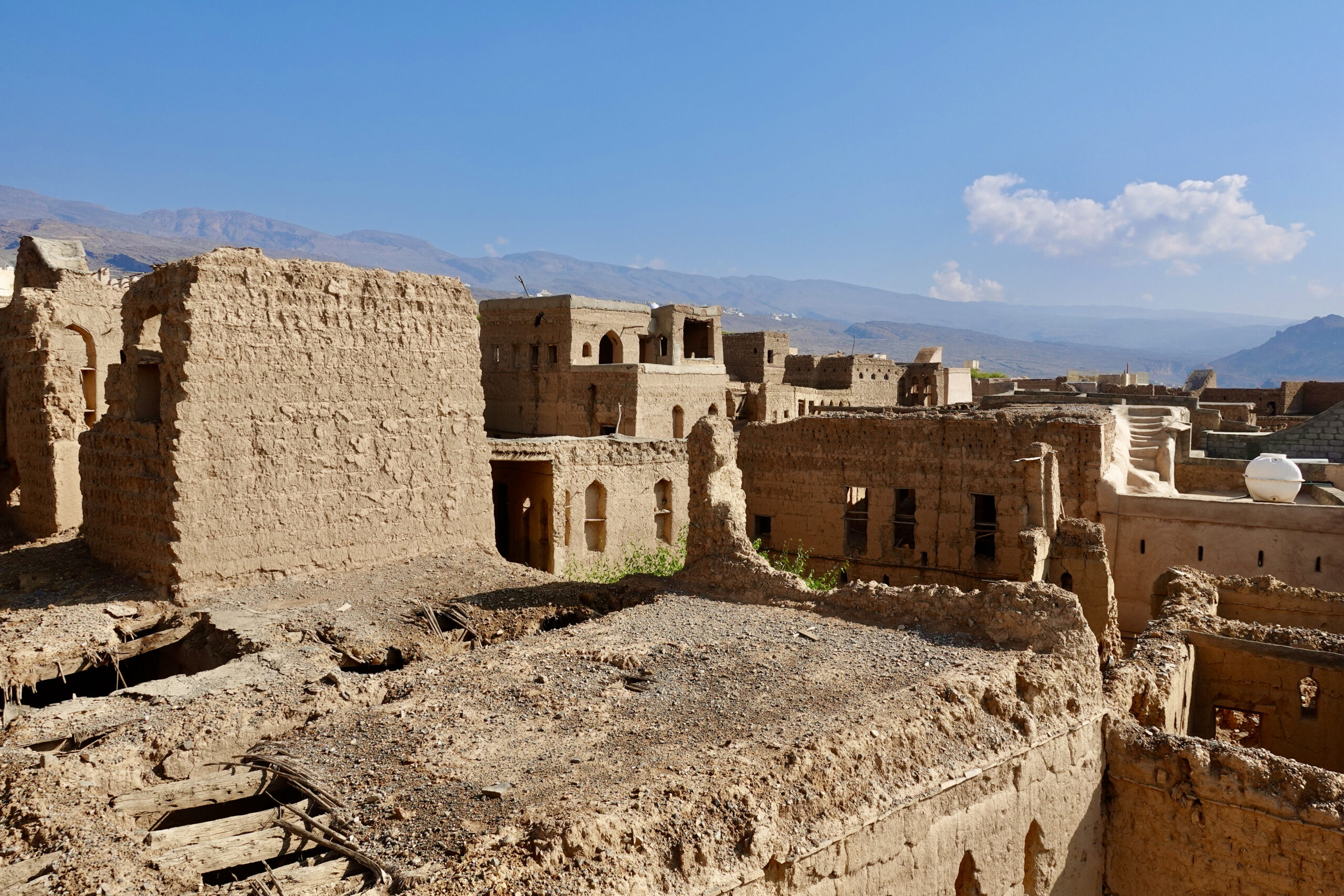
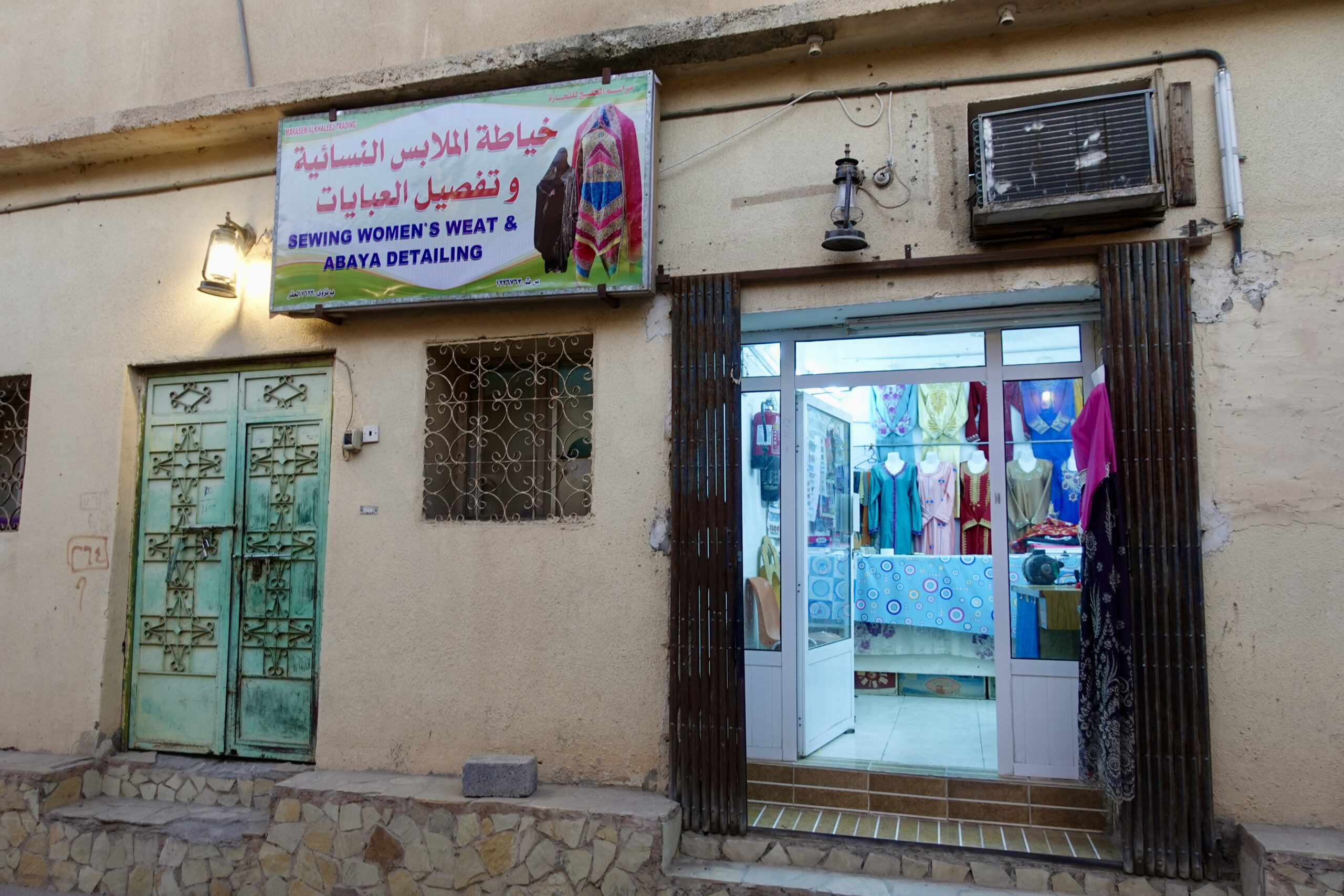
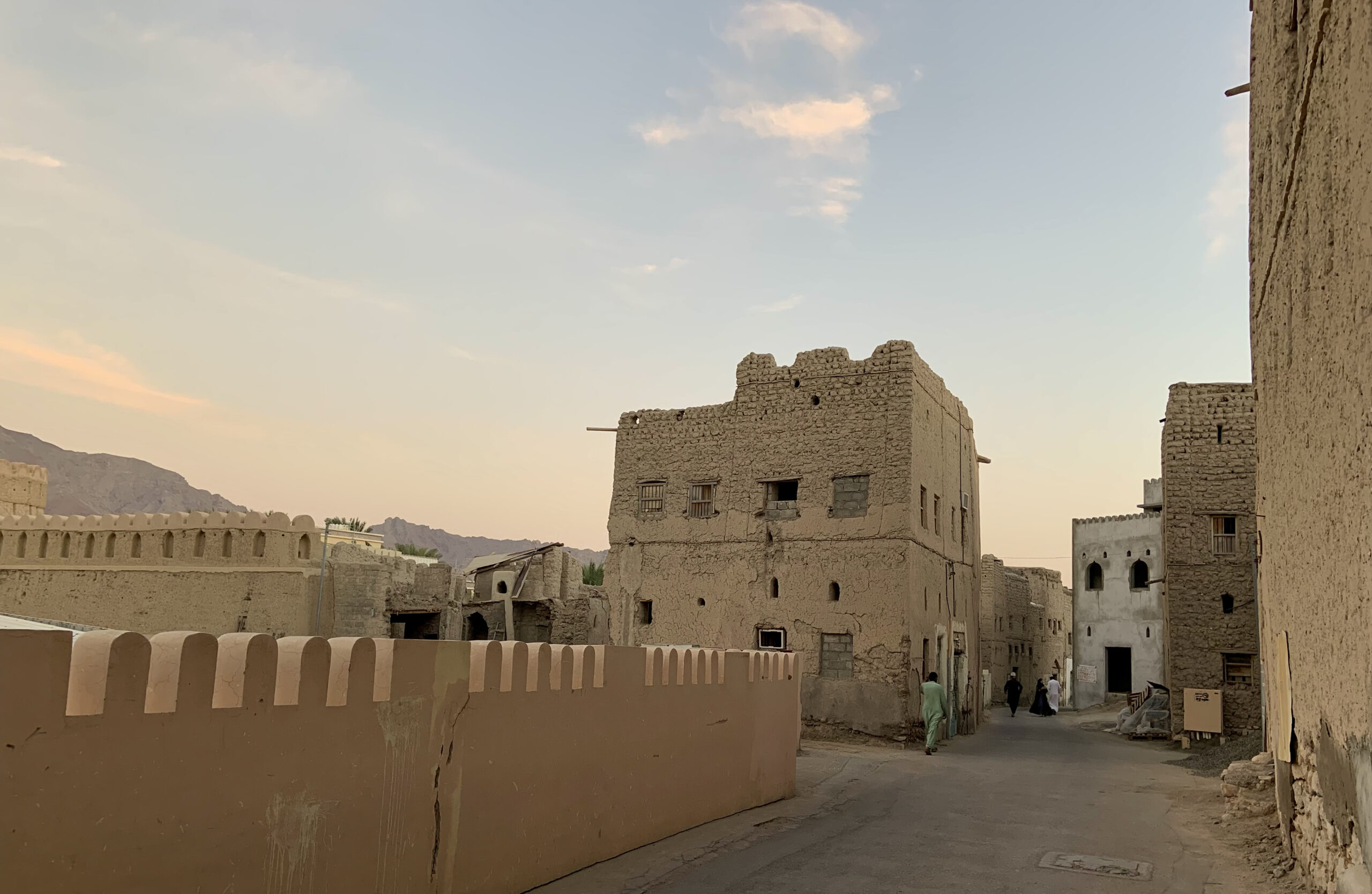
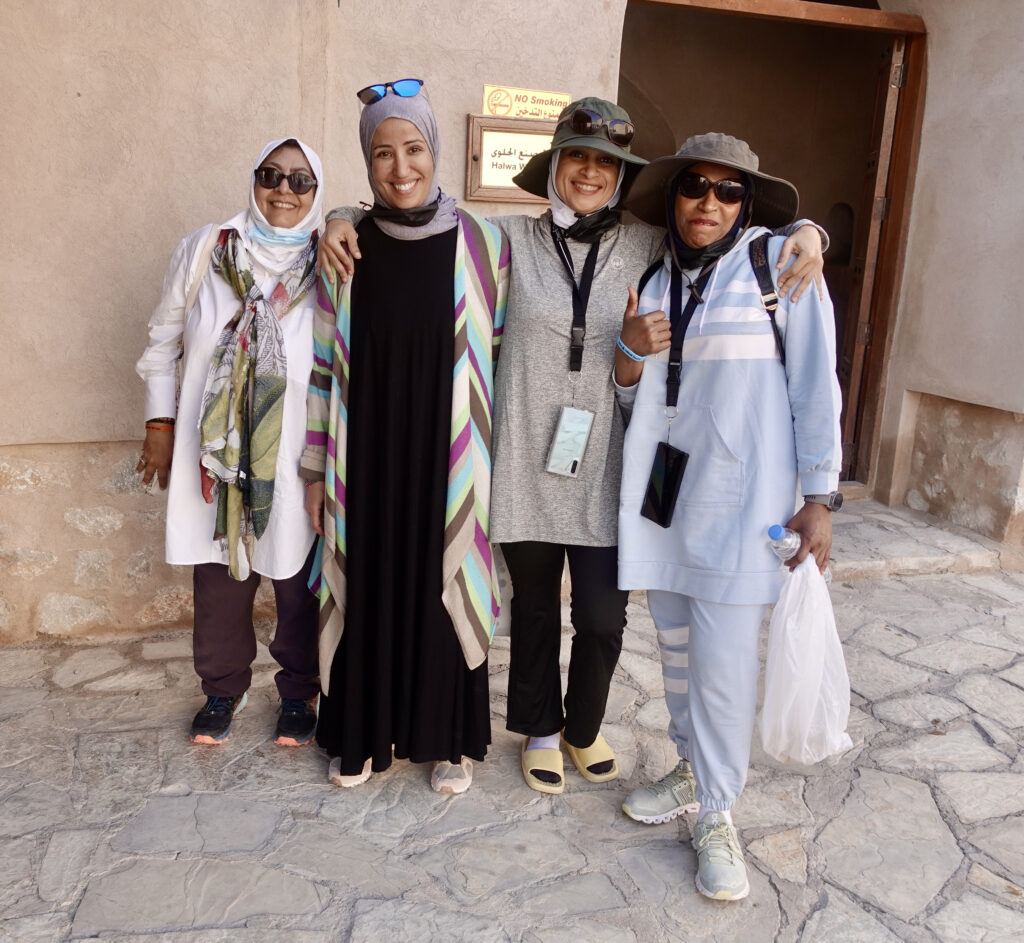


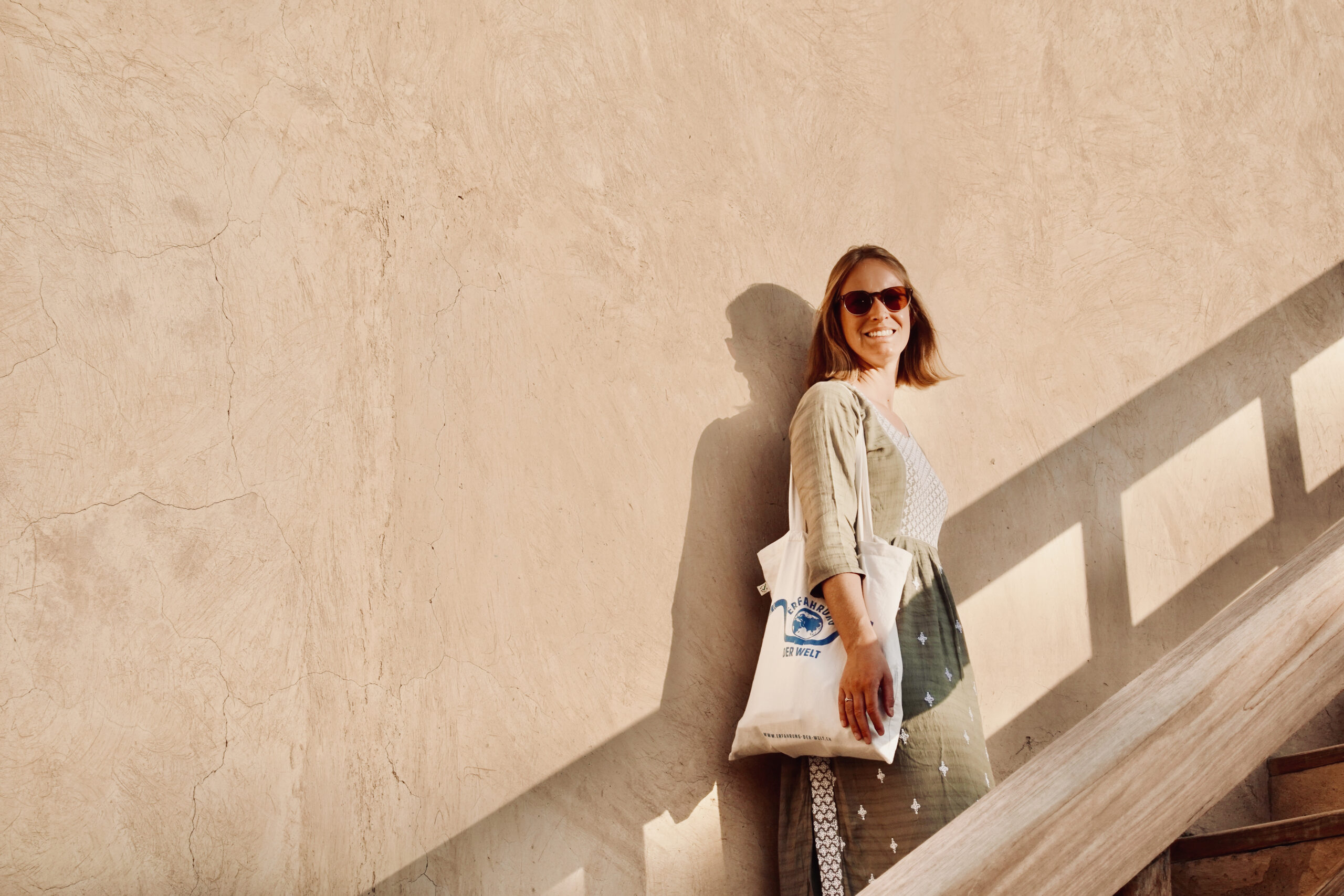




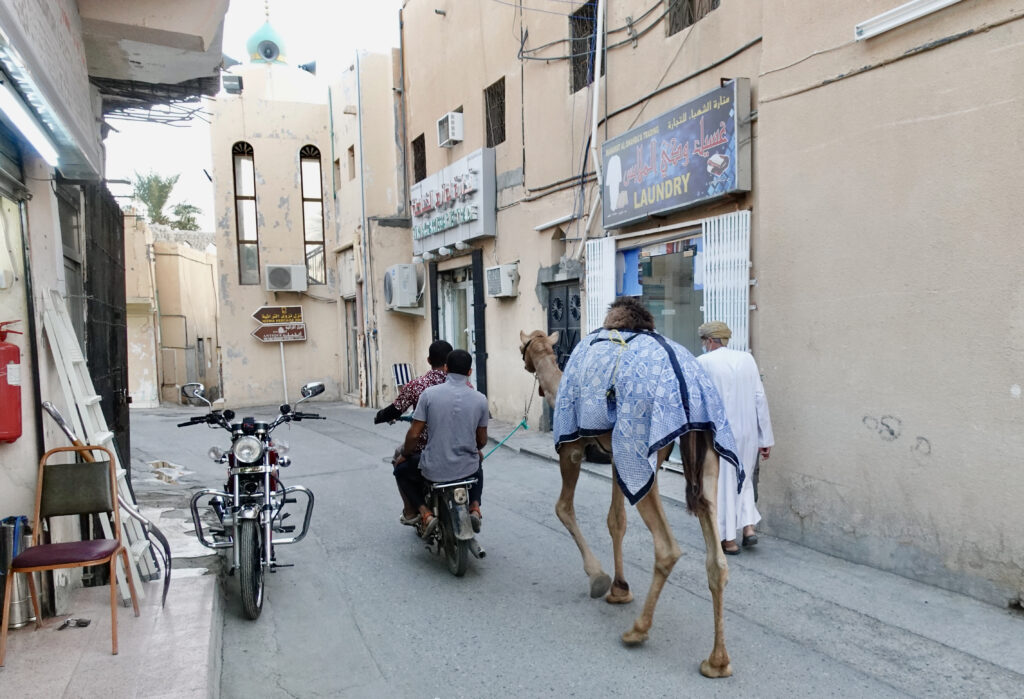
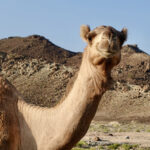
Leave a Reply